.....
BAROQUE SERIES... '24
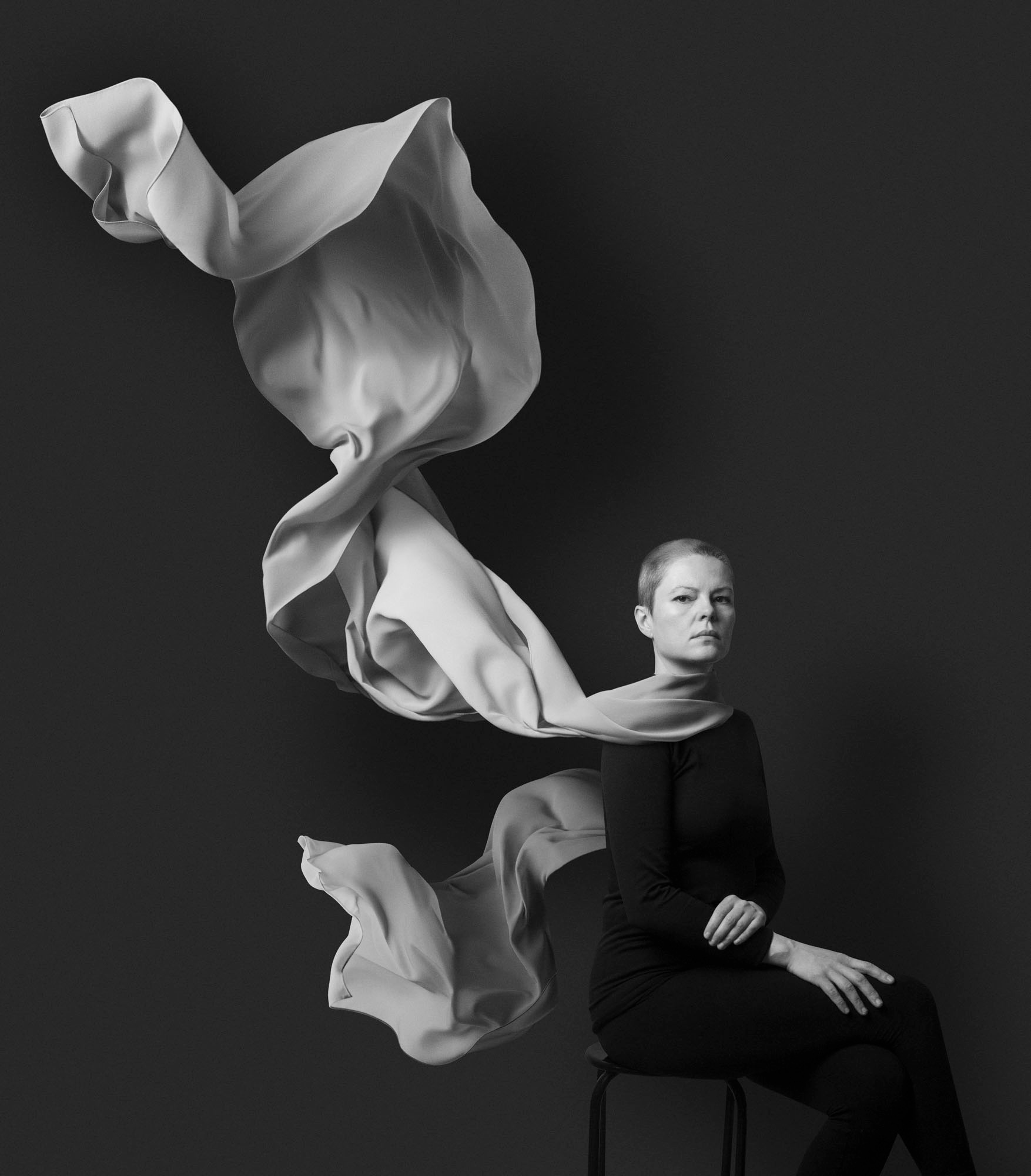
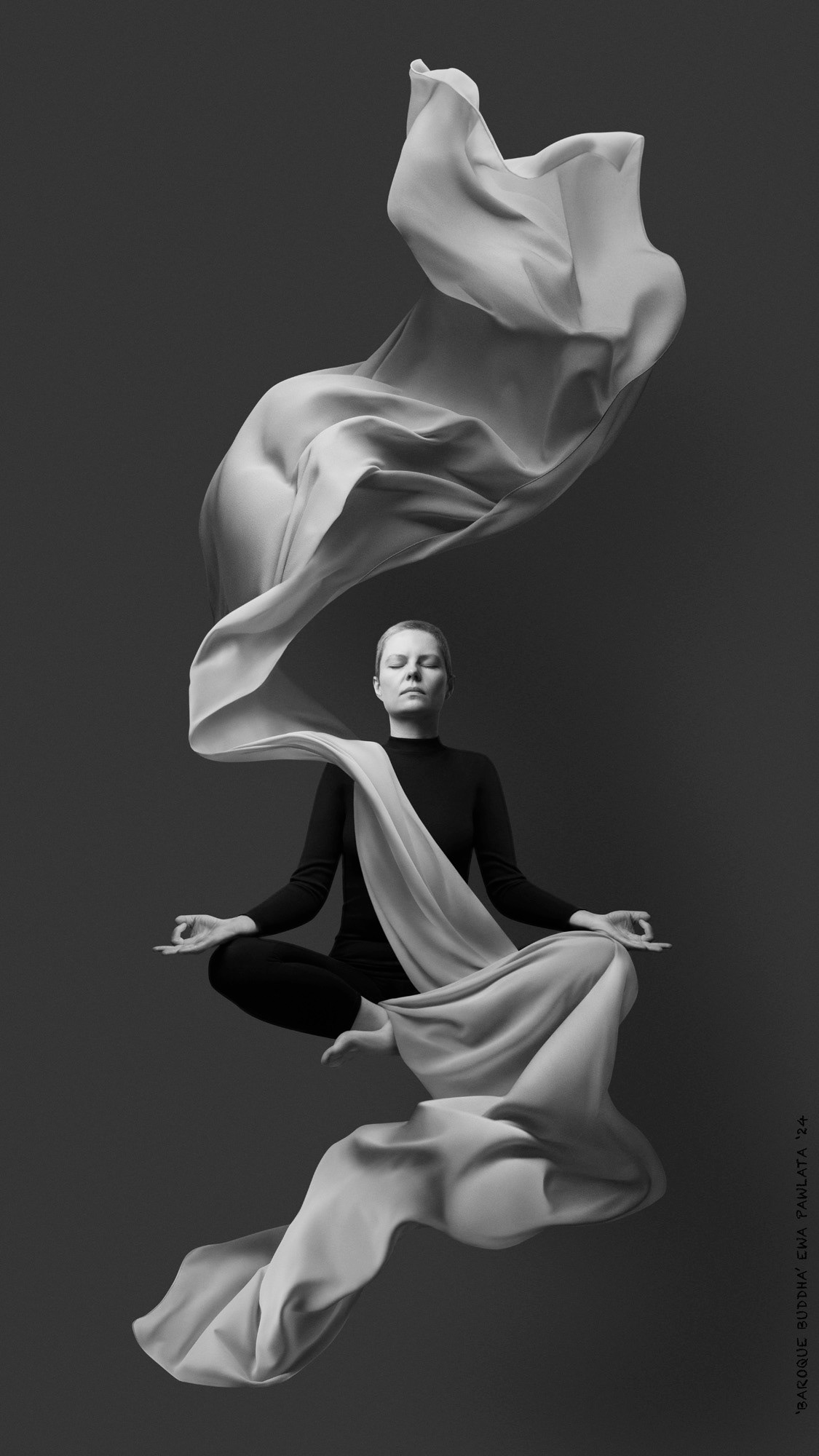
'SELF-PORTRAIT OF AN ARTIST' (Remake) AND 'BAROQUE BUDDHA'
WINGS - Decalcomania '24
Baroque series.. '20
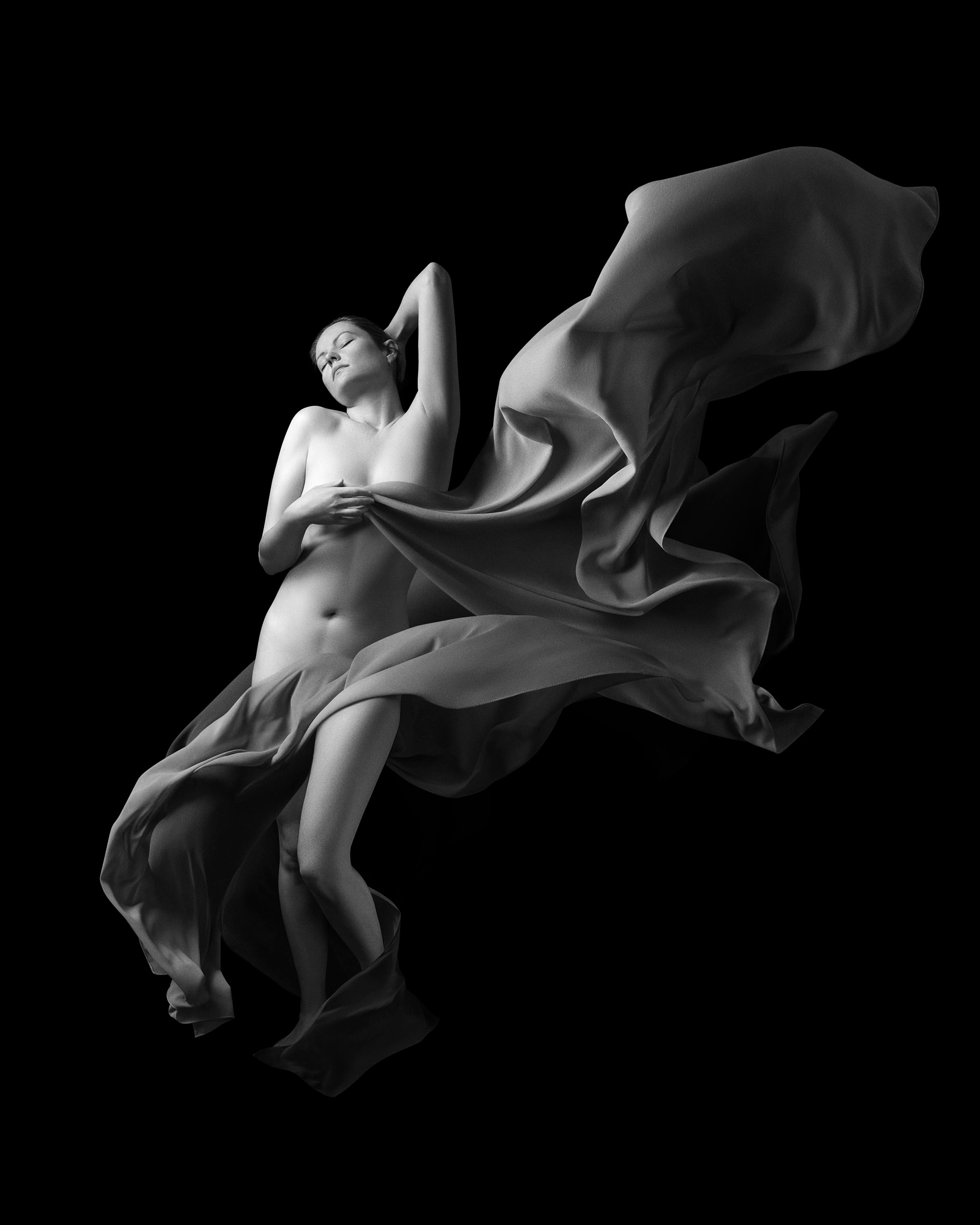
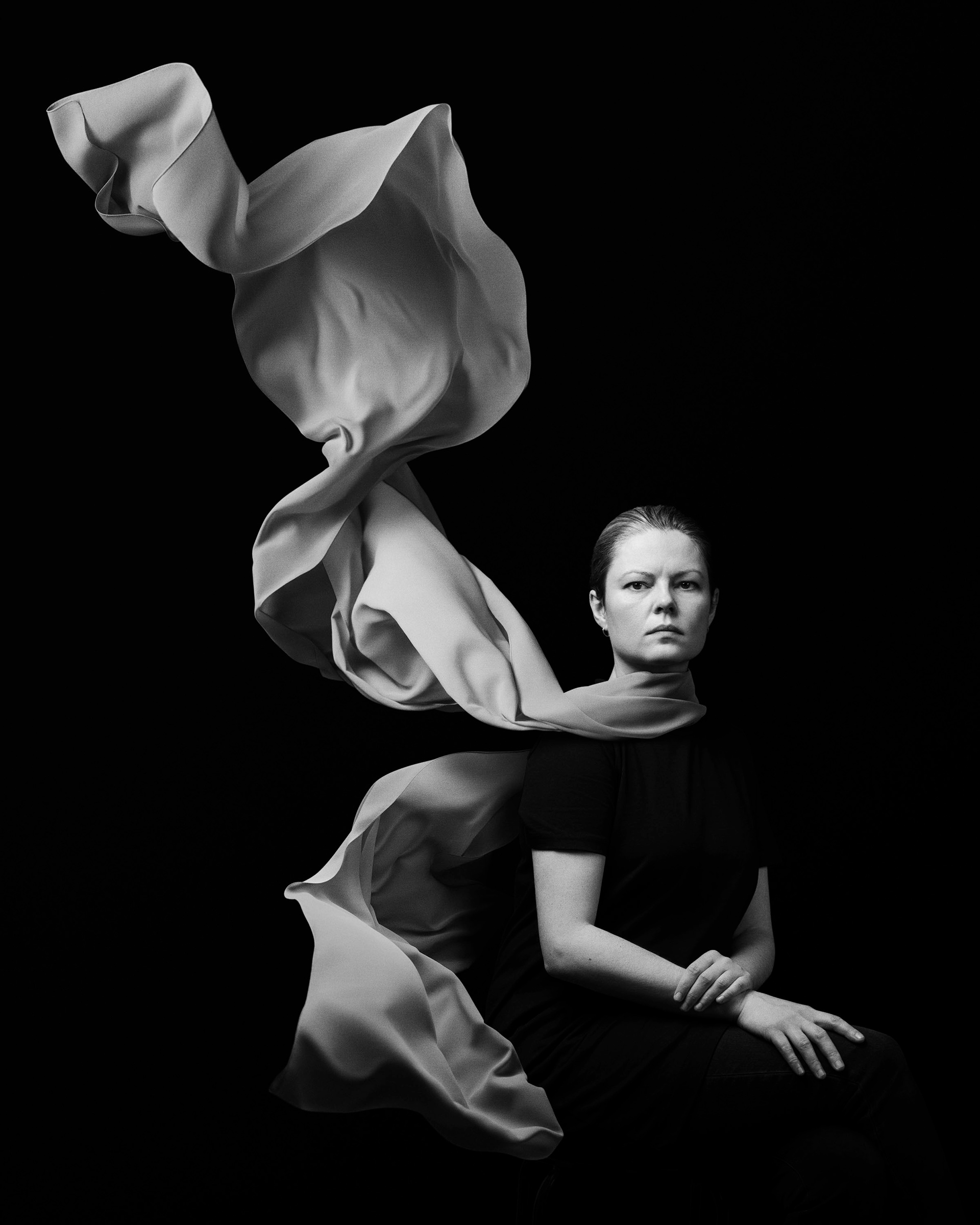
Baroque - series - 'Ascension', 'Self-portrait with a shawl' and 'Dying' 2020 - photographic composites inspired by the aesthetics of the Baroque period.
&
Self-portrait with a toilet paper (Winds of change) '20
'Self-portrait with a toilet paper (Winds of change) '20
The work was completed during the lockdown, but it actually began in 2019, when I inexplicably started photographing toilet paper. Soon after, circumstances shifted dramatically, and toilet paper, once mundane, became both scarce and valuable. I finished the piece in March 2020, ironically without any toilet paper at home, but with its photographs and plenty of time. At that point, I added the second part of the title, "Winds of Change." While toilet paper is readily available now, this work will always stand as a peculiar memorial to the lockdown period and as a poignant example of how the meaning of a work is inseparable from its context.
Decalcomania..
'Decalcomania is a blotting process whereby paint is squeezed between two surfaces to create a mirror image. The most common example of decalcomania involves applying paint to paper then folding it, applying pressure and then unfolding the paper to reveal a mirror pattern. Decalcomania is most commonly associated with the surrealist painters Max Ernst and Oscar Dominguez, who would use the technique and then turn the resulting patterns into landscapes and mythical creatures.'
Decalcomania is also known as a Rorschach inkblot test which is 'a projective method of psychological testing in which a person is asked to describe what he or she sees in 10 inkblots, of which some are black or grey and others have patches of colour. The test was introduced in 1921 by Swiss psychiatrist Hermann Rorschach.'
Although I explore the decalcomania technique in search of beautiful, fascinating and unexpected shapes, I have learned to control those shapes to some degree and, ironically, I'm able to make them look pretty suggestive.
Decalcomania is also known as a Rorschach inkblot test which is 'a projective method of psychological testing in which a person is asked to describe what he or she sees in 10 inkblots, of which some are black or grey and others have patches of colour. The test was introduced in 1921 by Swiss psychiatrist Hermann Rorschach.'
Although I explore the decalcomania technique in search of beautiful, fascinating and unexpected shapes, I have learned to control those shapes to some degree and, ironically, I'm able to make them look pretty suggestive.
DECALCOMANIA ..2019
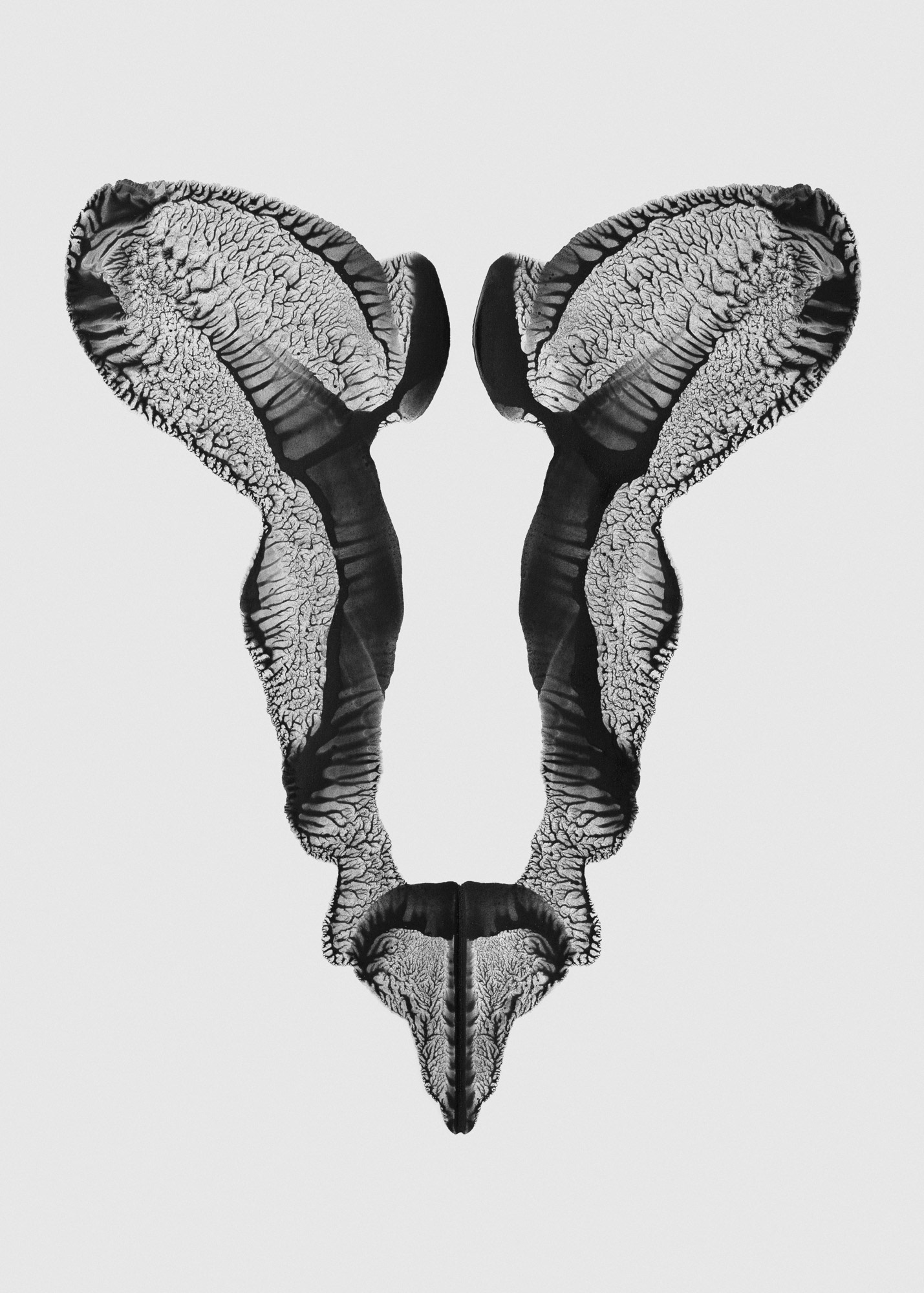
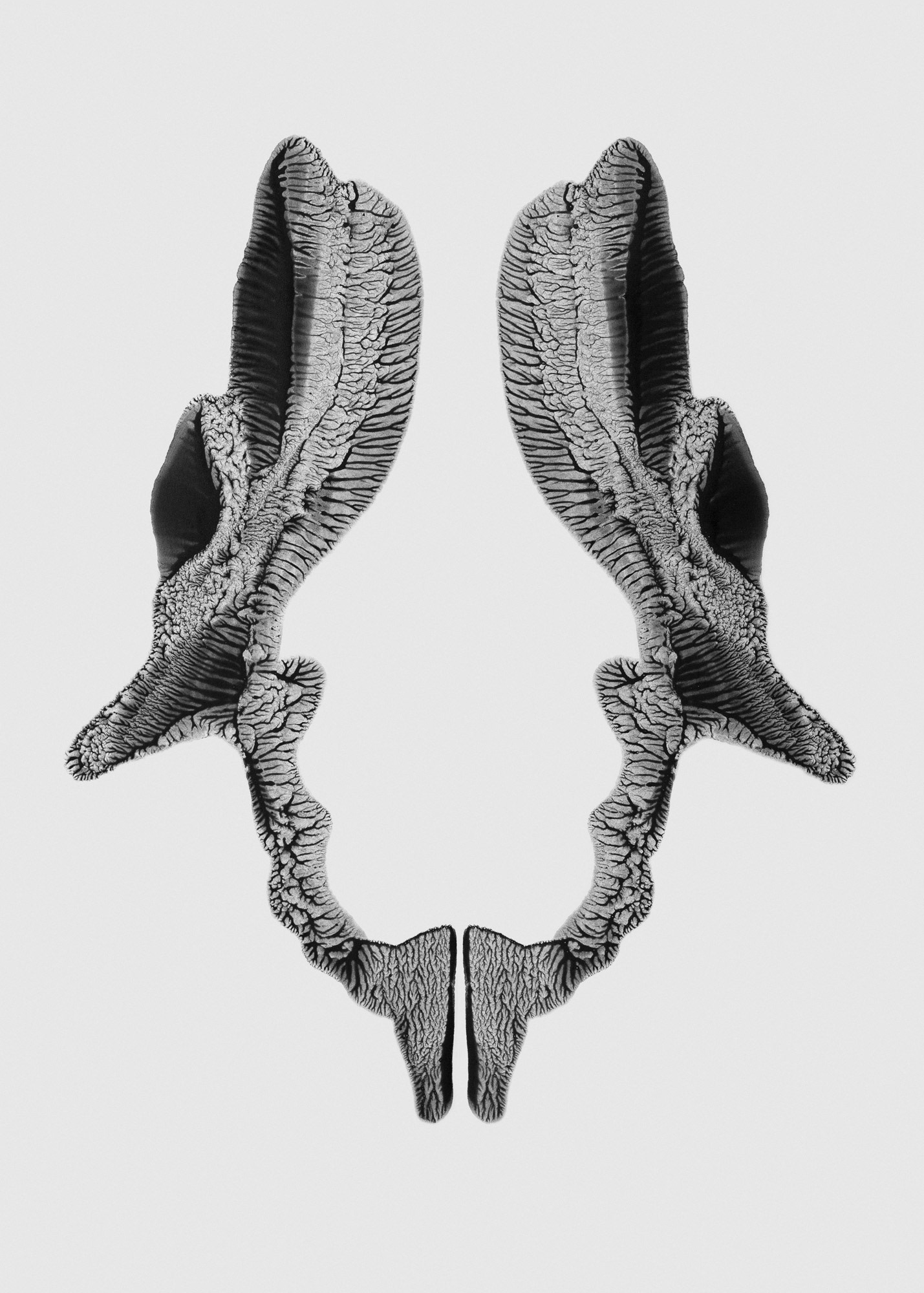
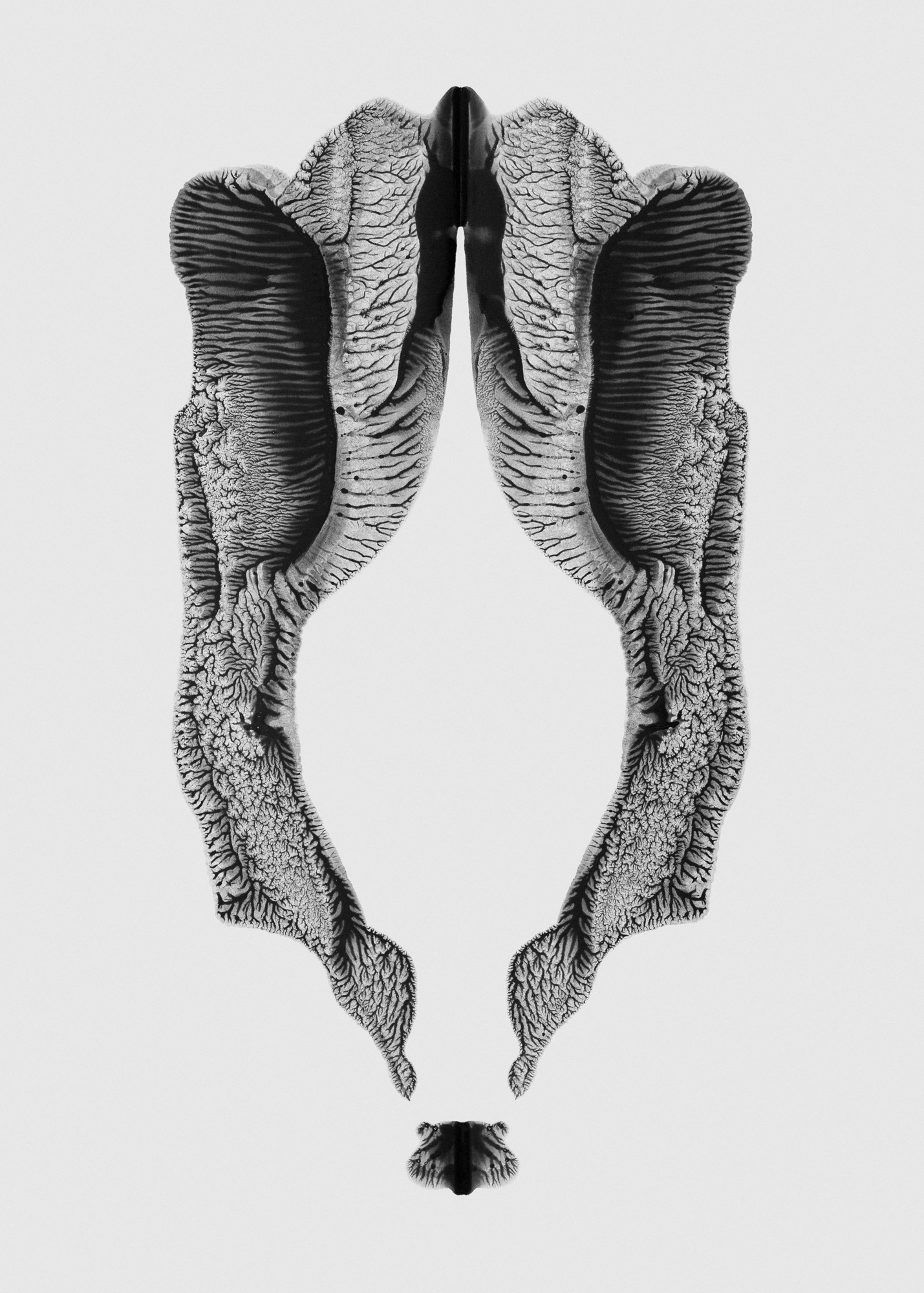
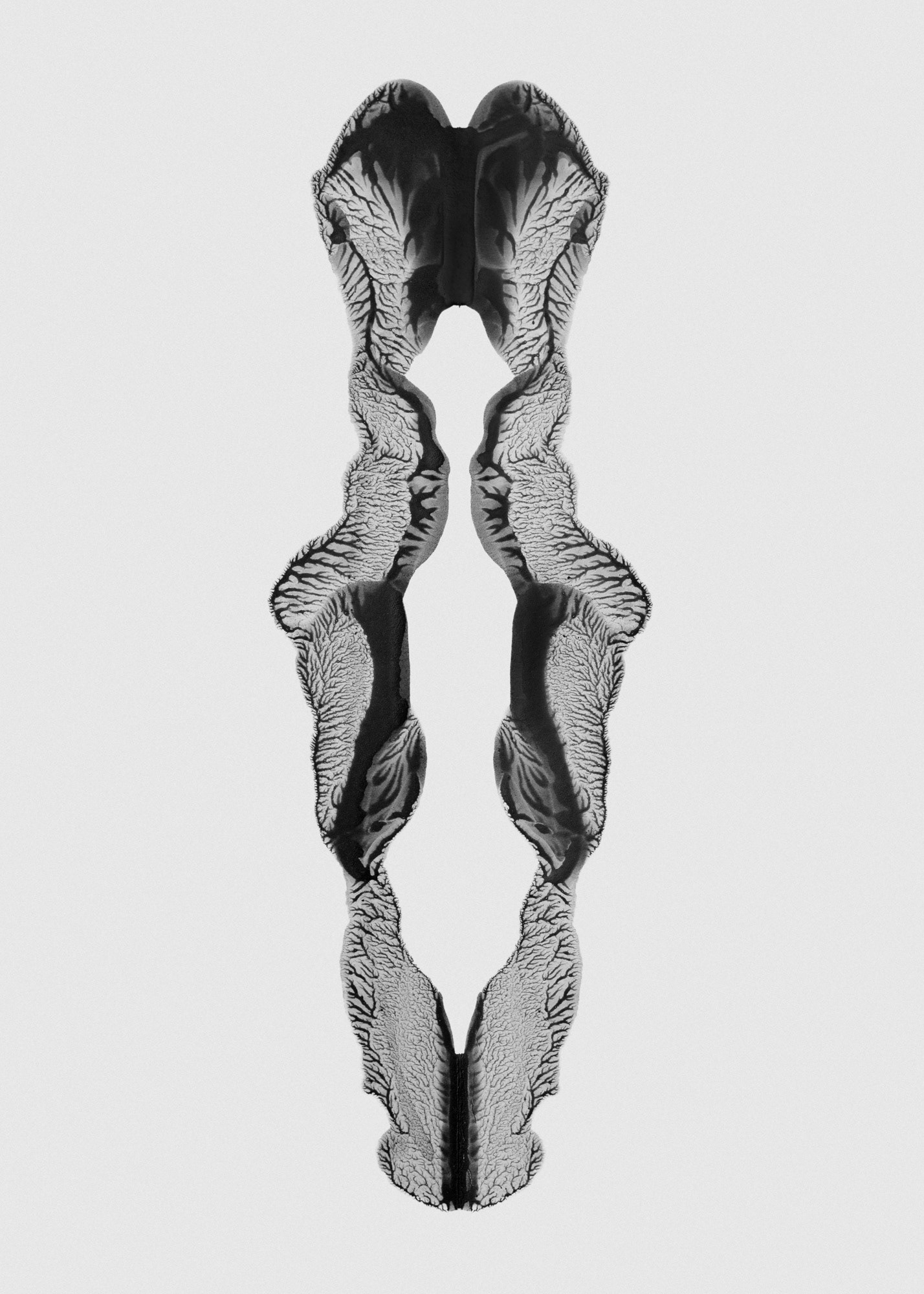
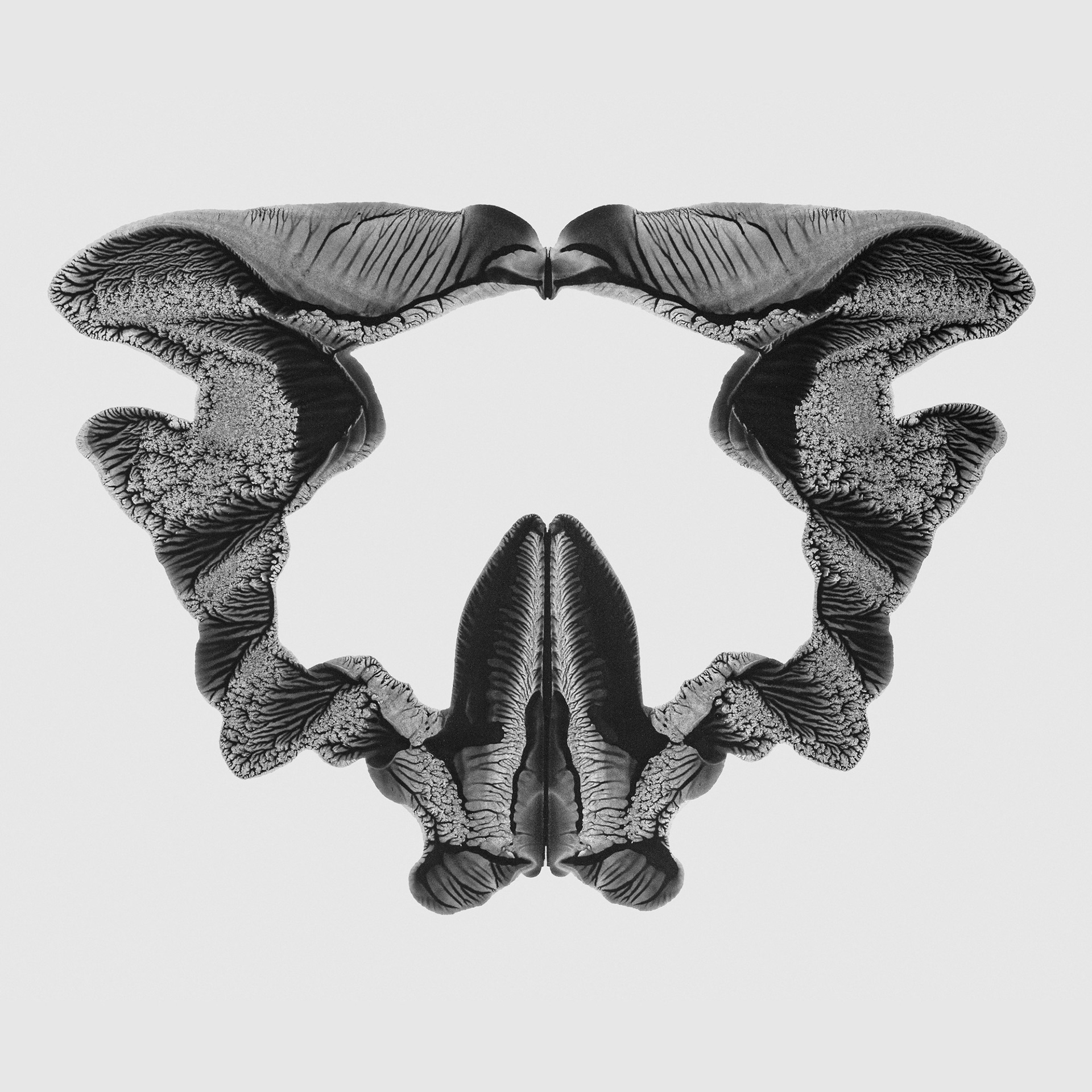
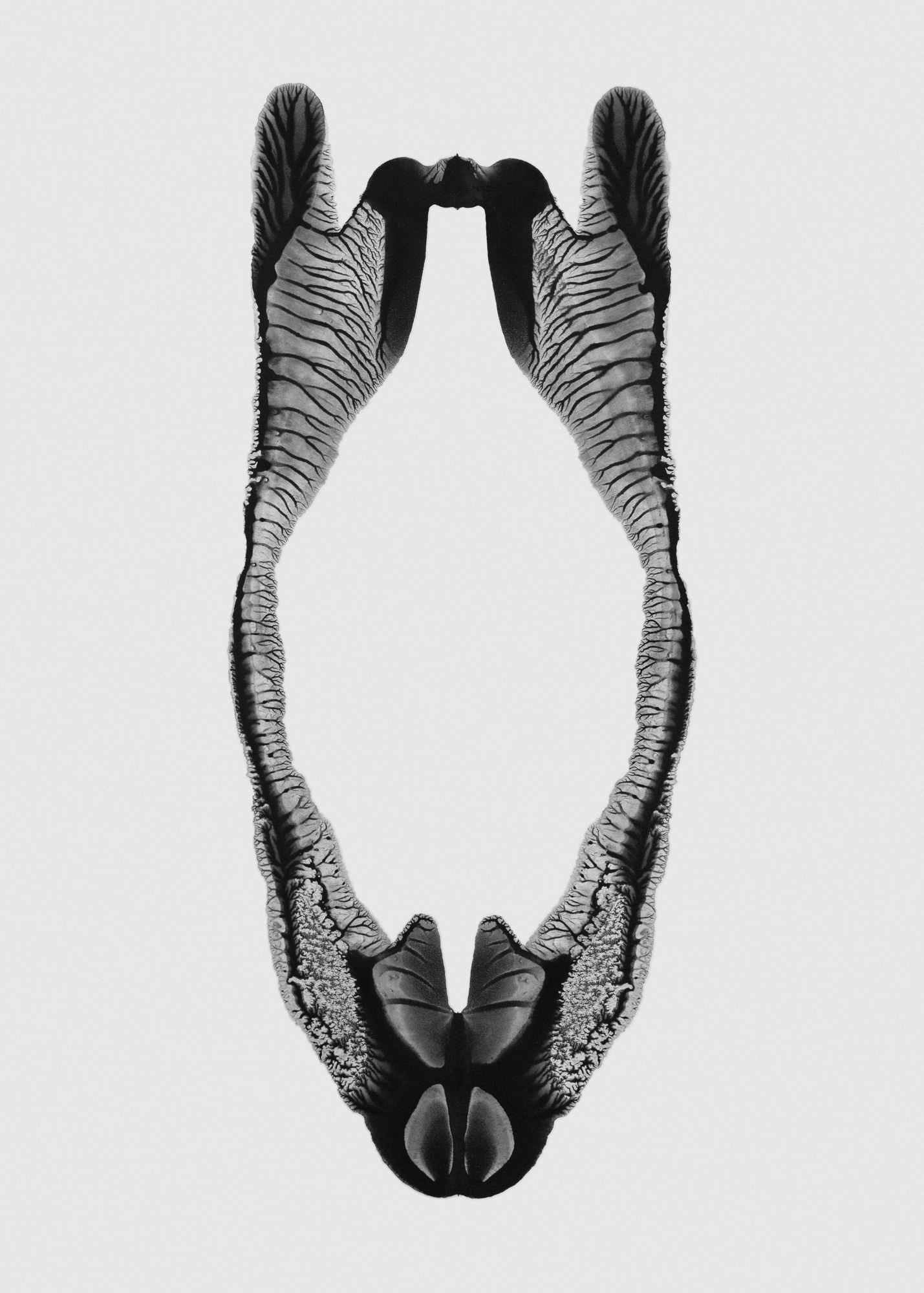
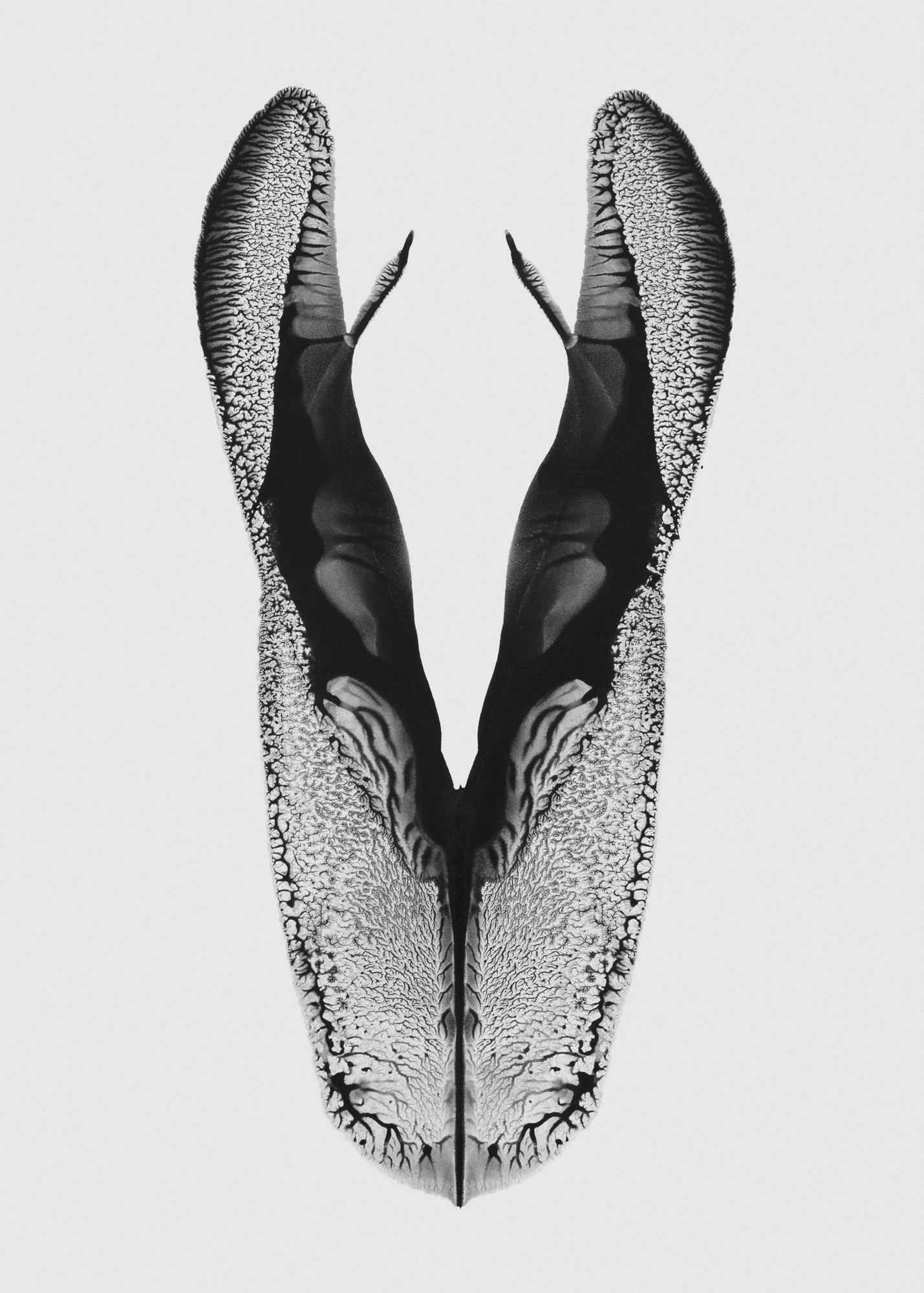
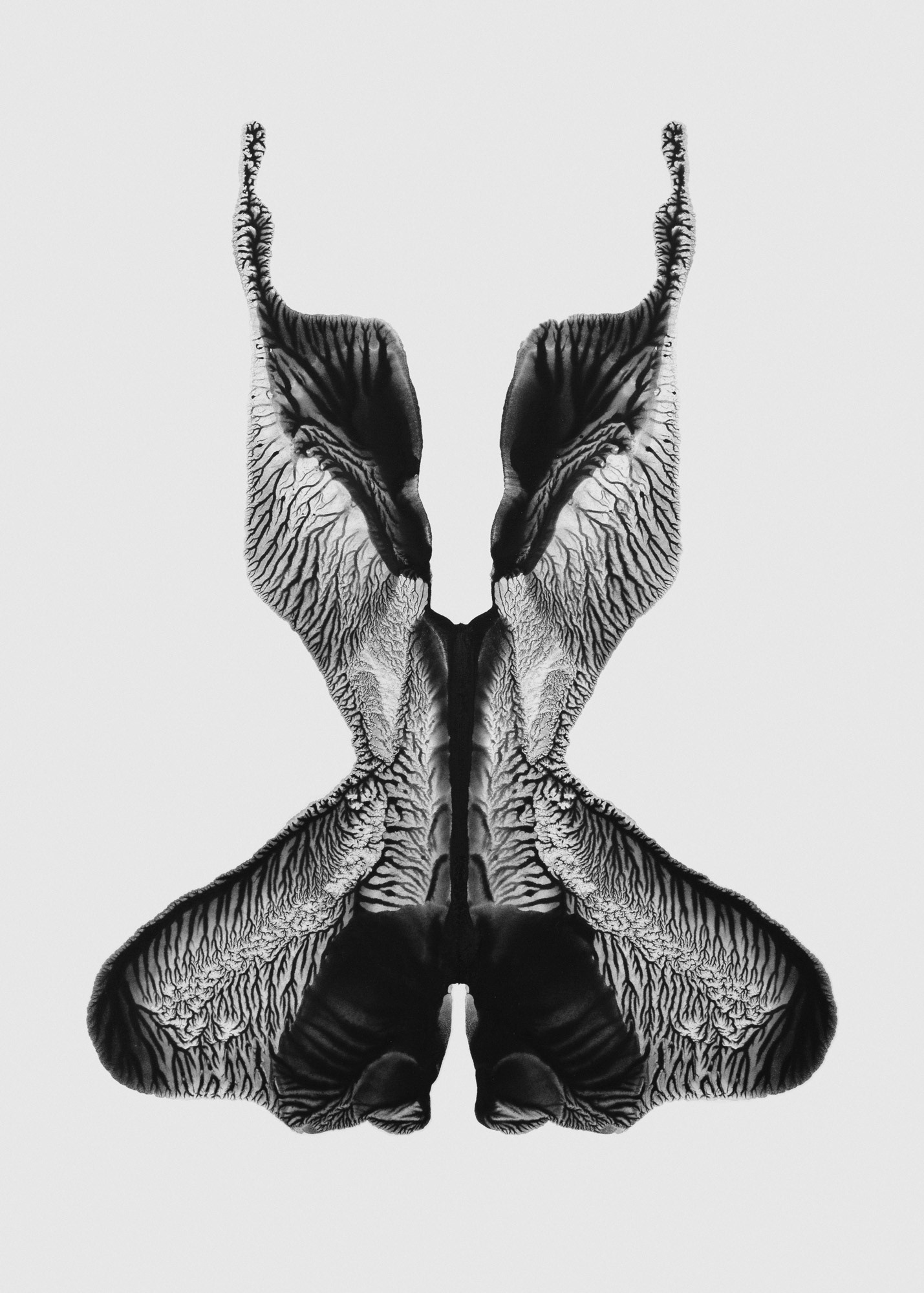
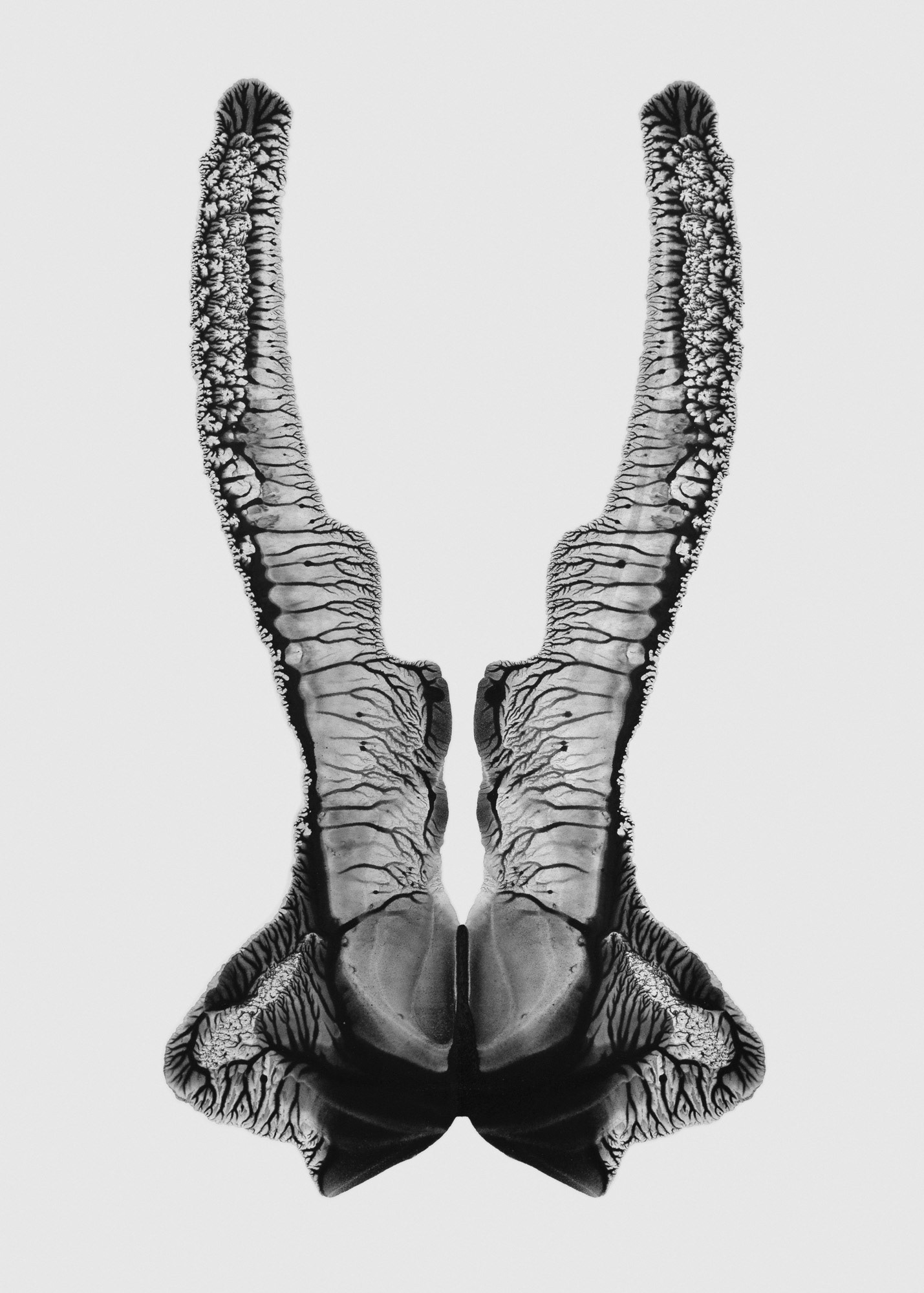
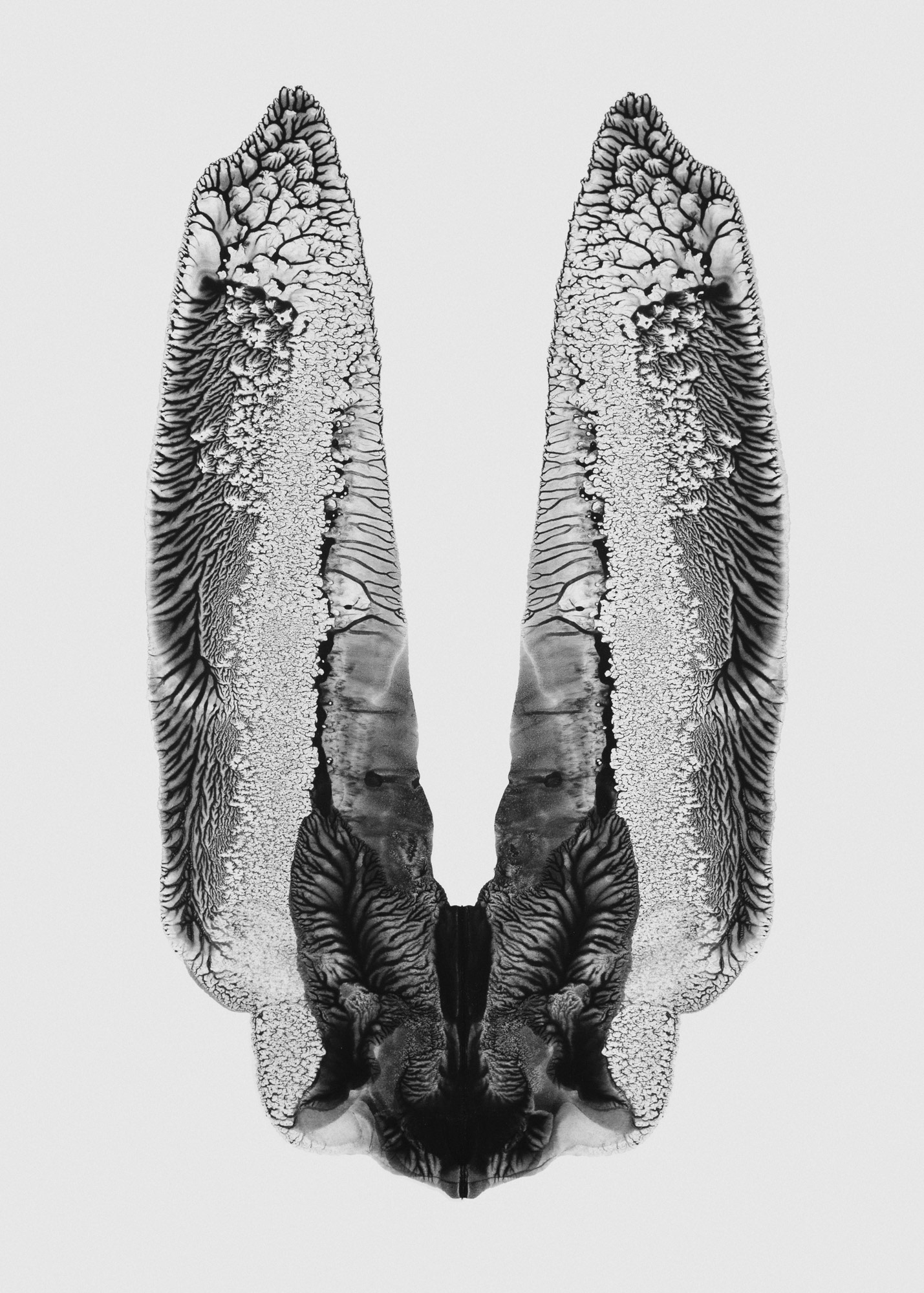
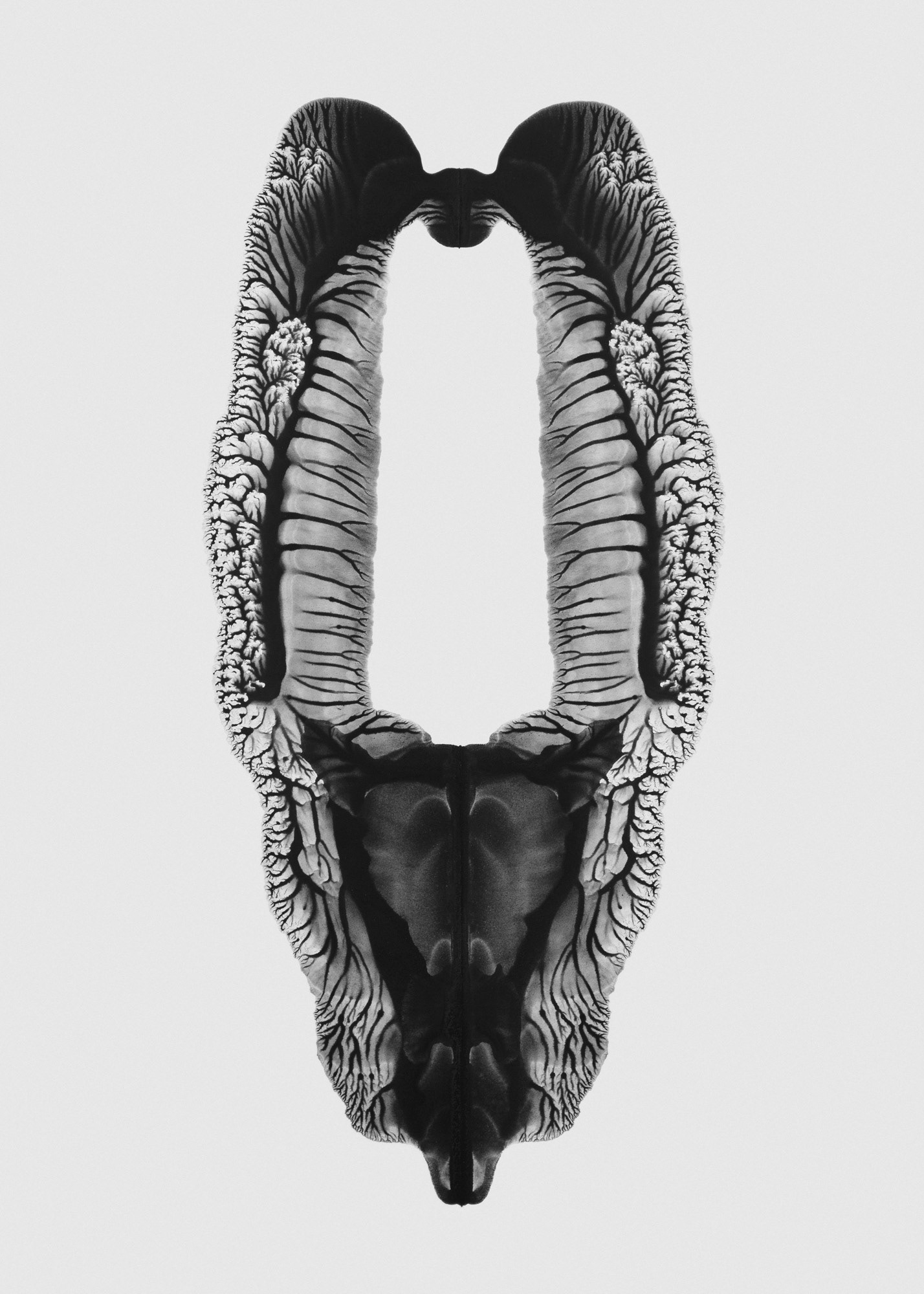
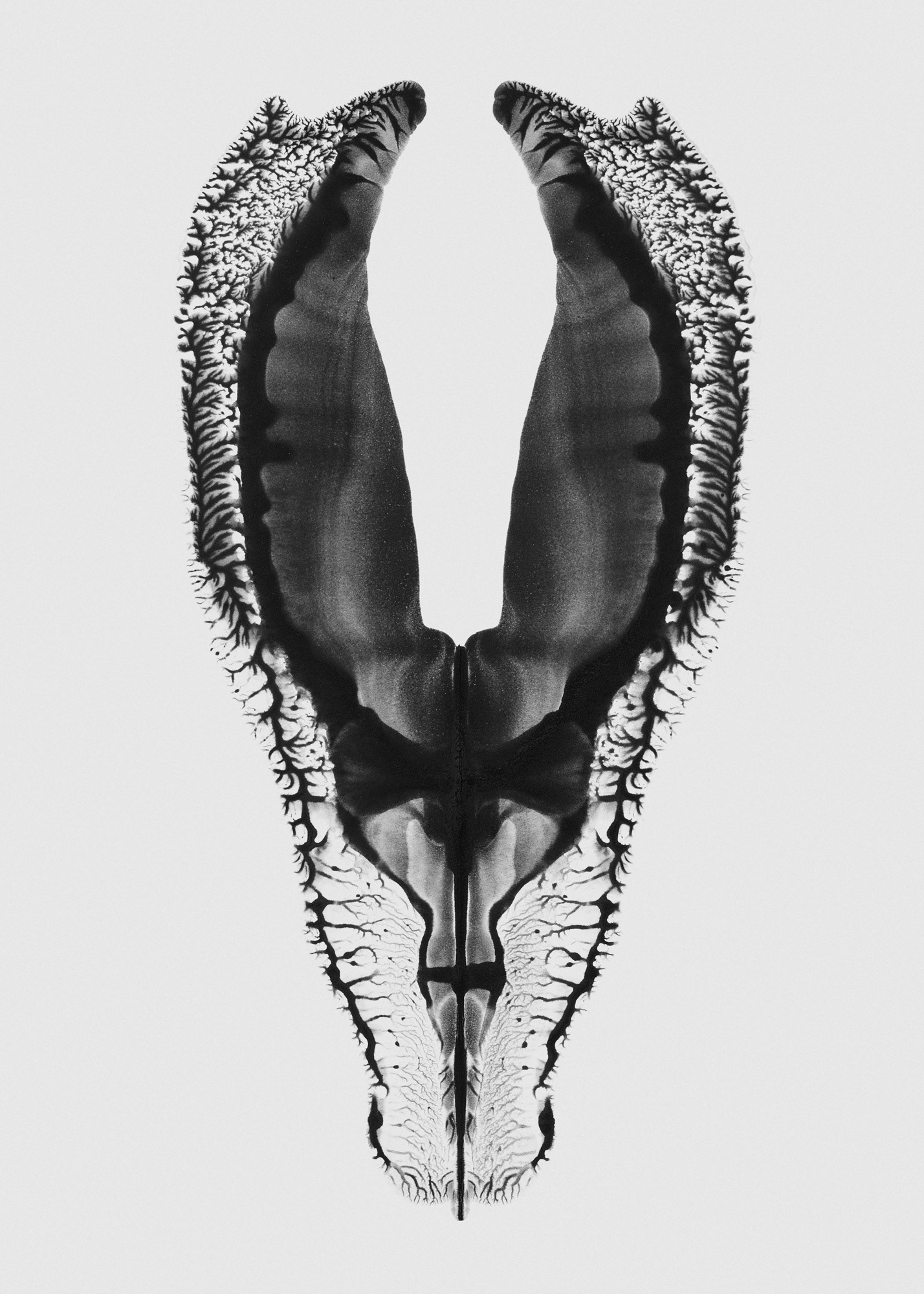
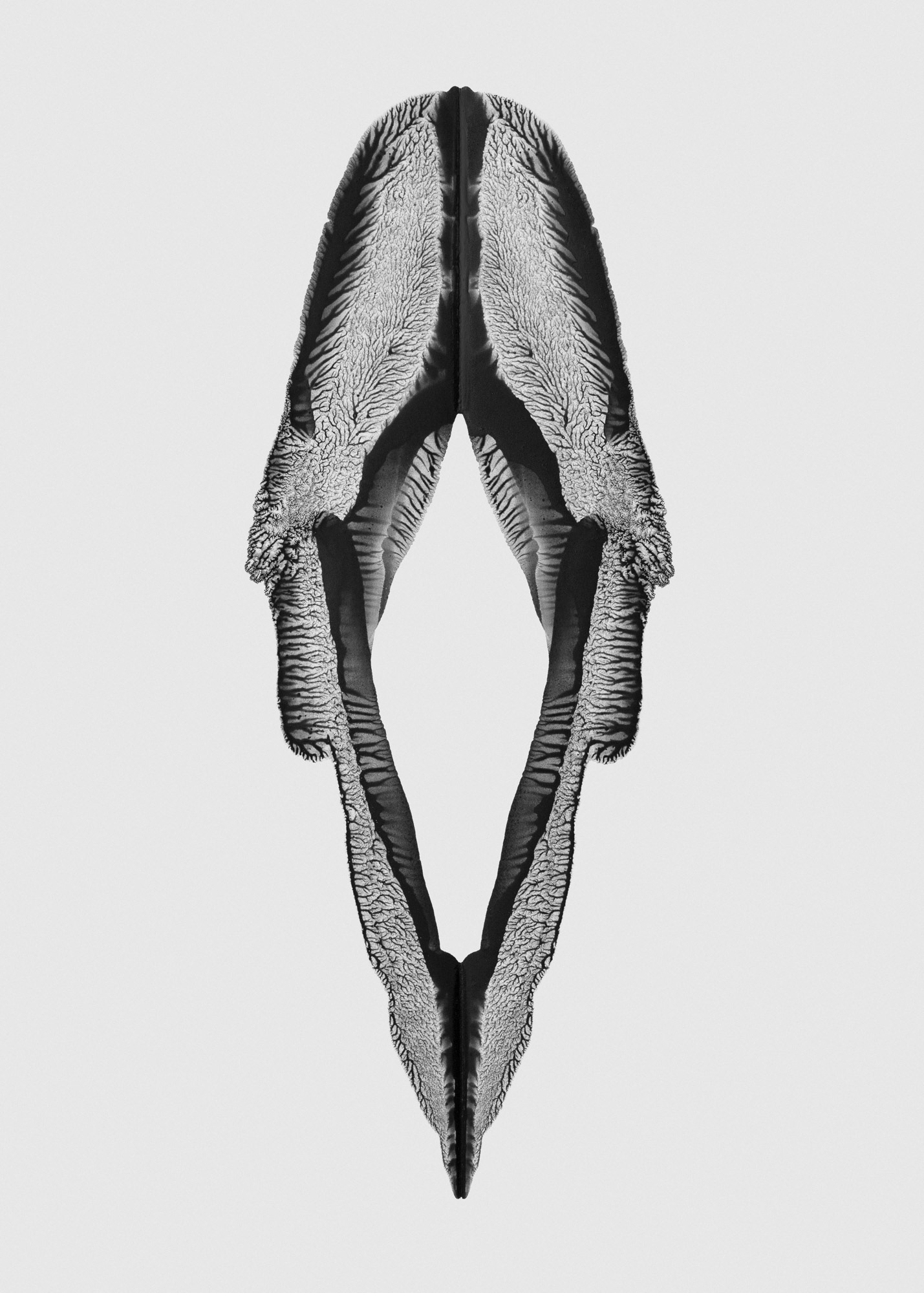
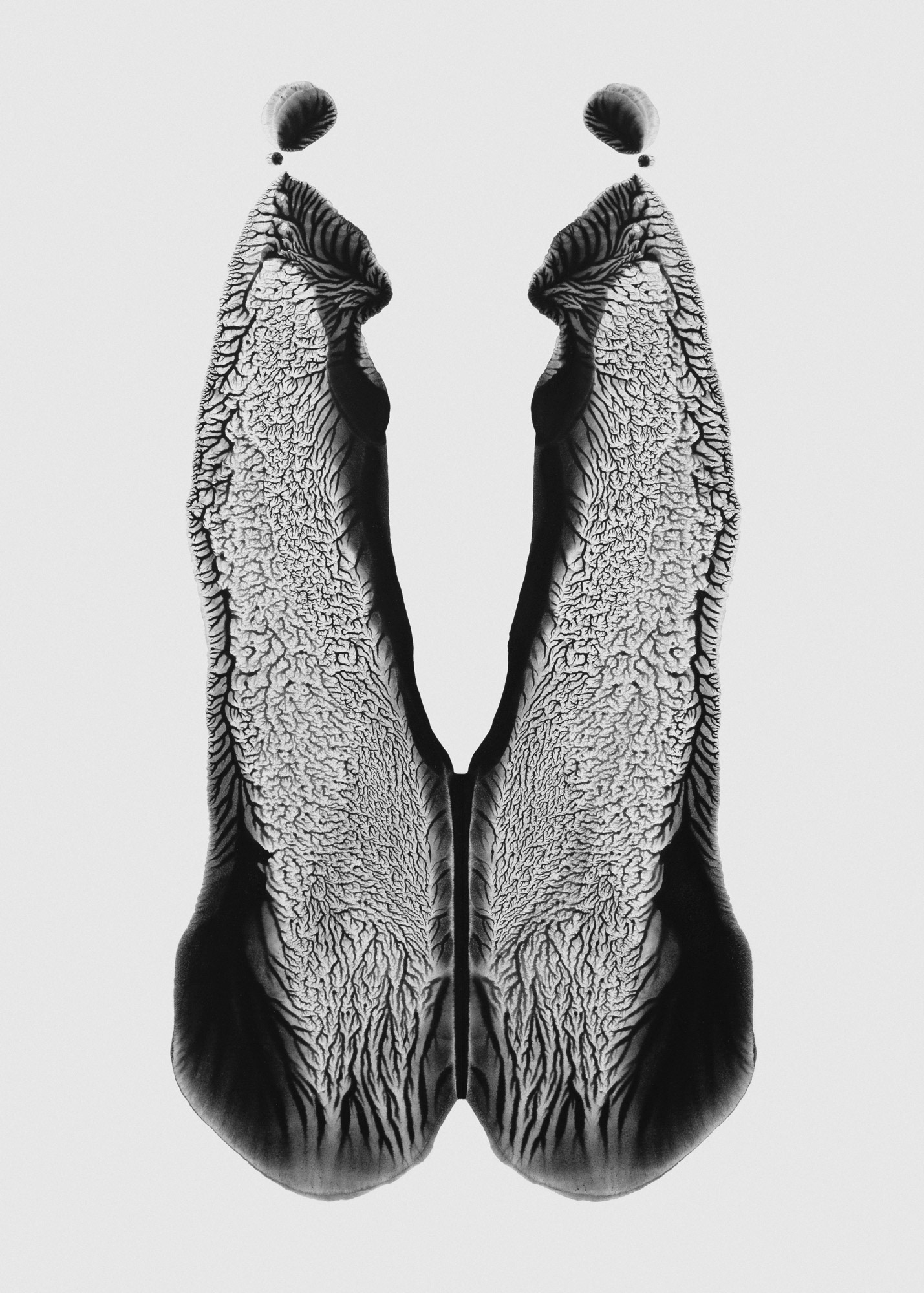
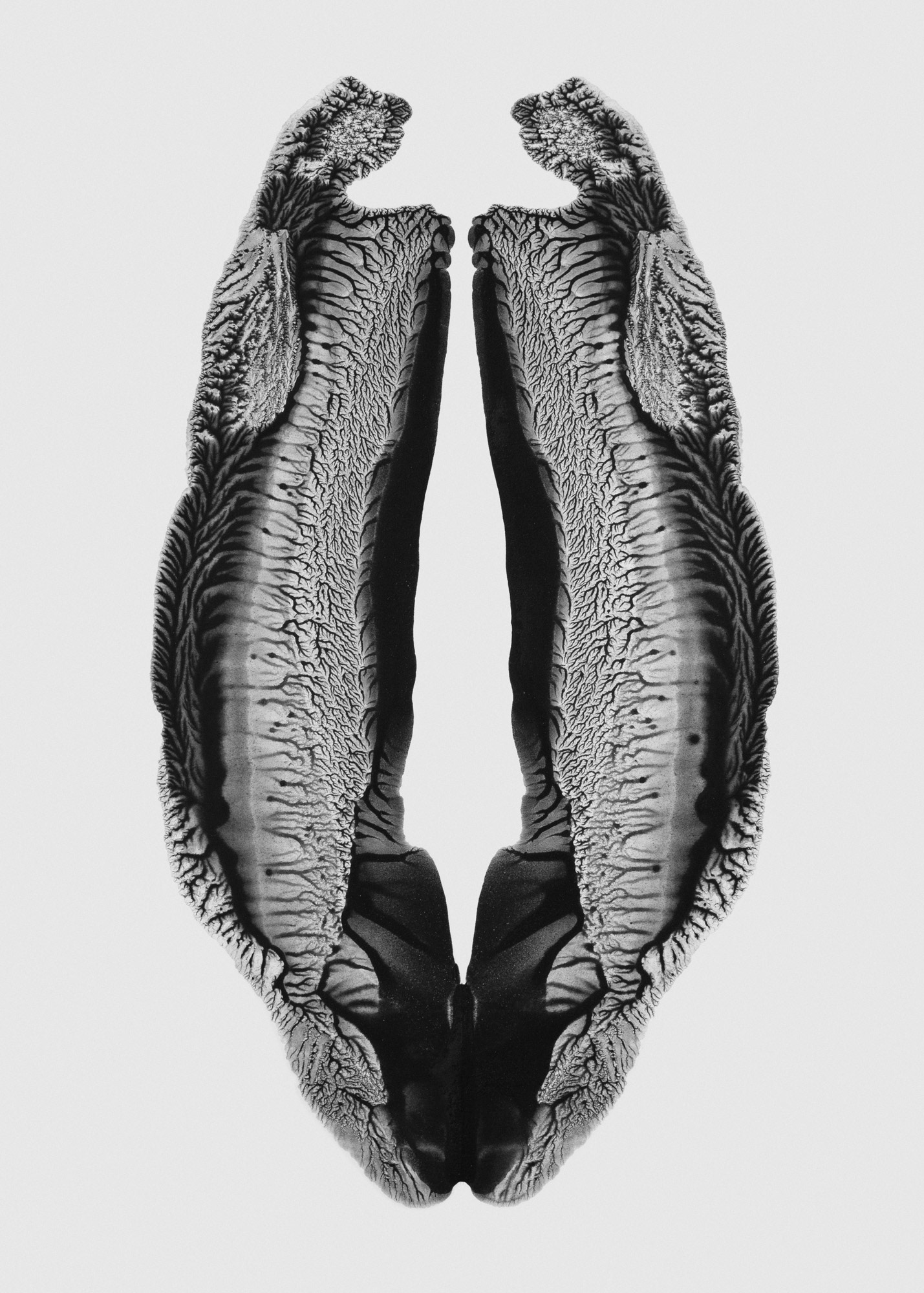
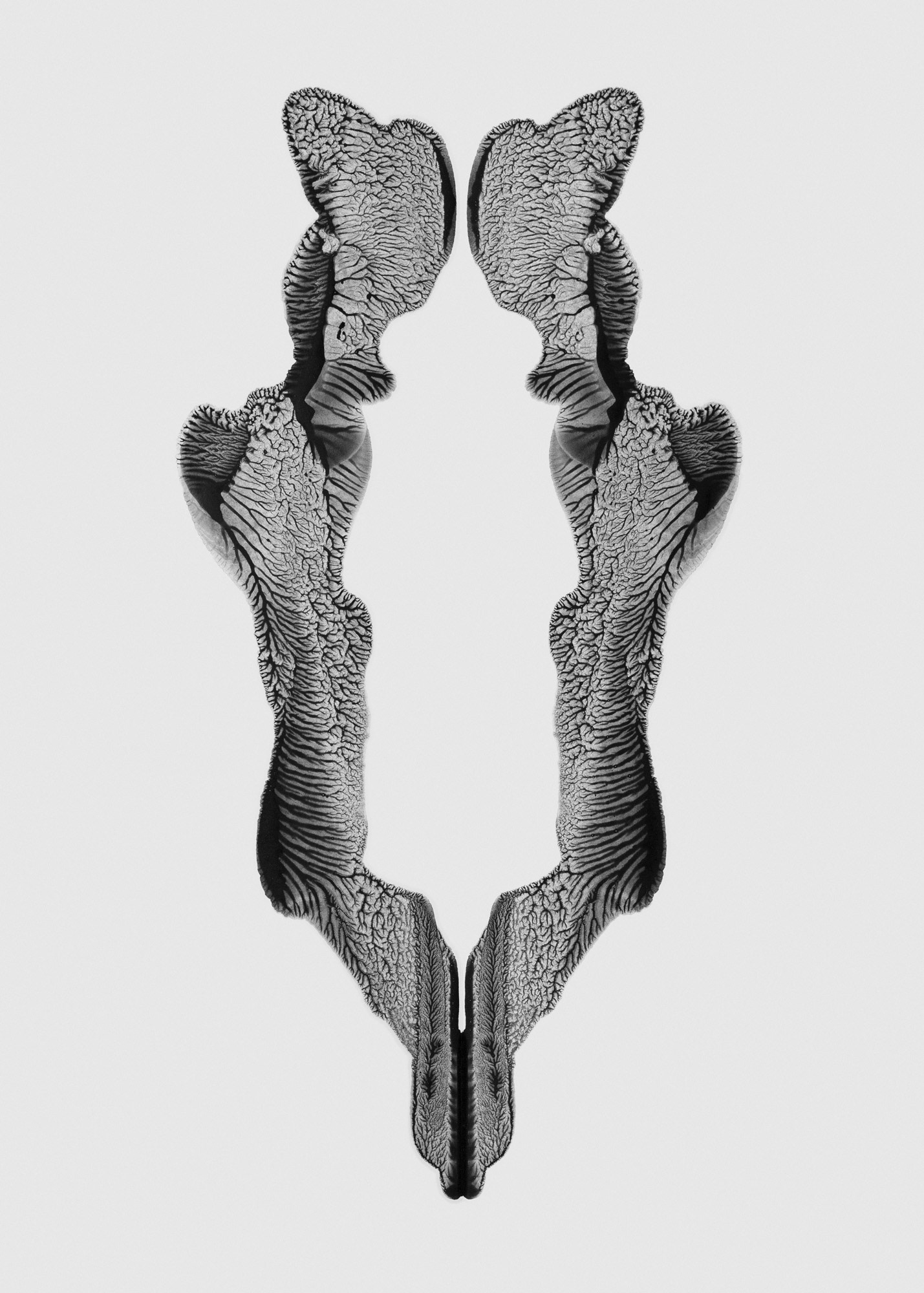
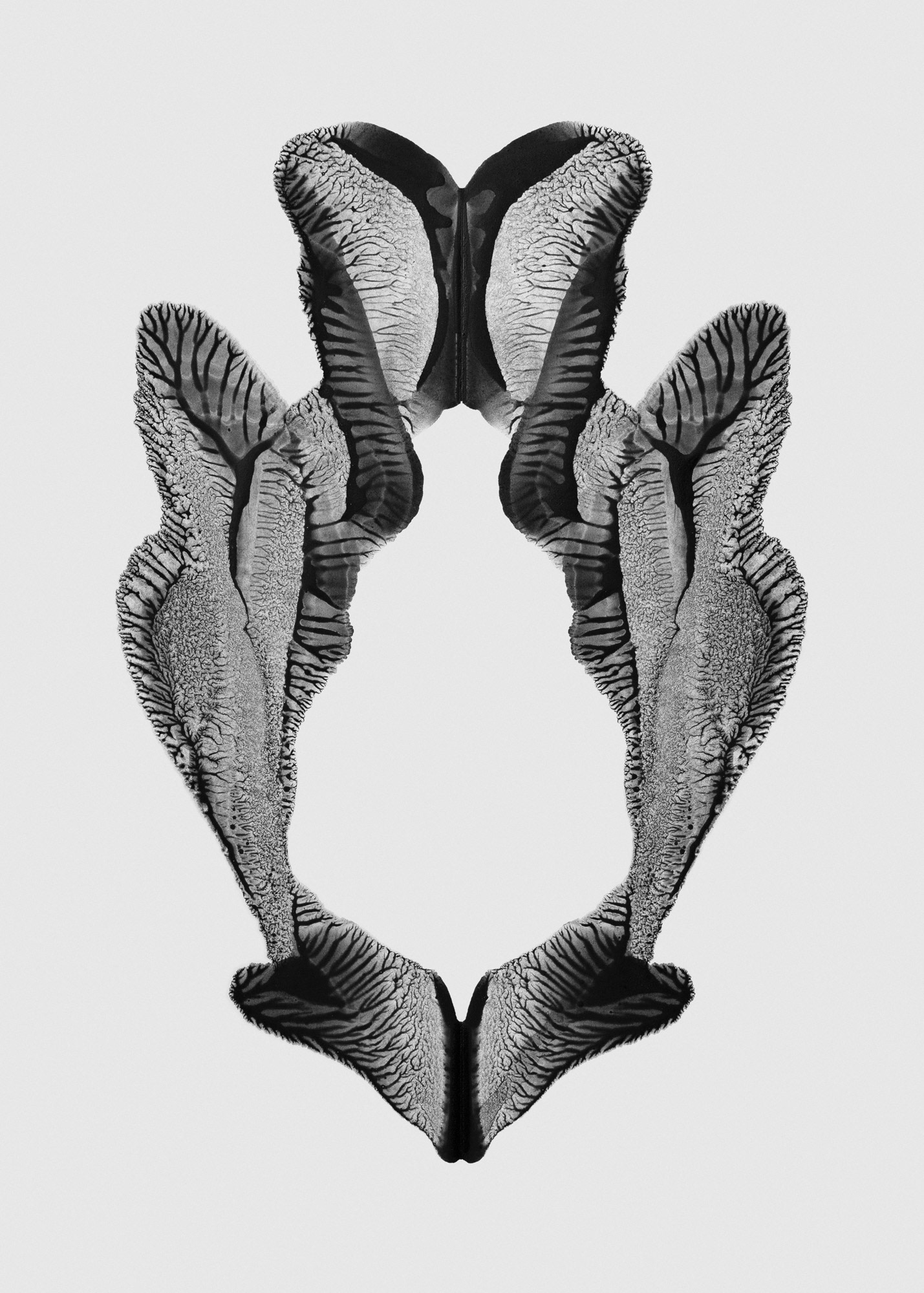
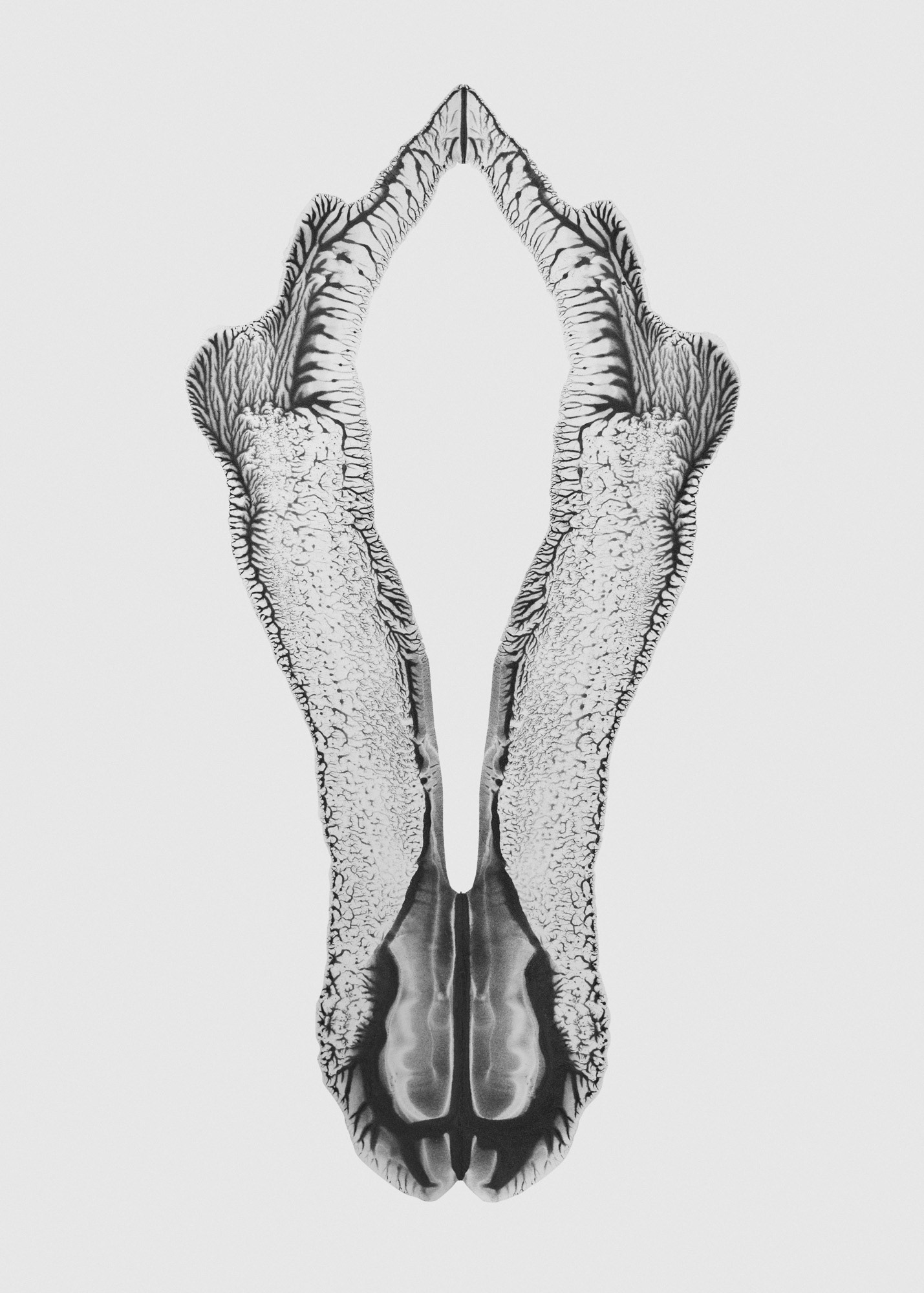
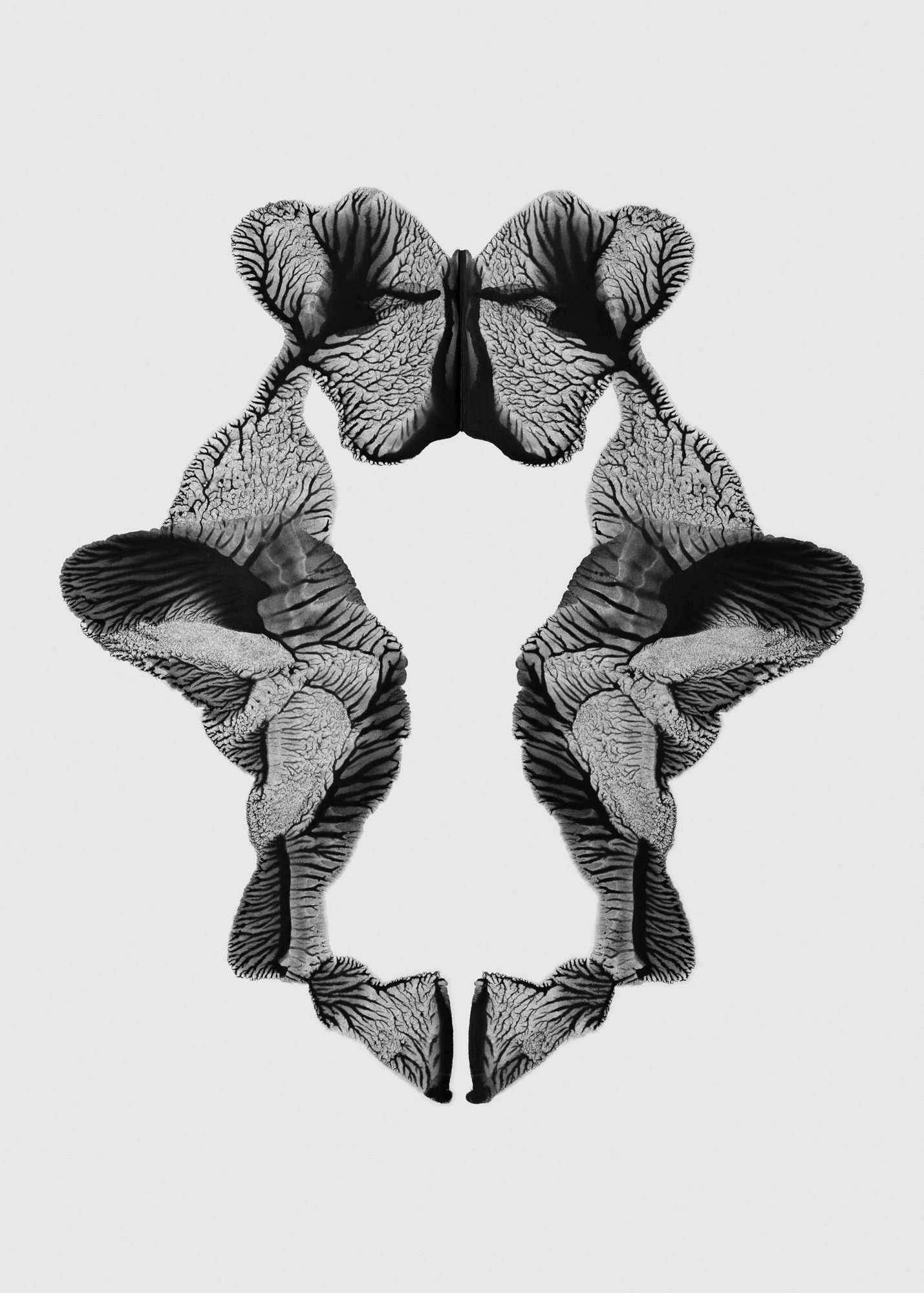
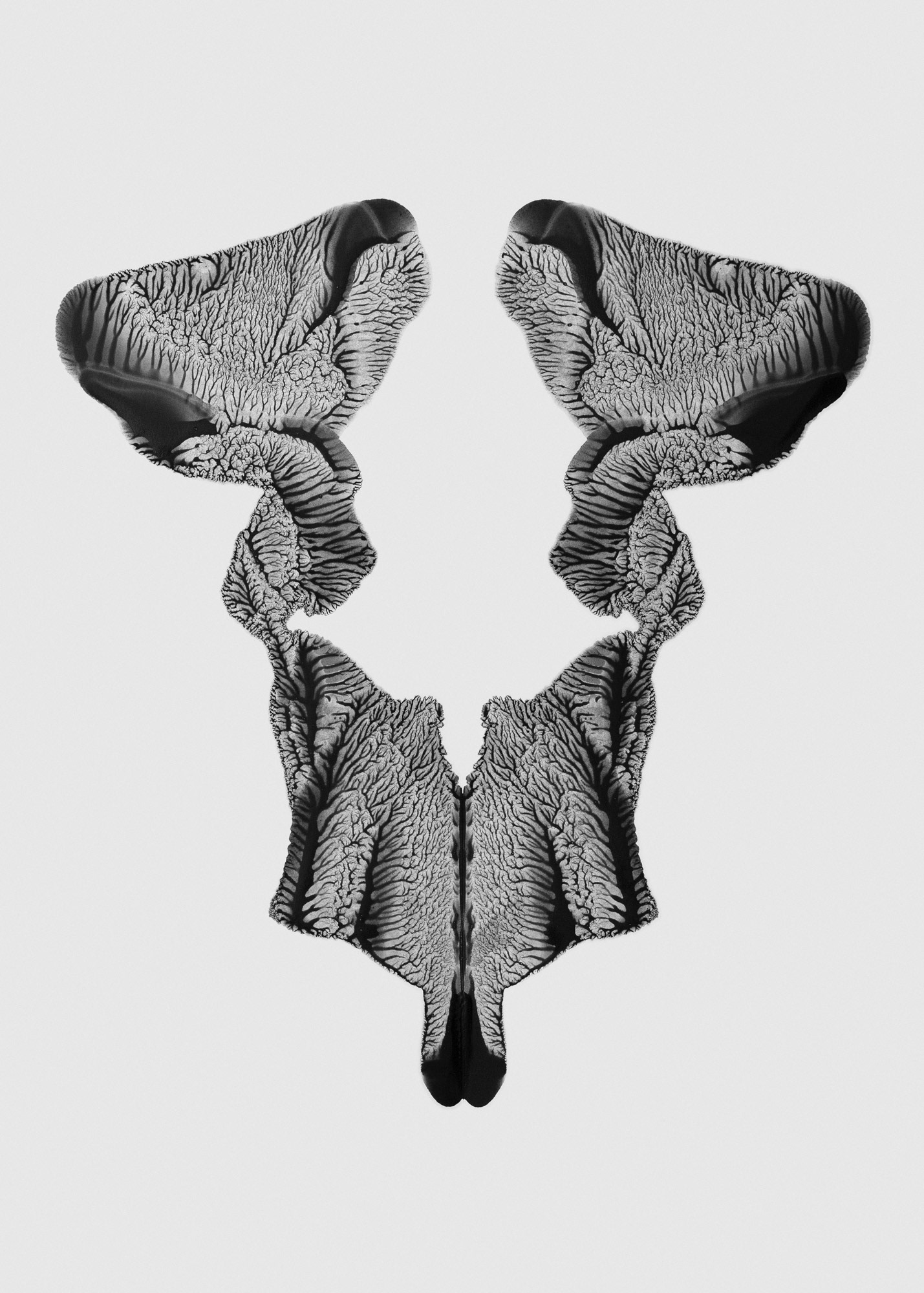
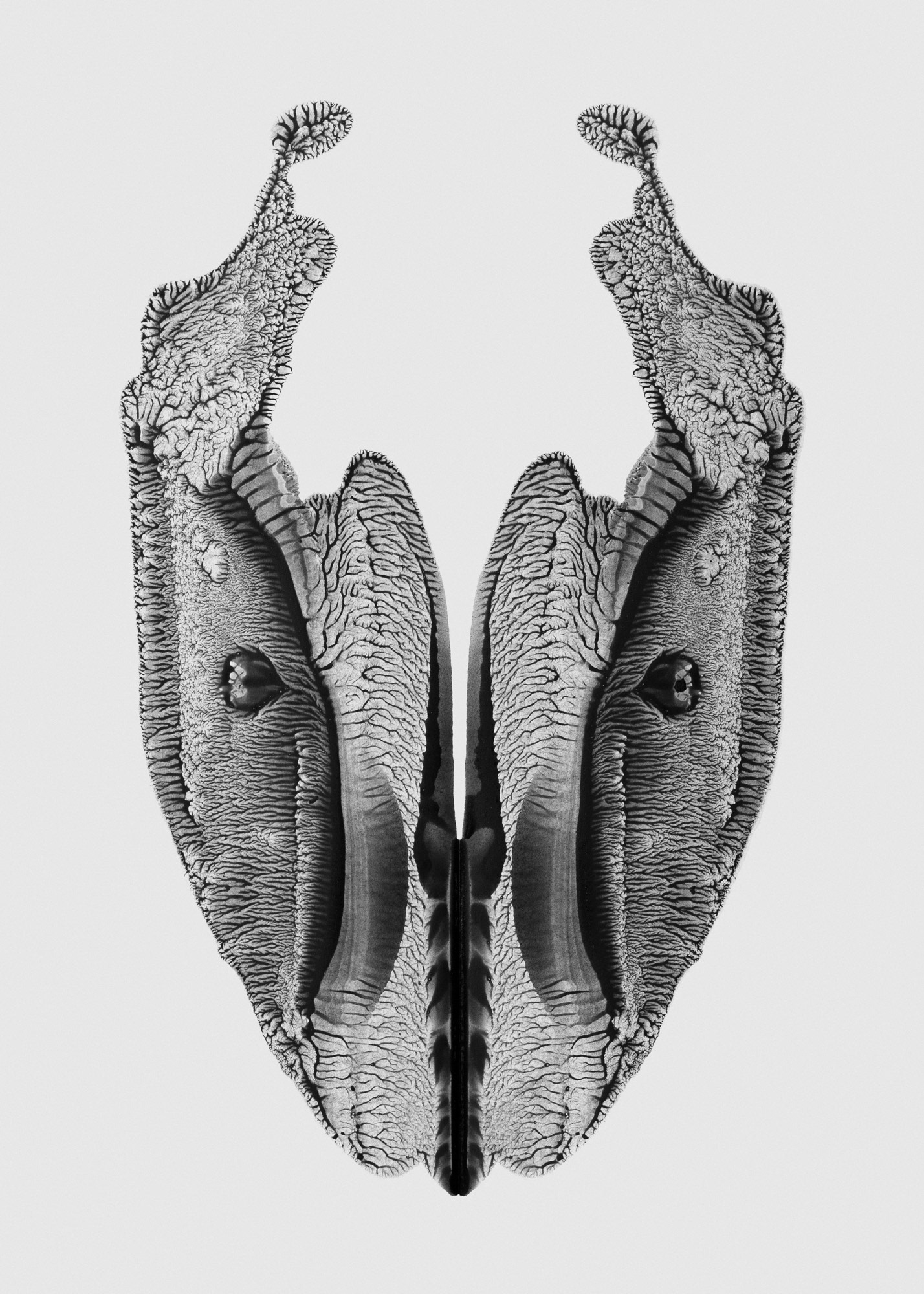
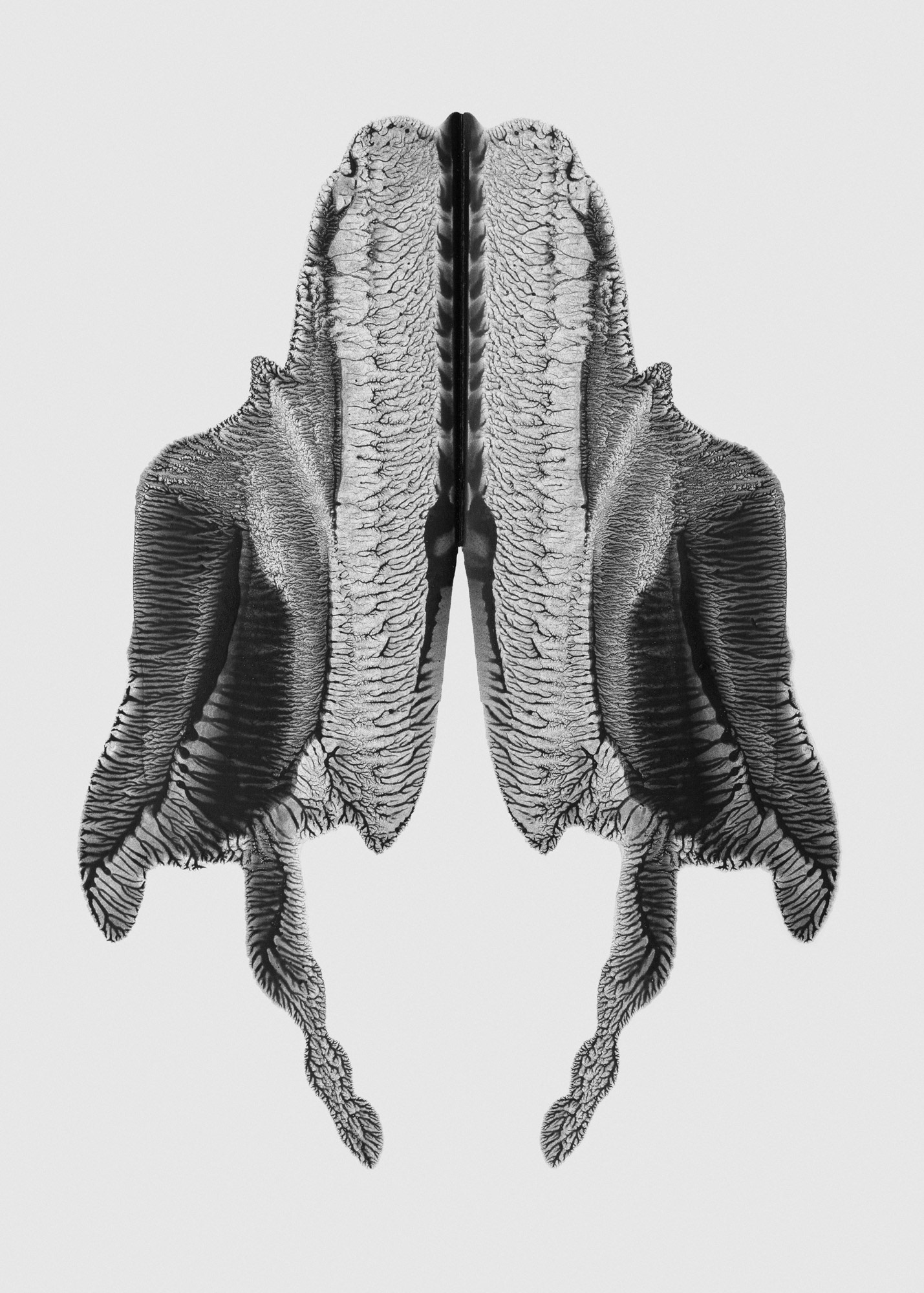
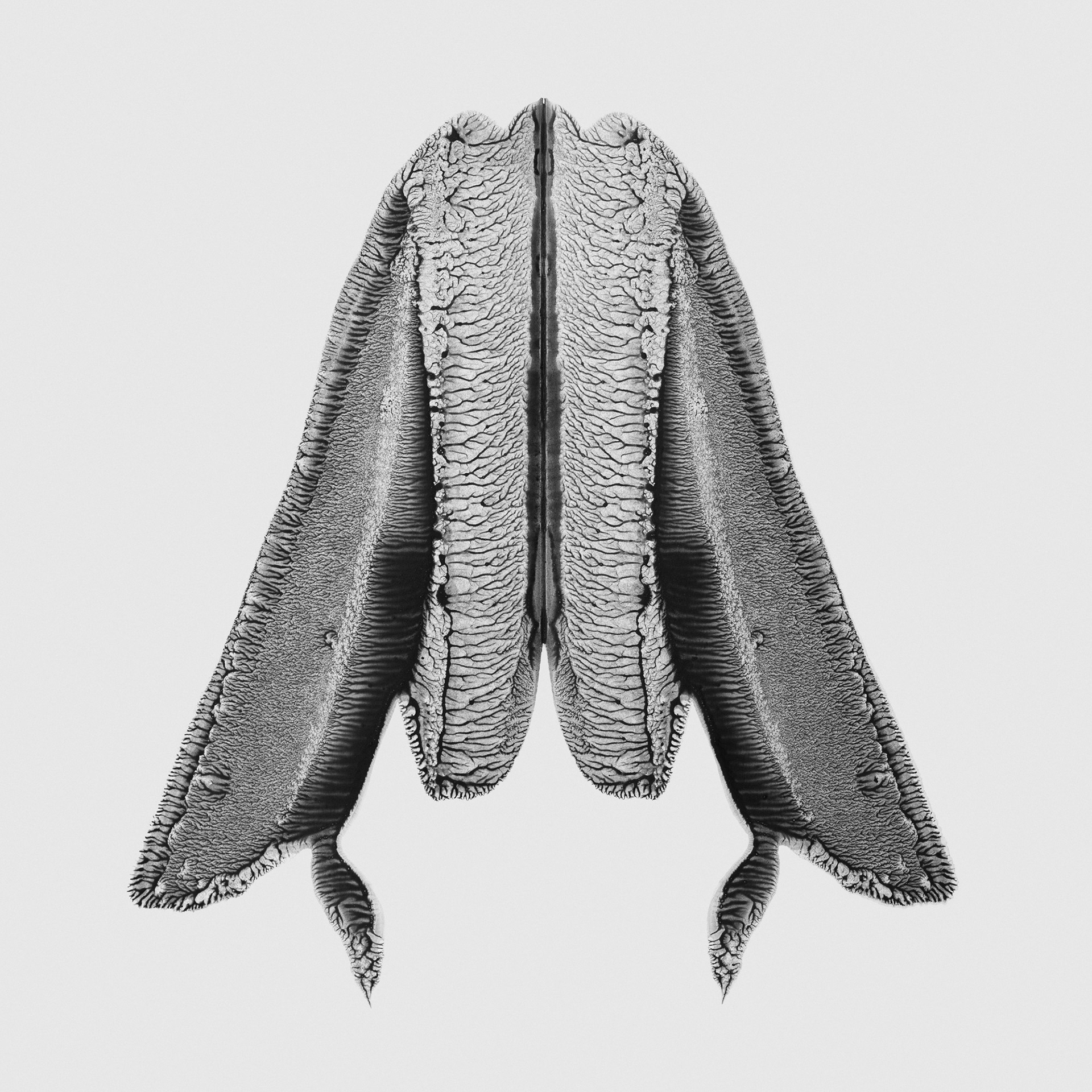
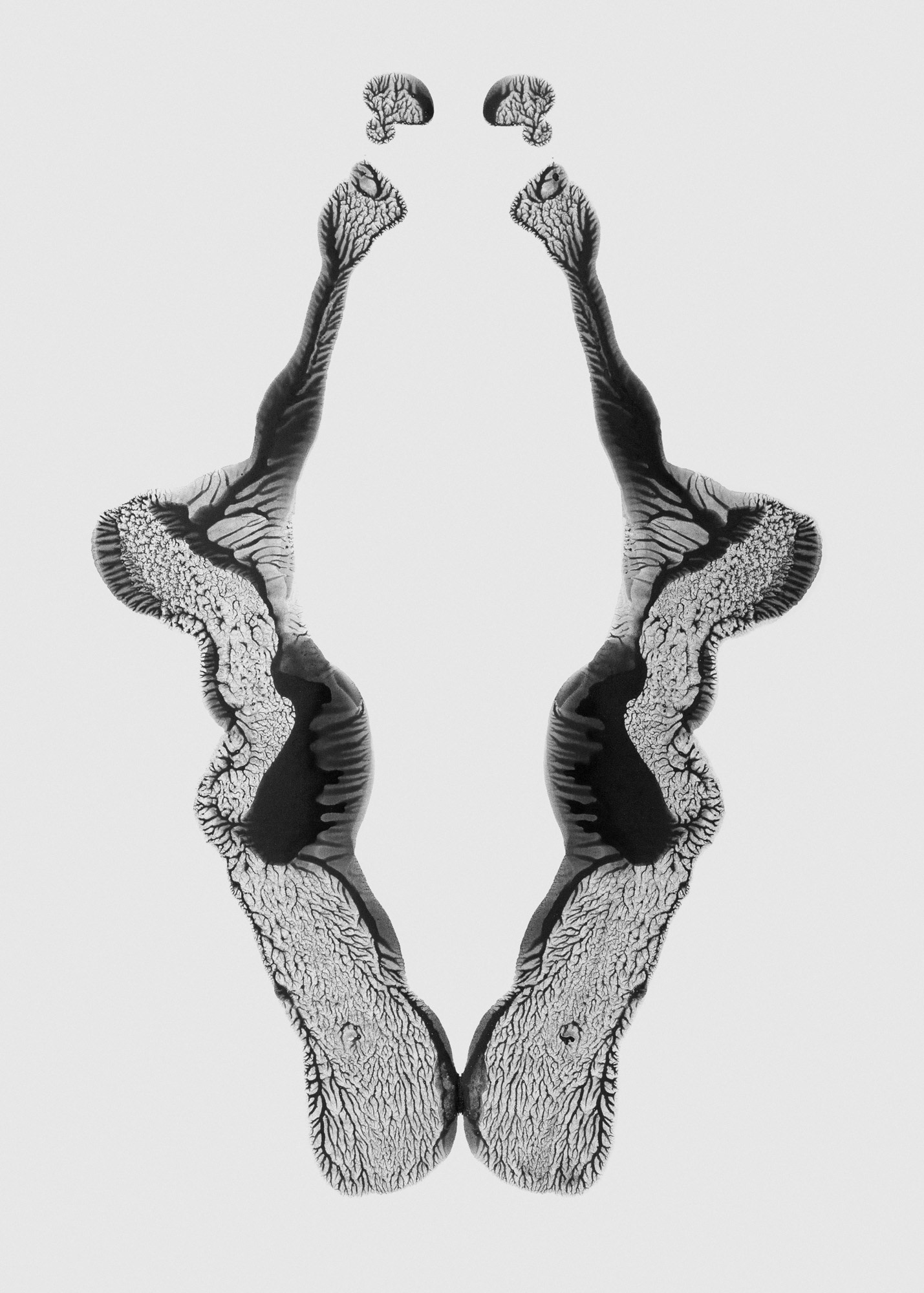
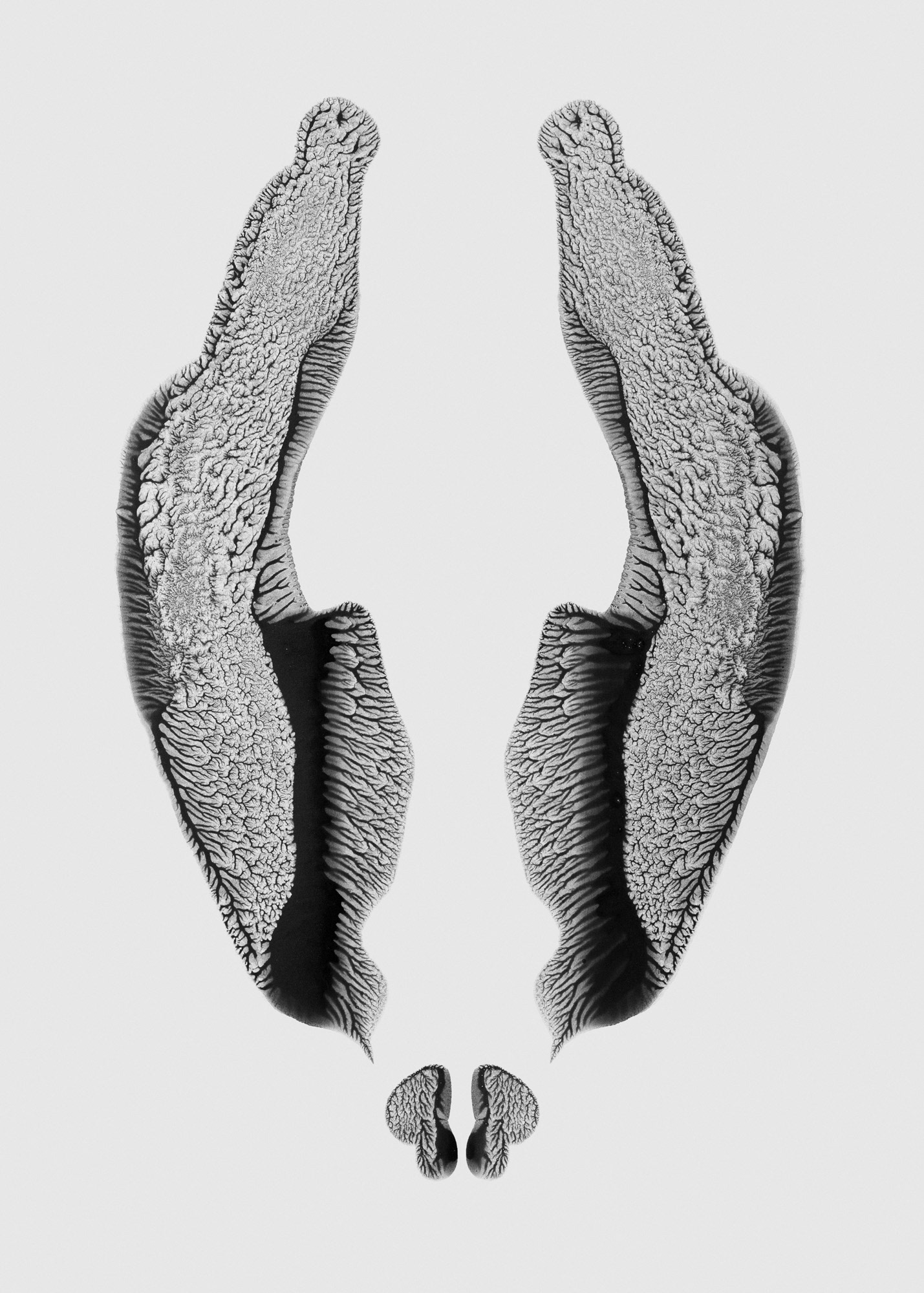
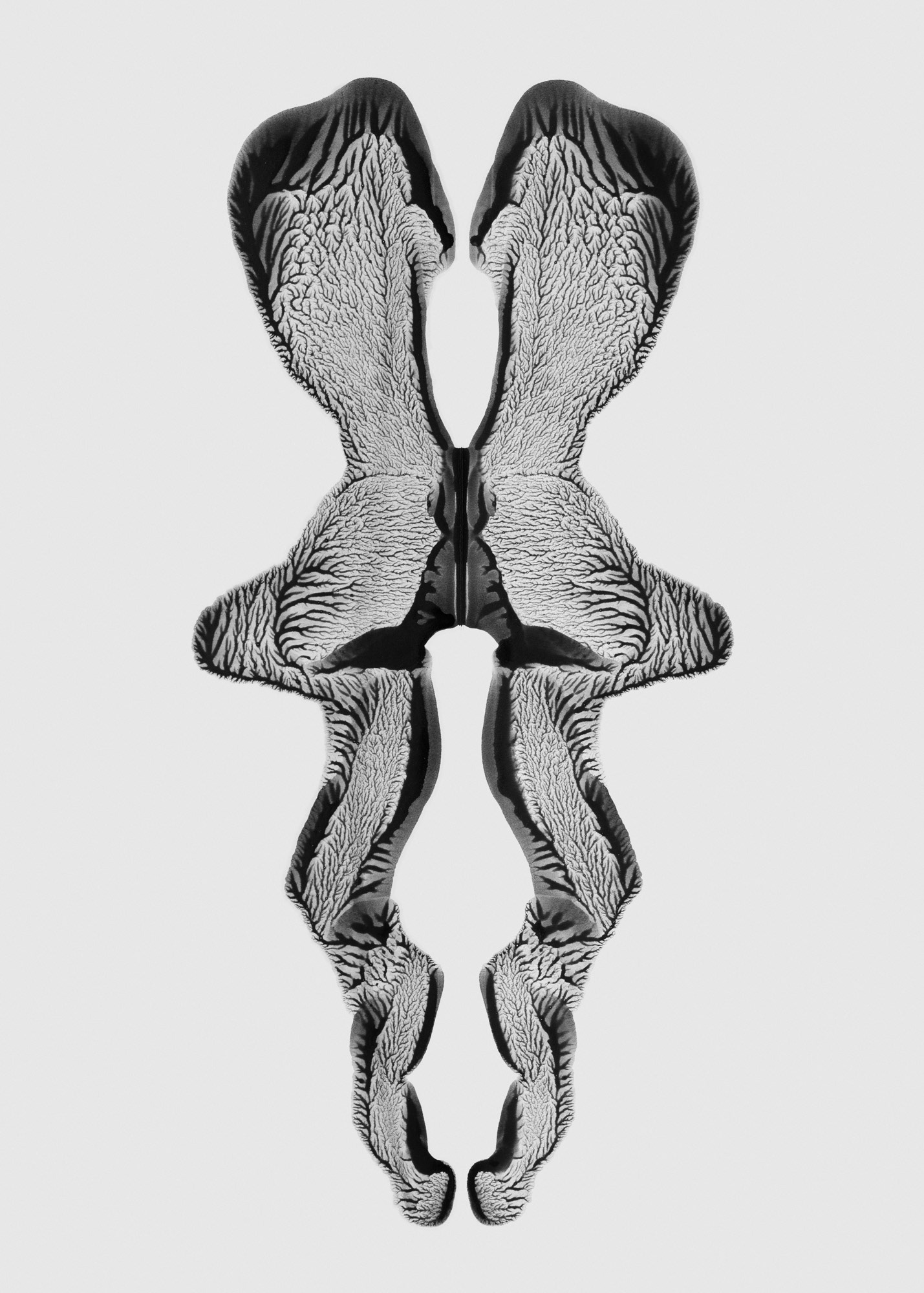
Decalcomania 2019, materials: paper and paint, size: about 60x80cm
Decalcomania UV..
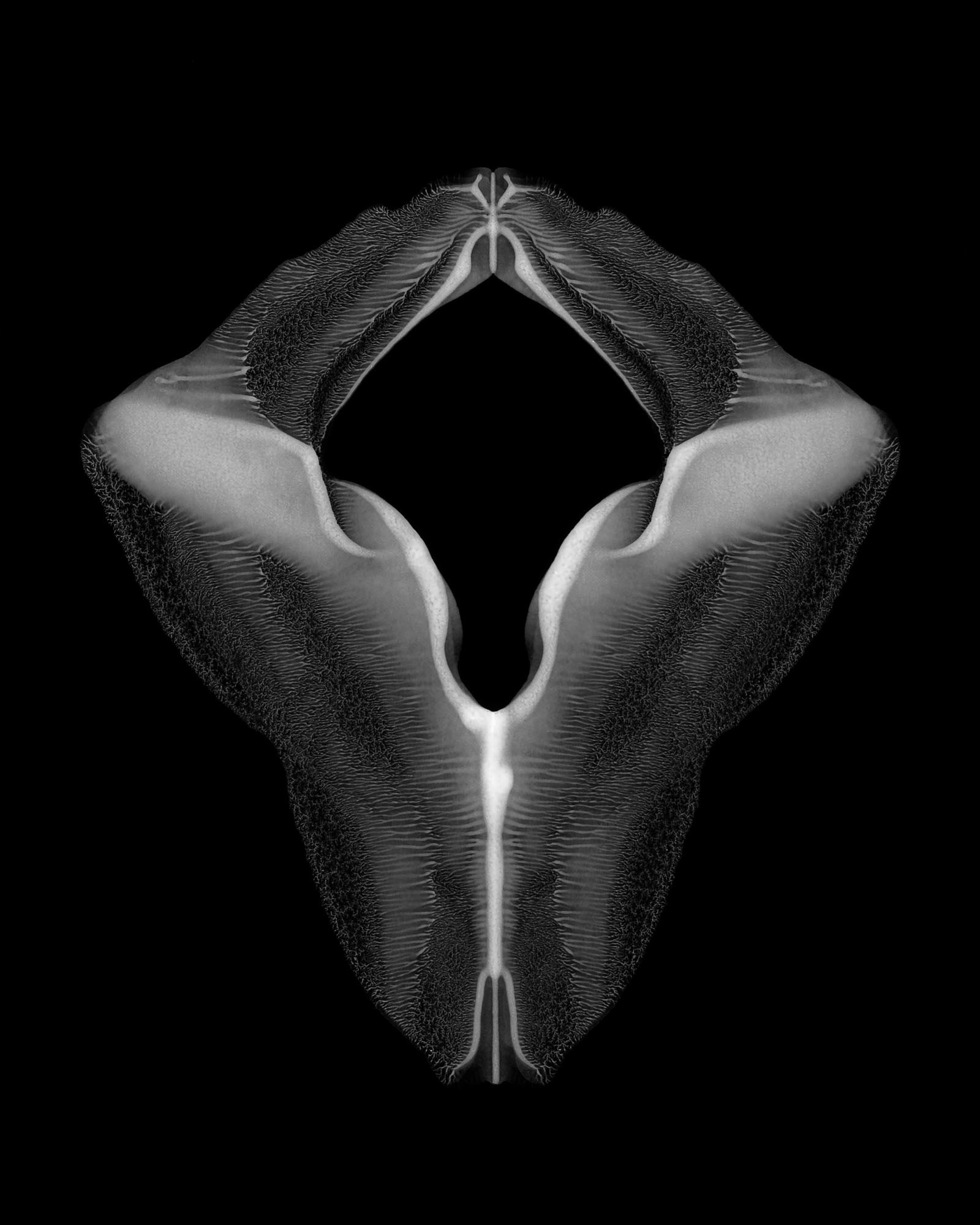
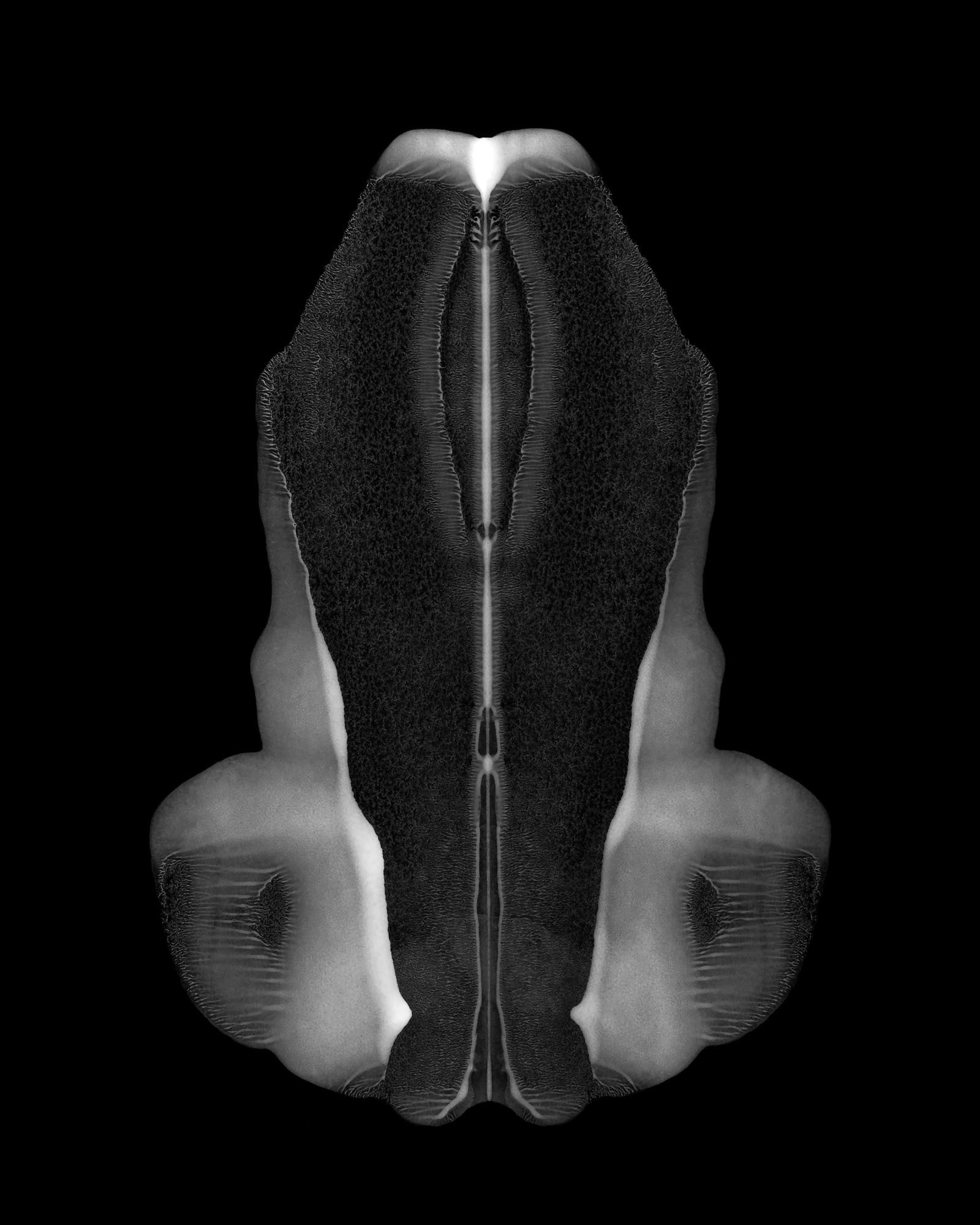
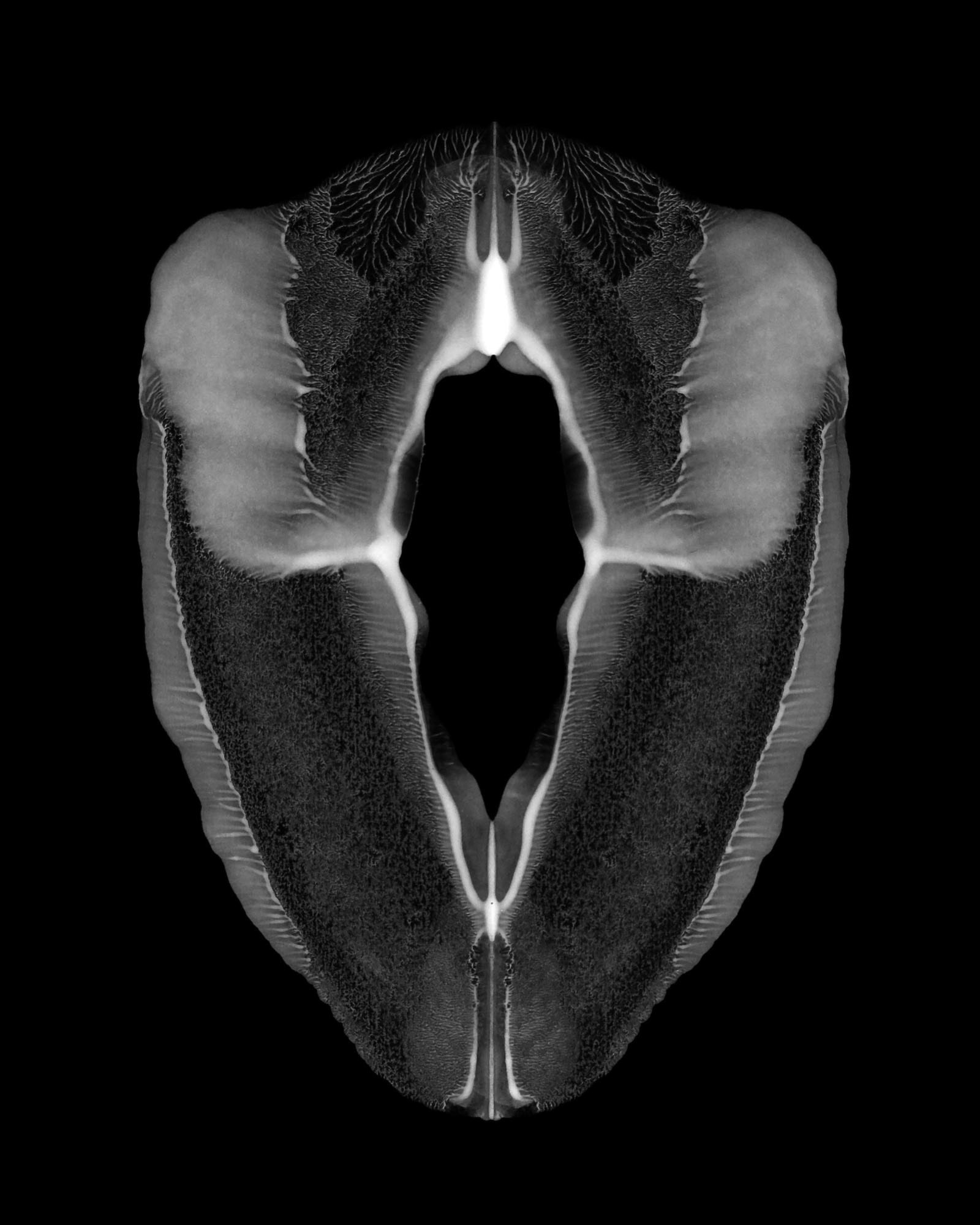
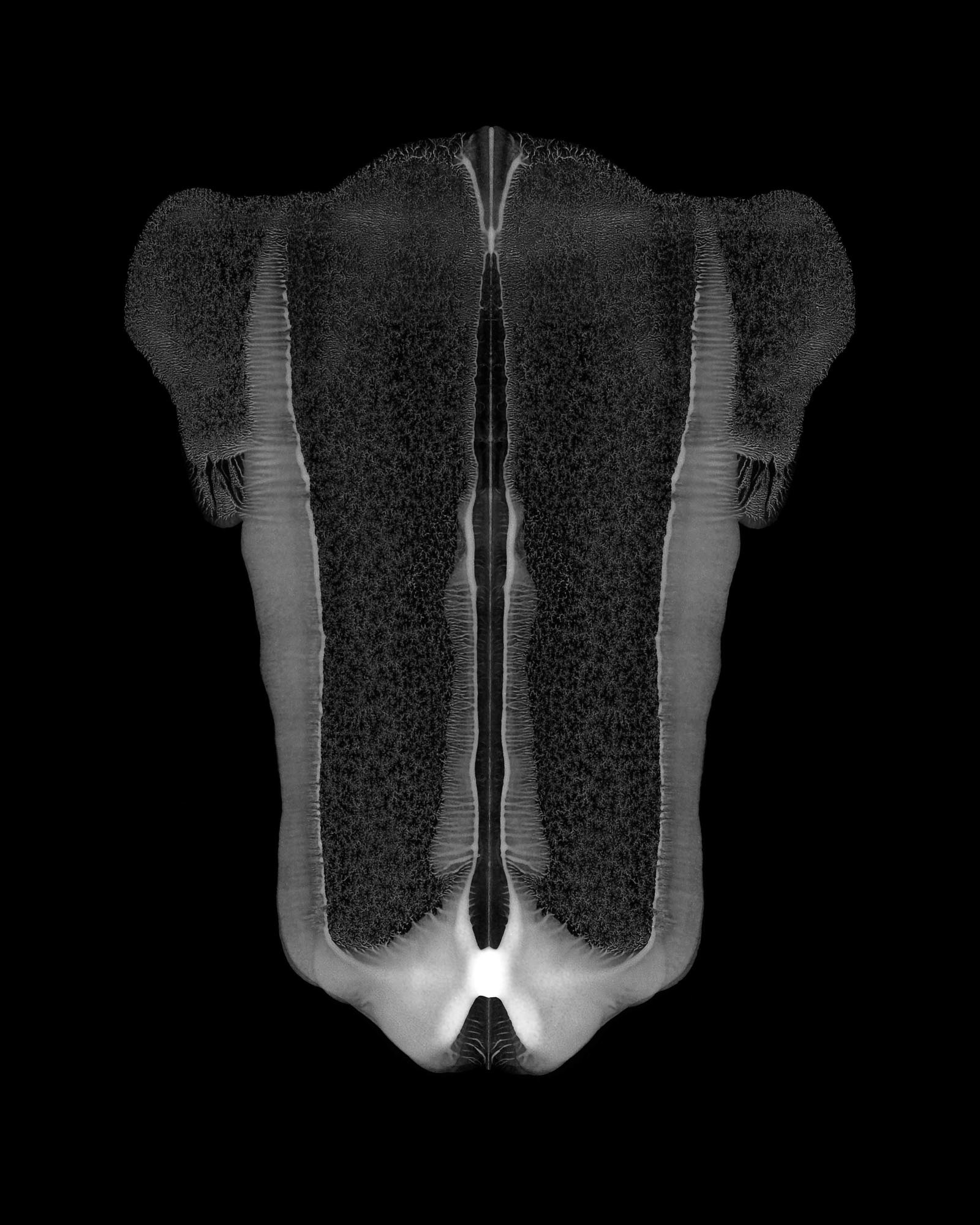
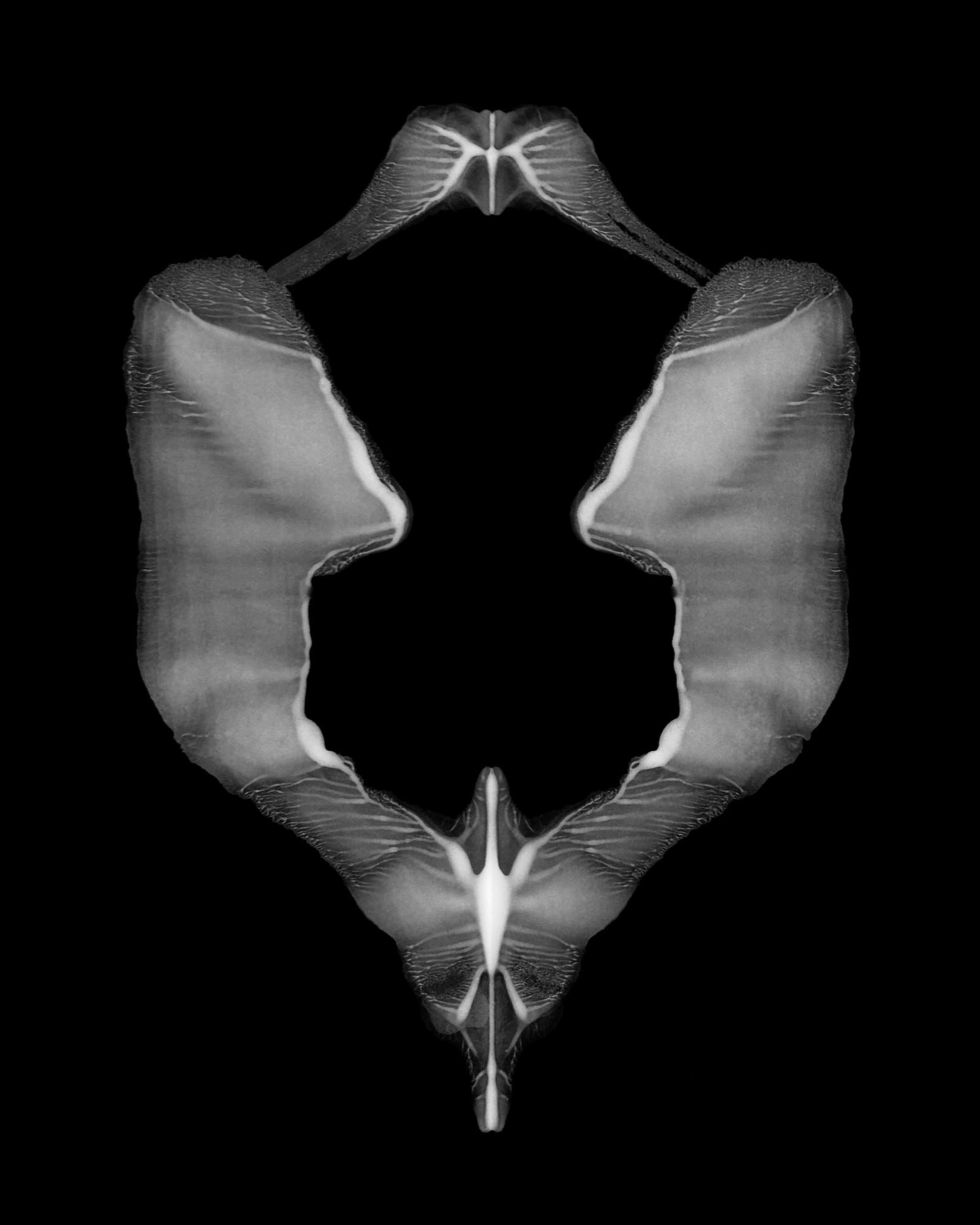
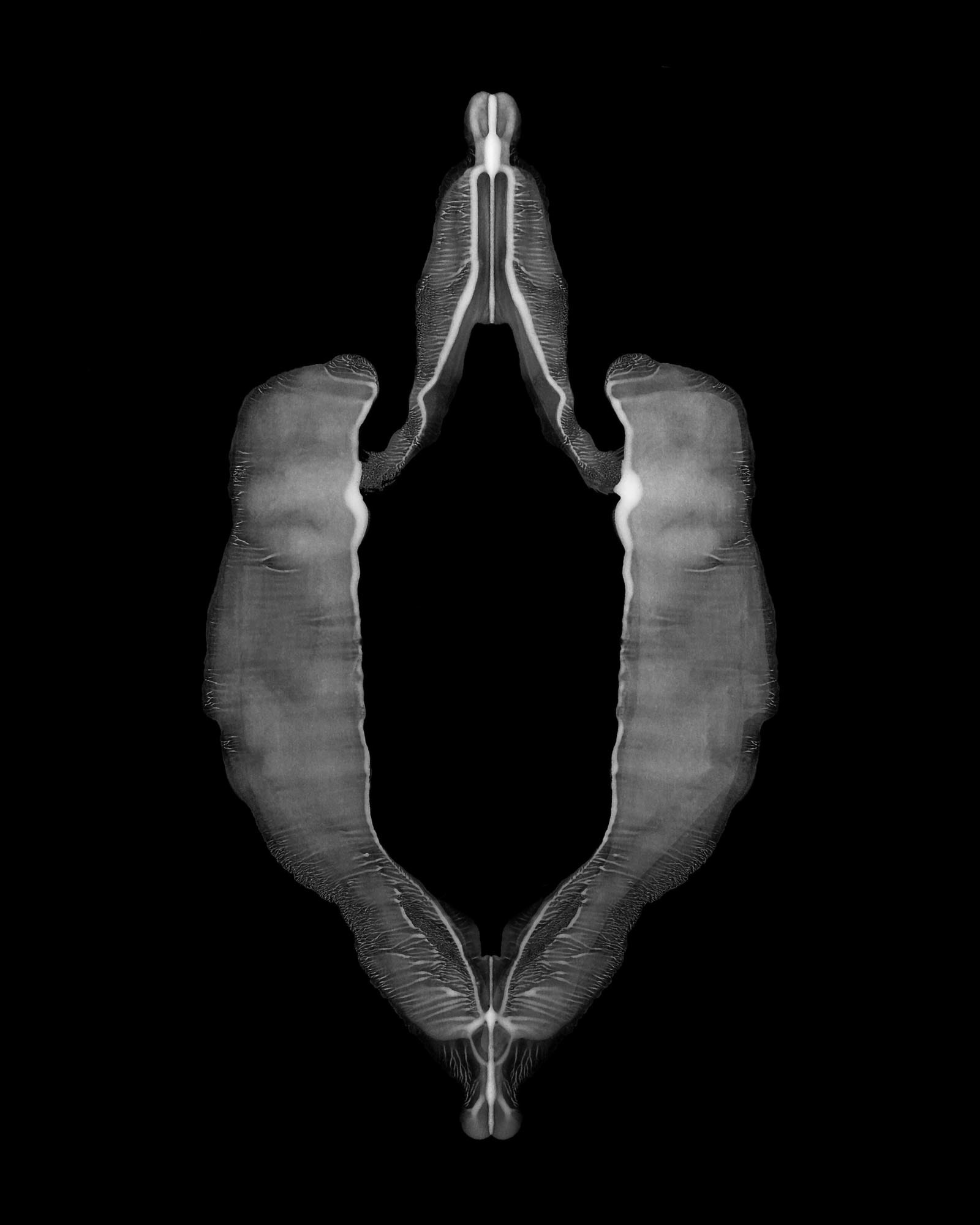
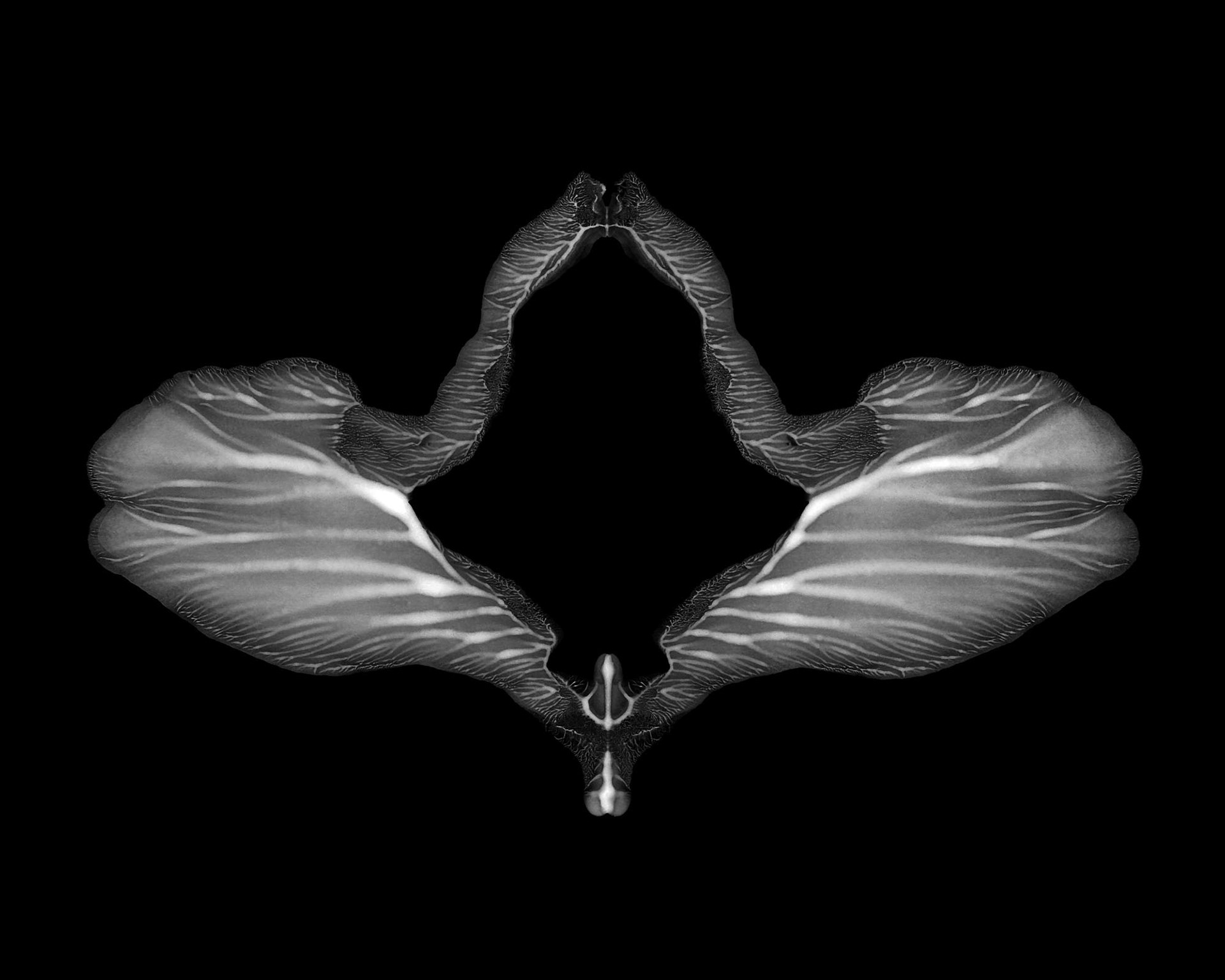
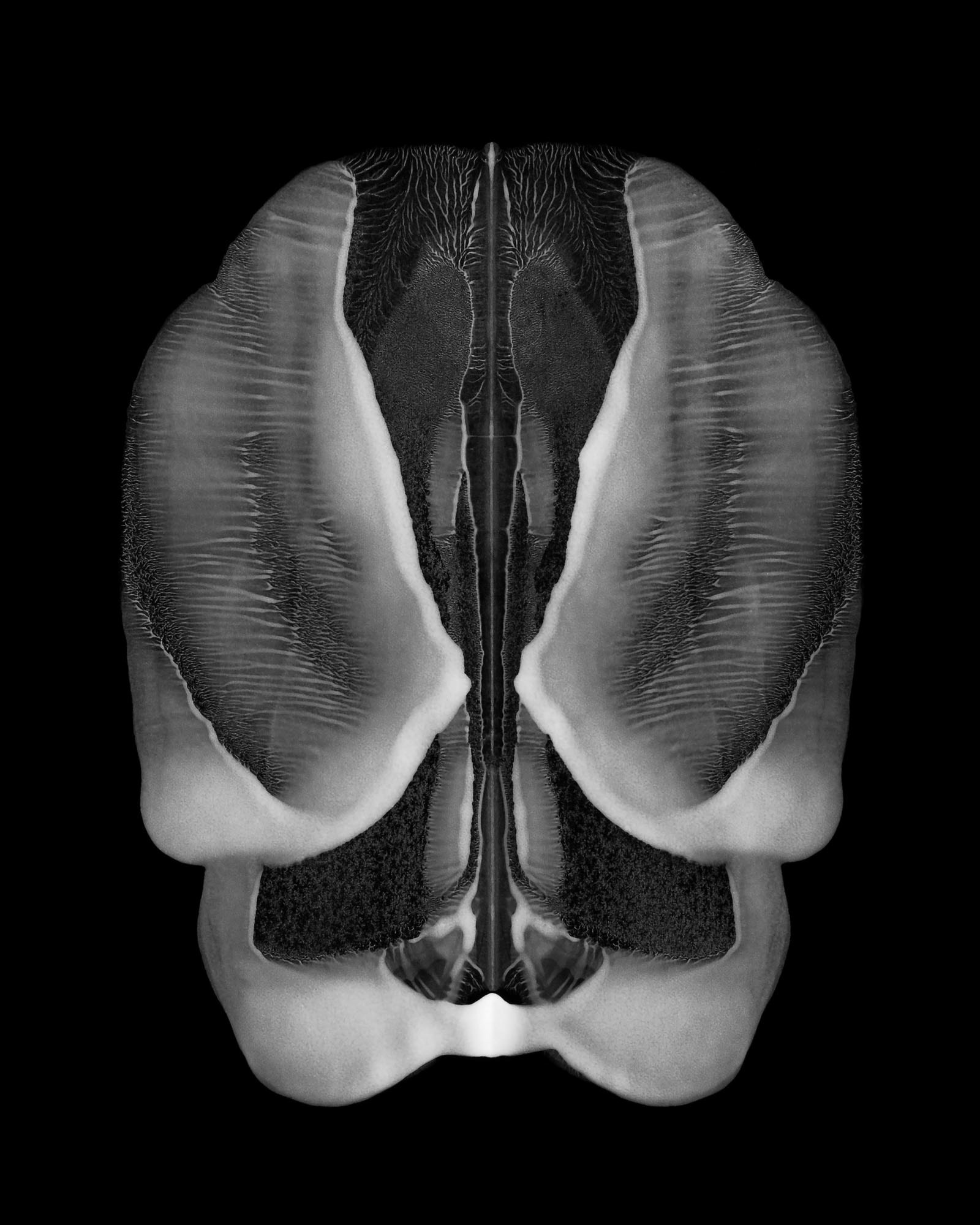
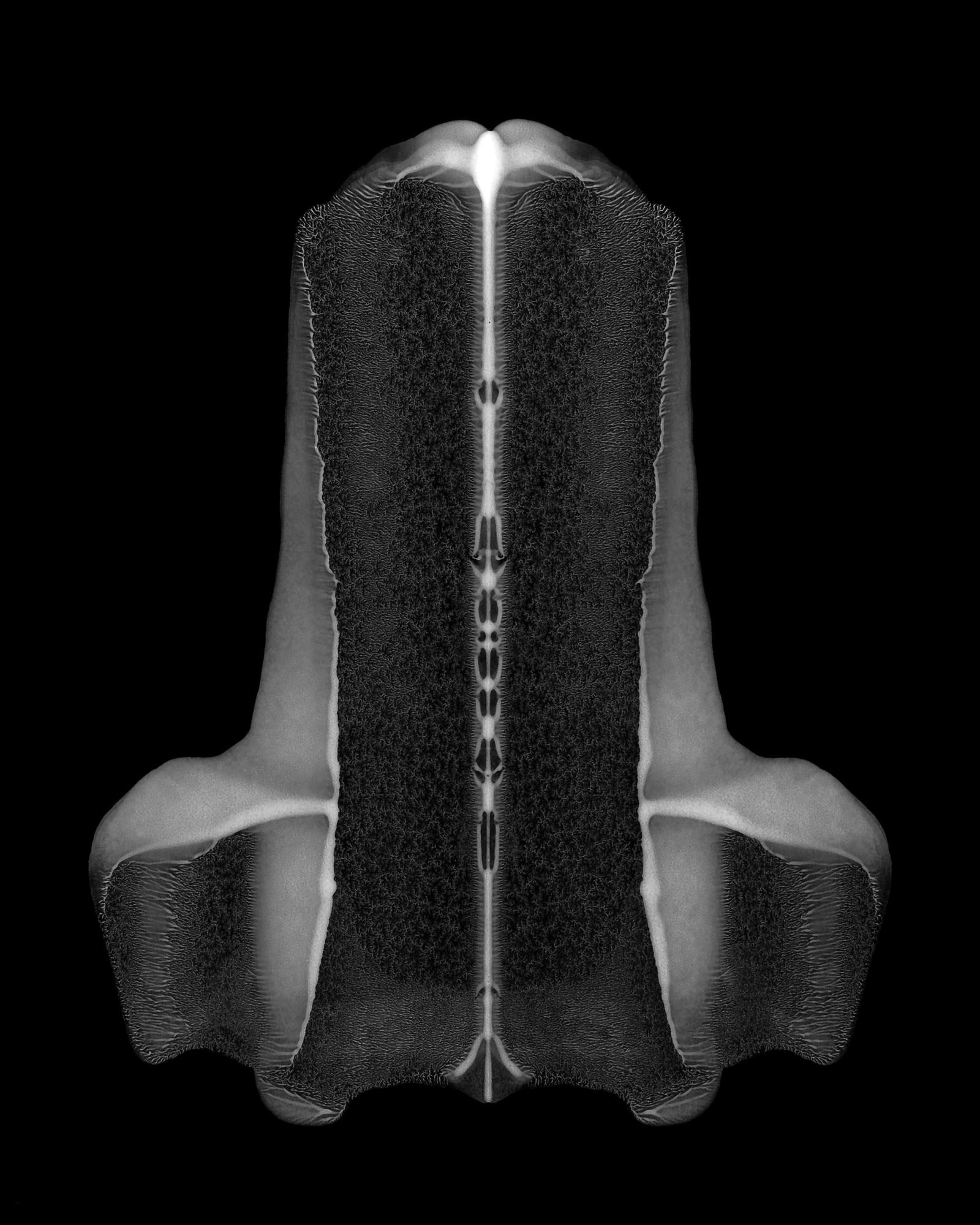
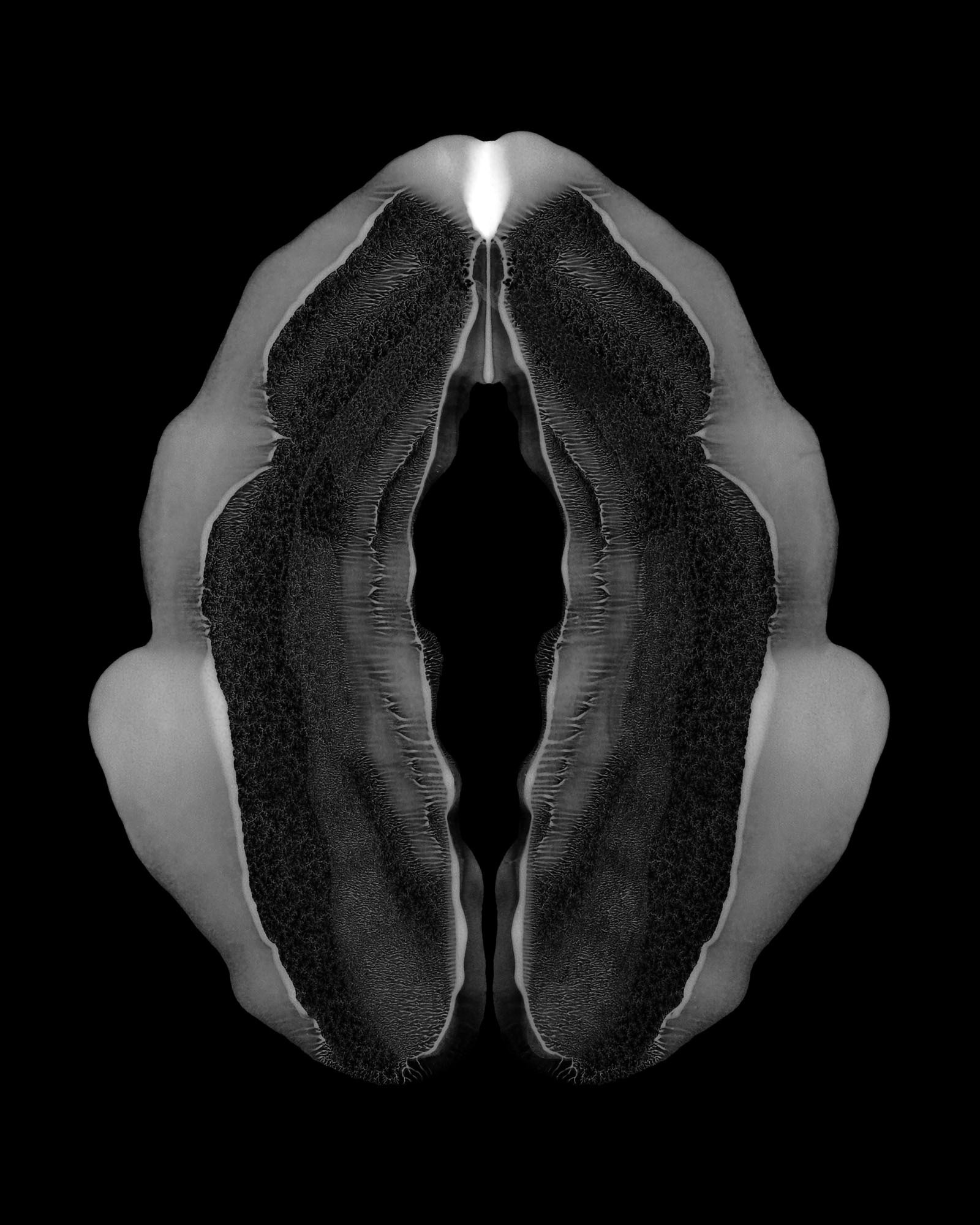
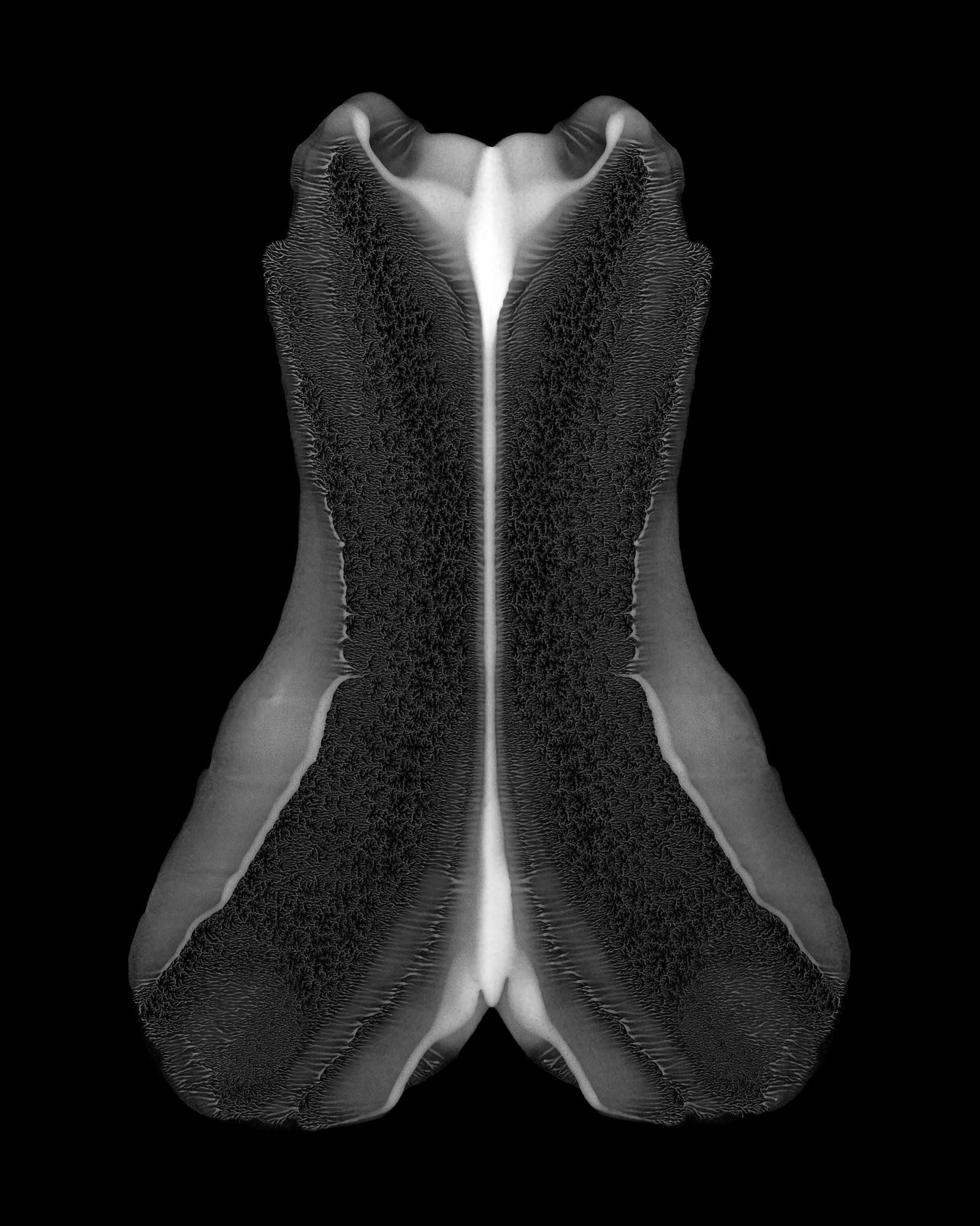
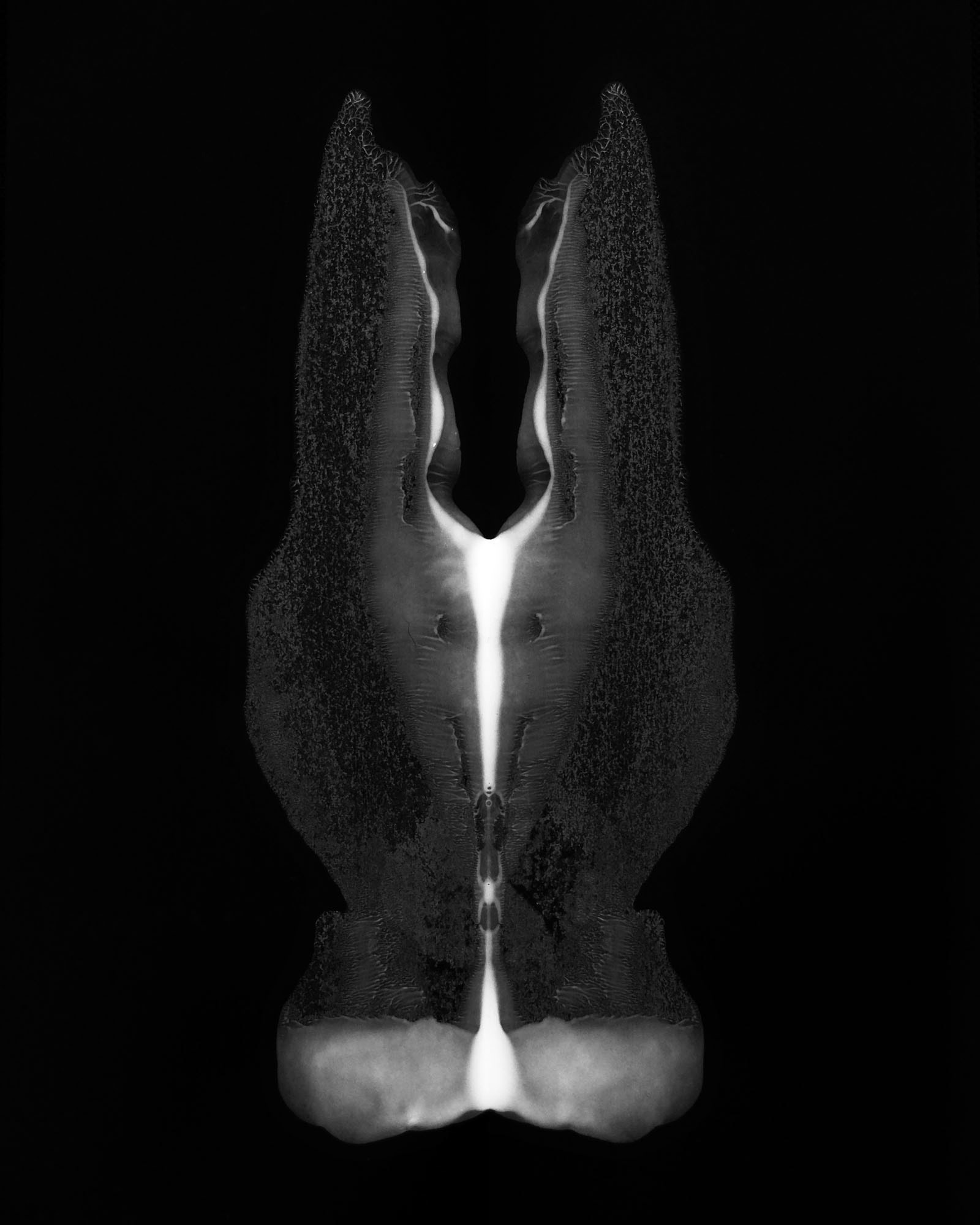
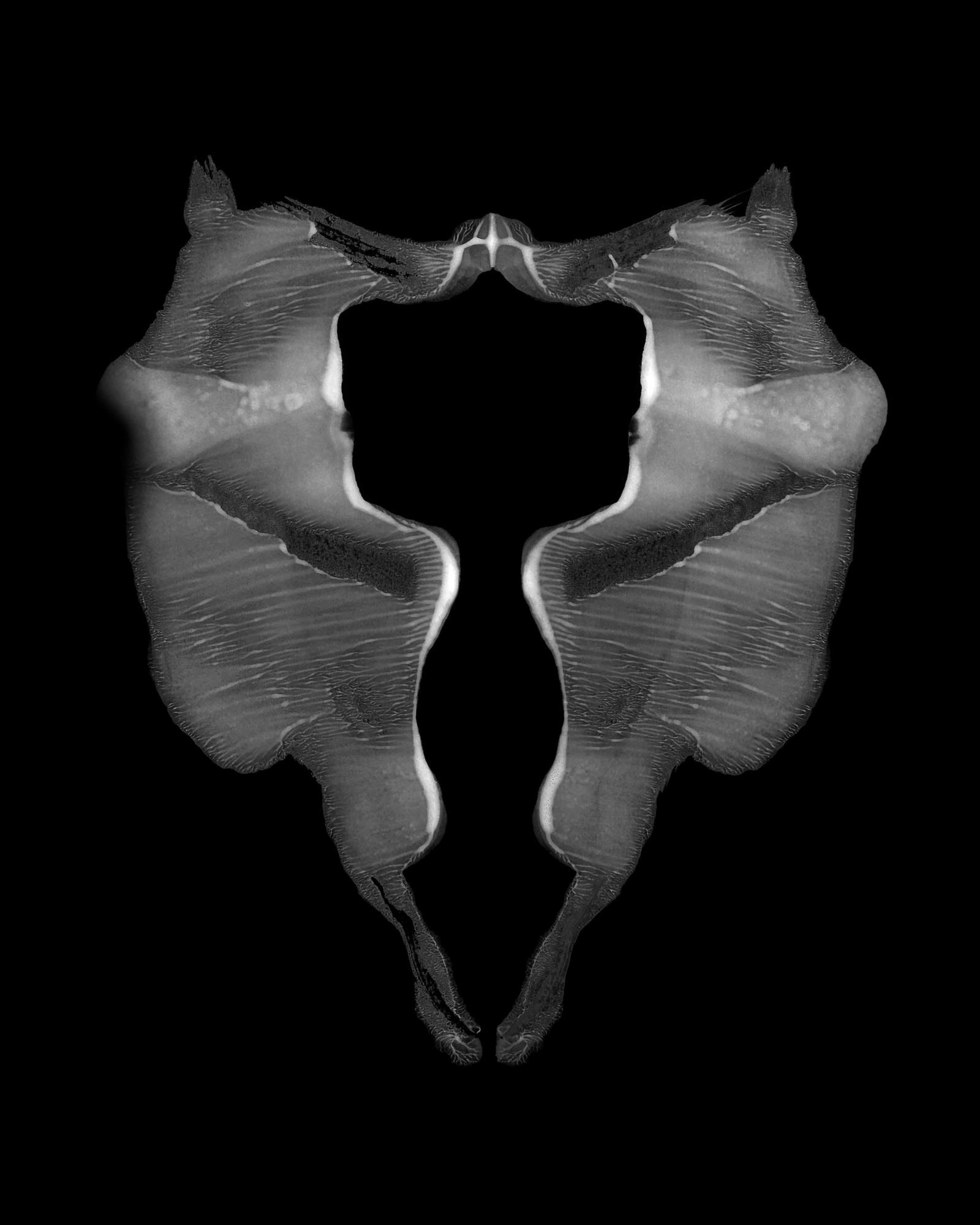
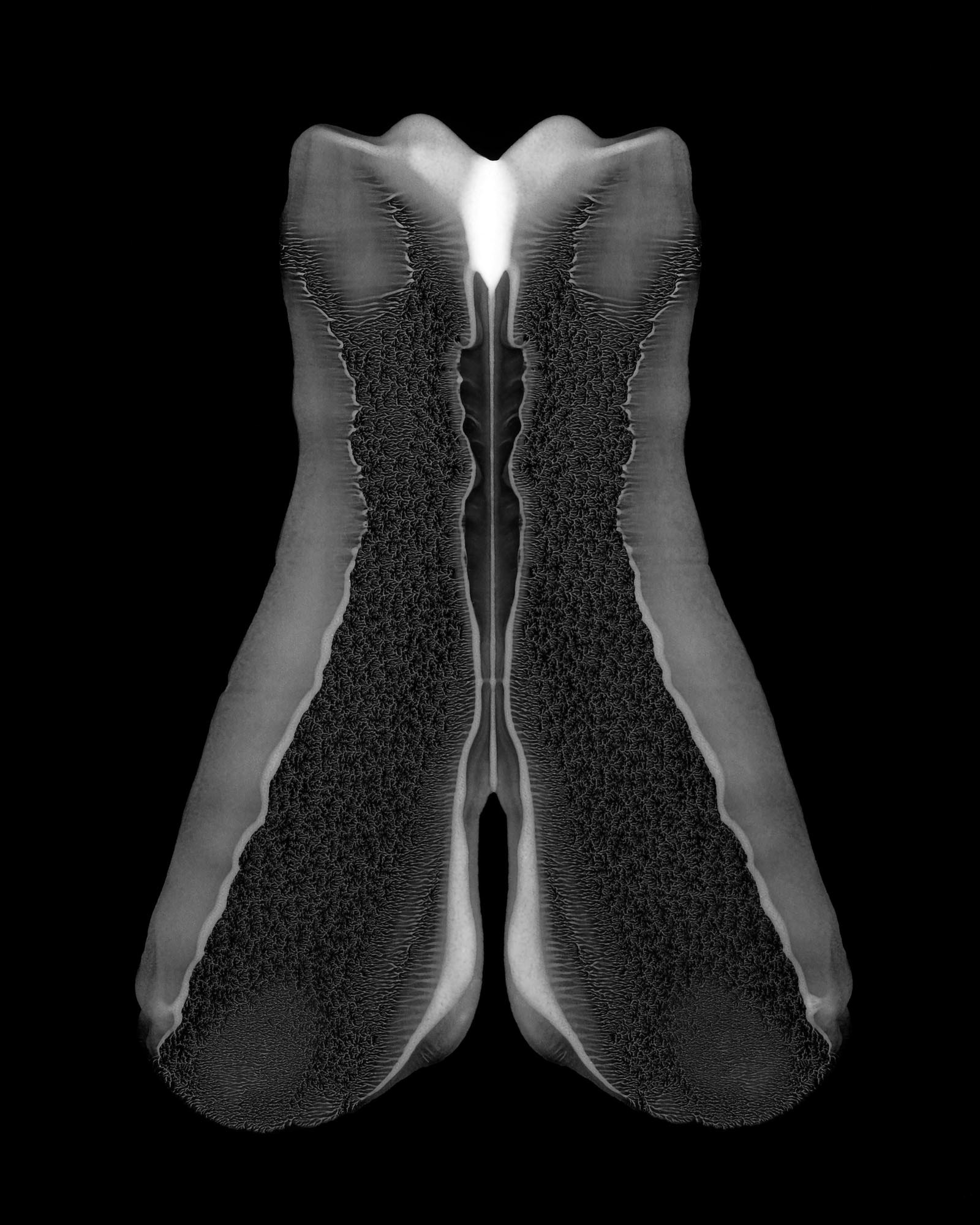
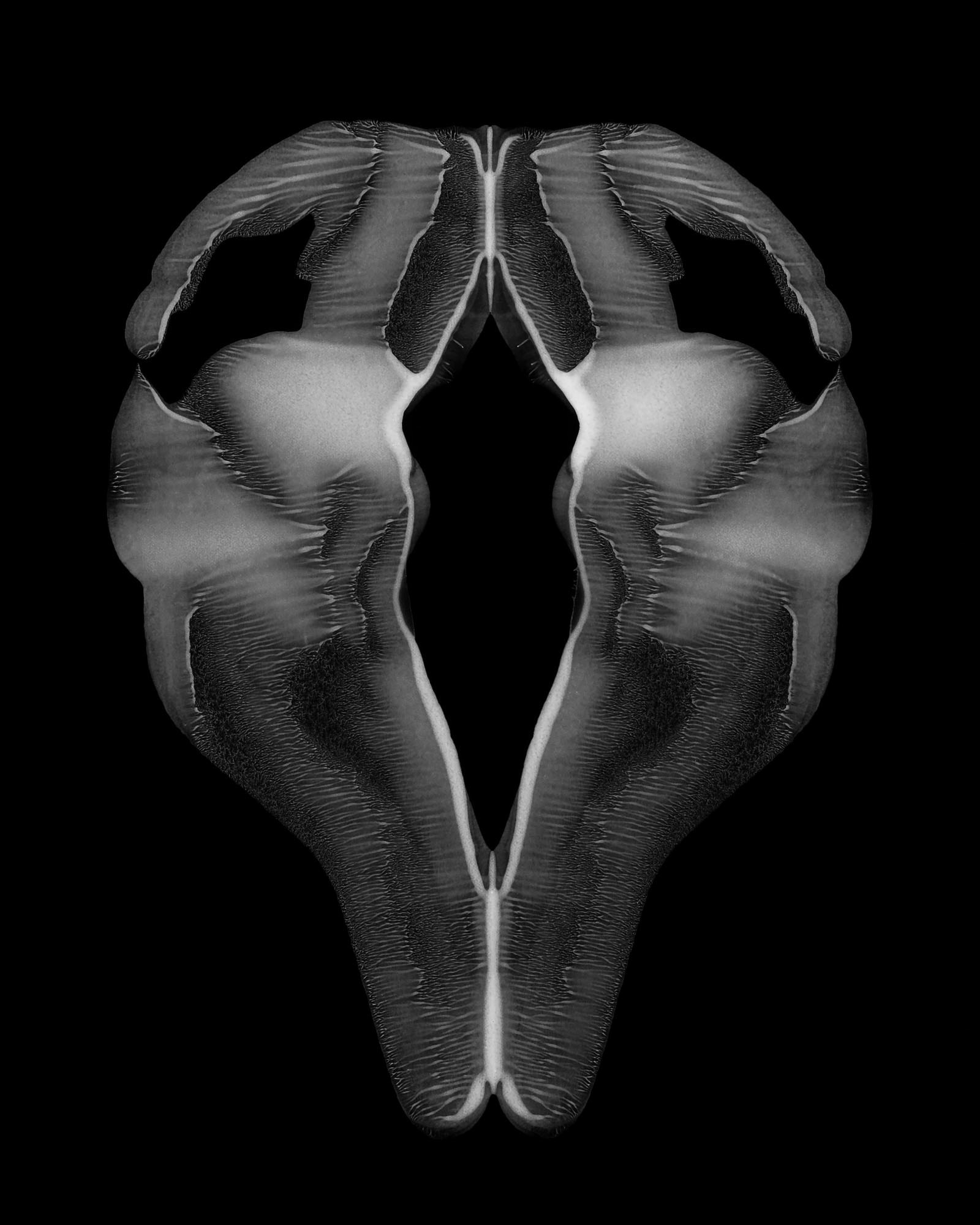
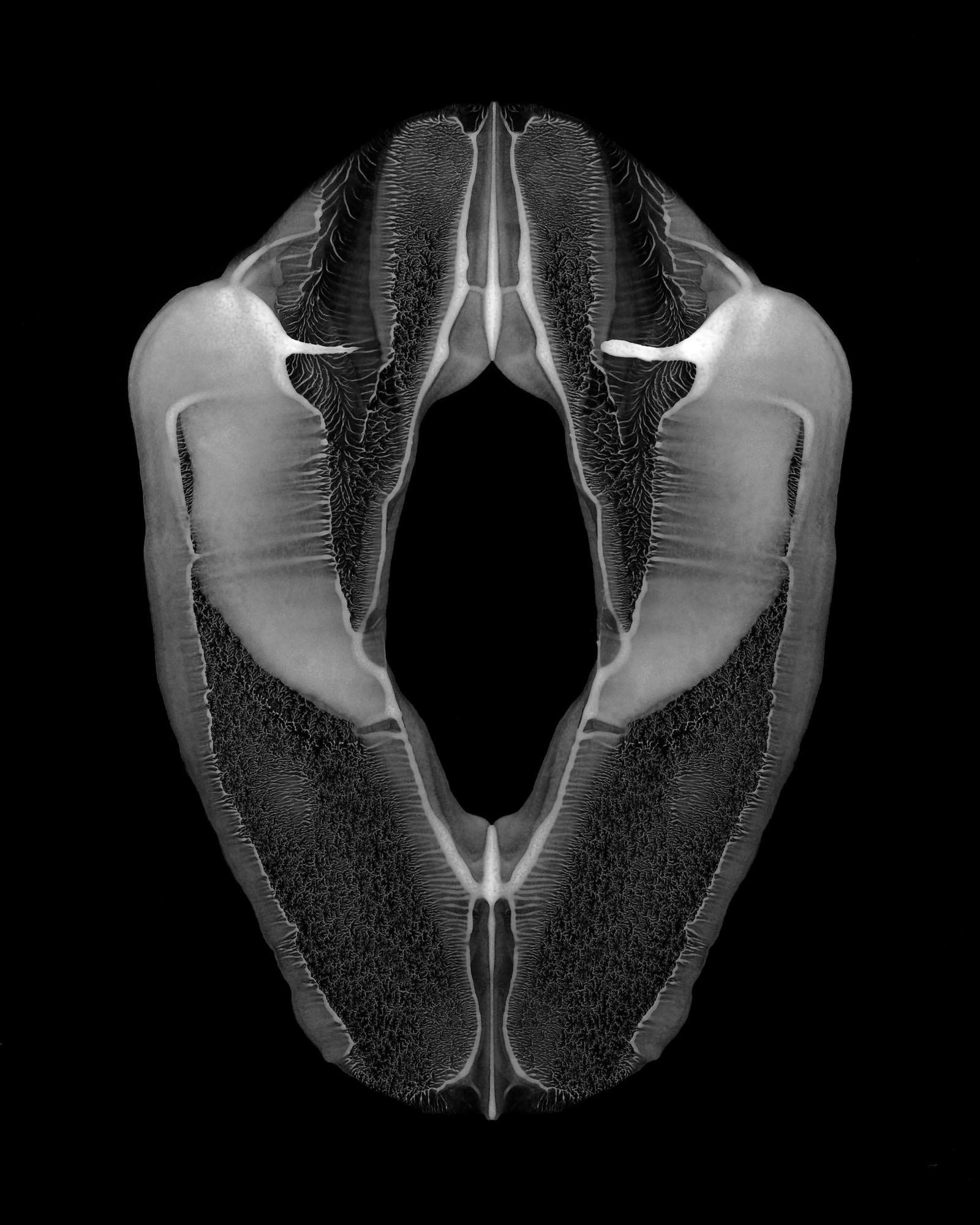
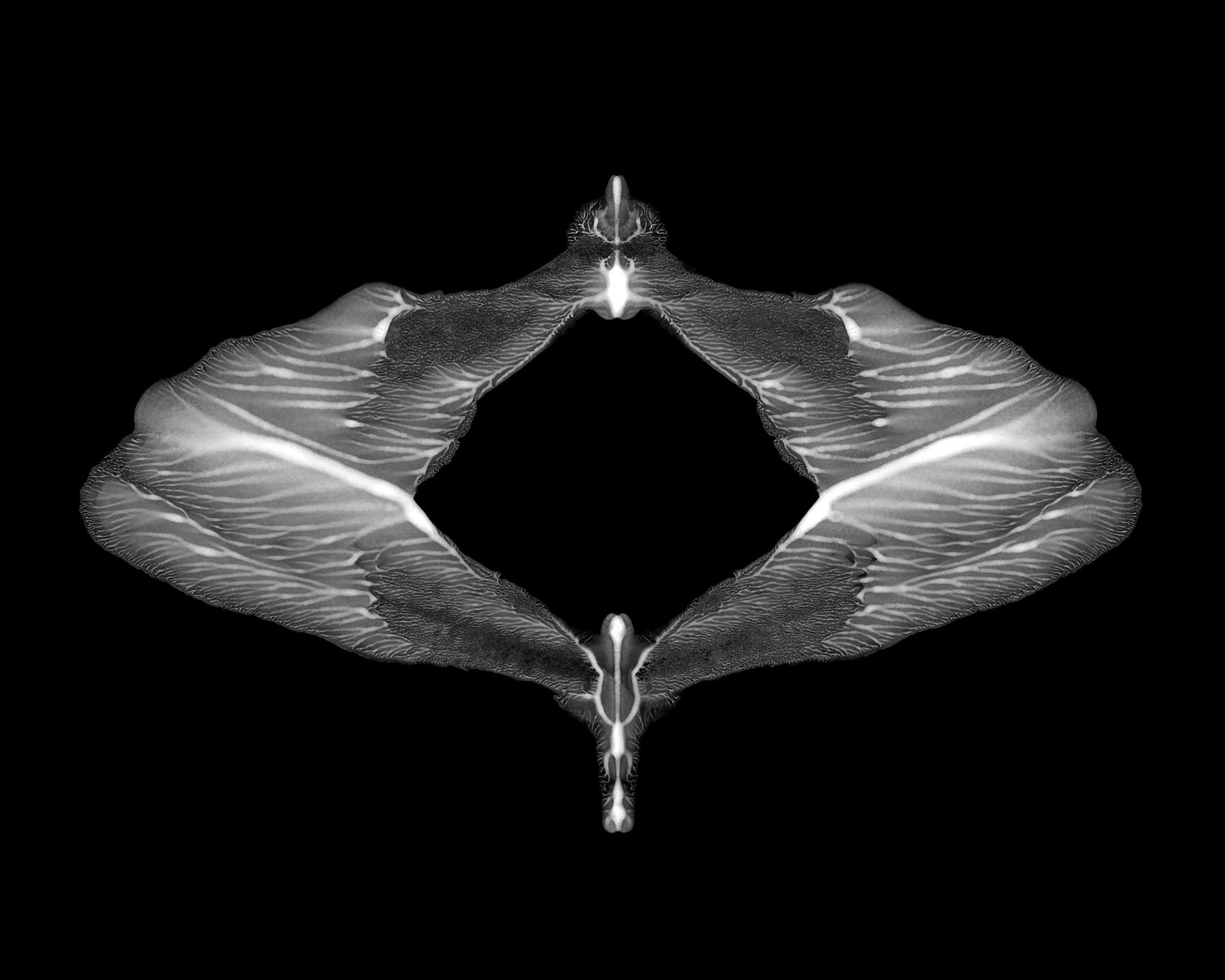
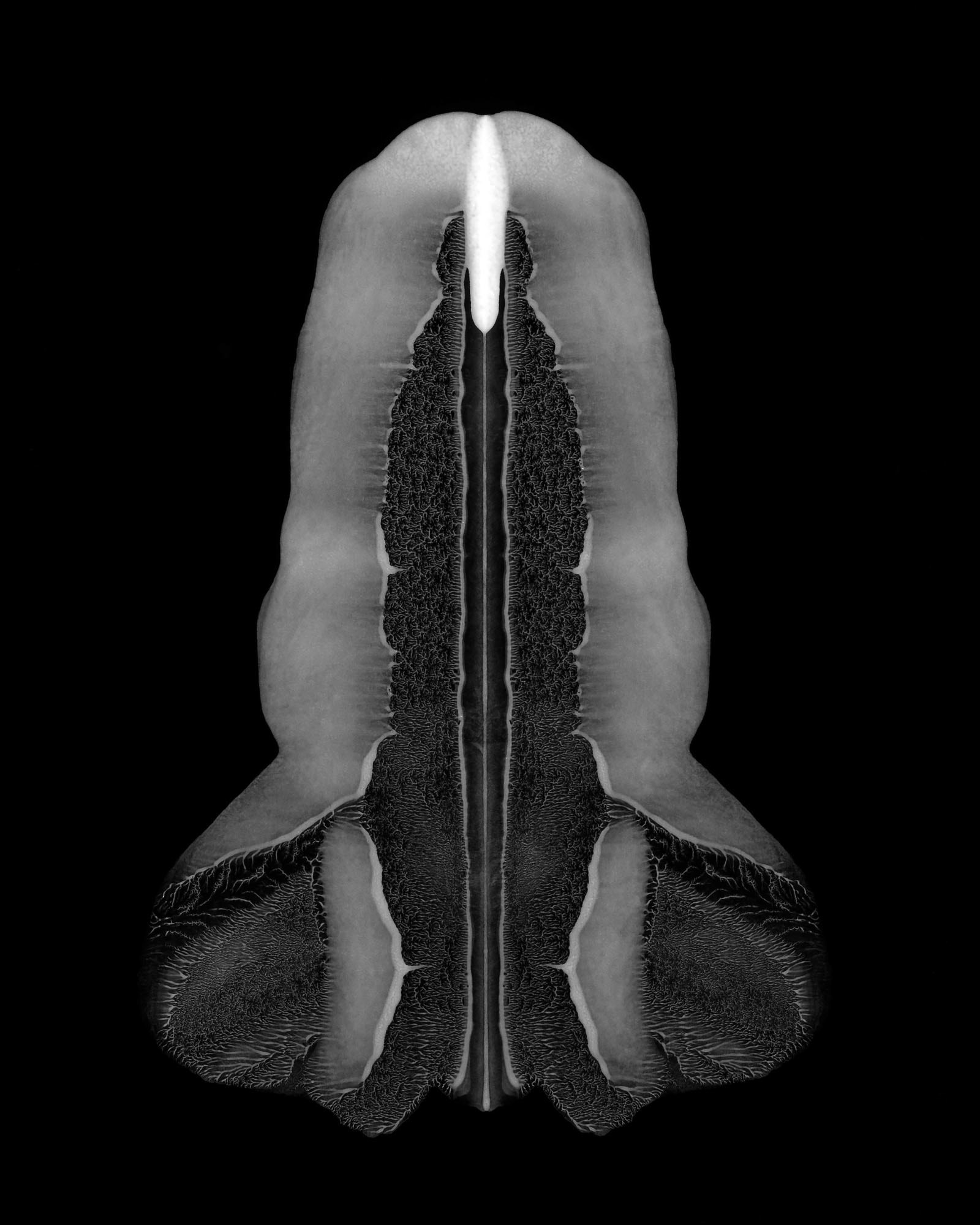
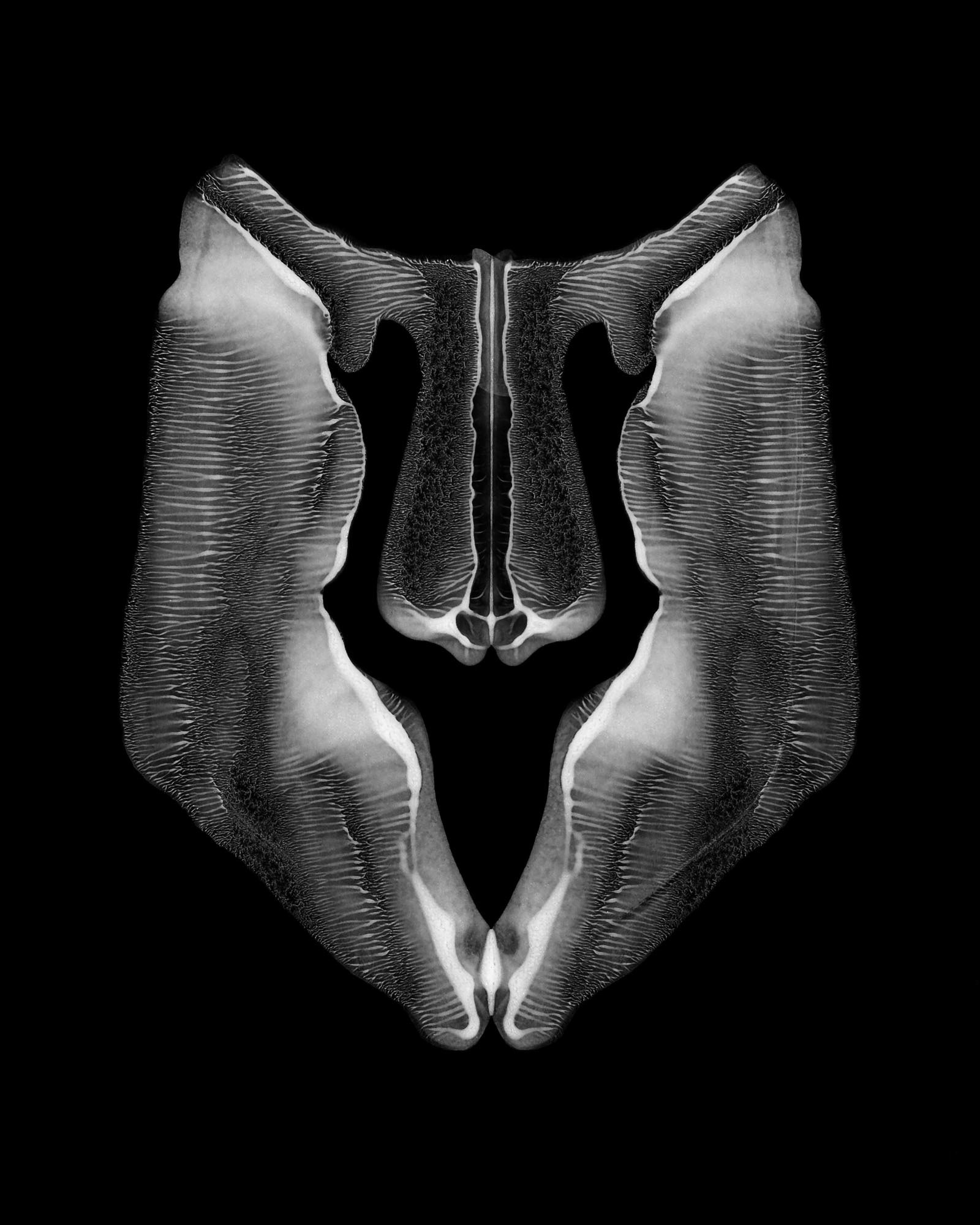
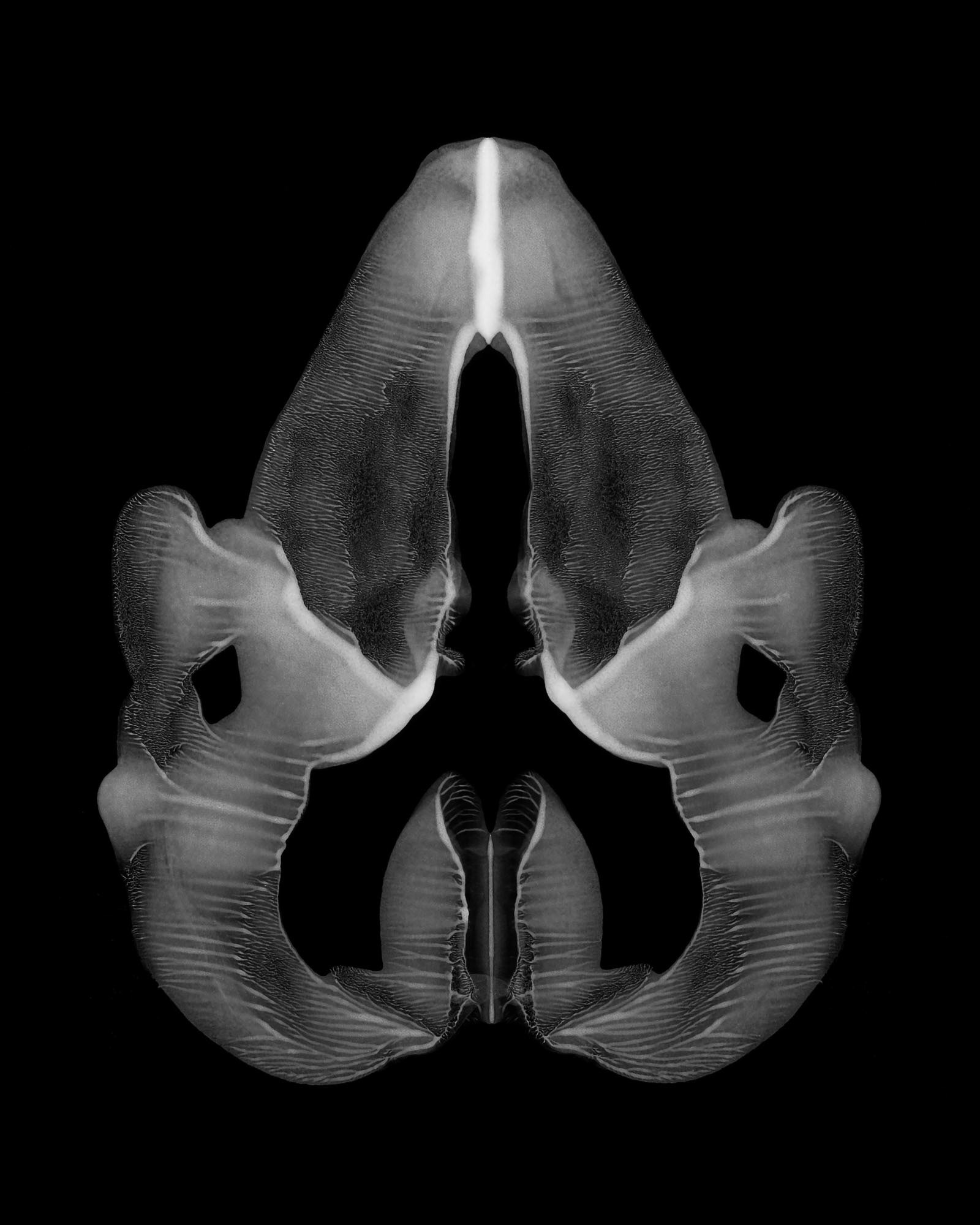
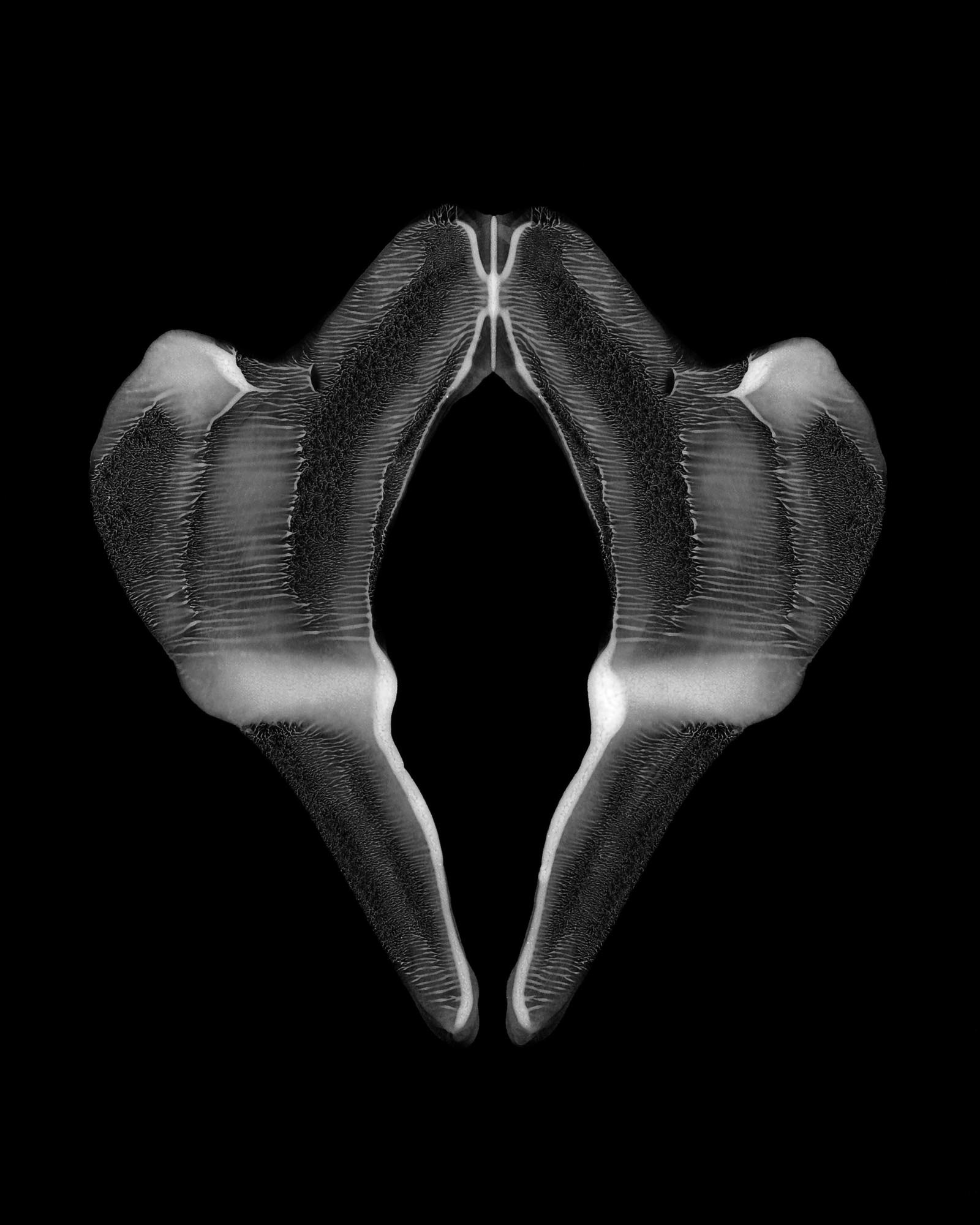
Decalcomania, 2014, materials: black paper, UV paint, size: A4
...
Decalcomania - My Blood
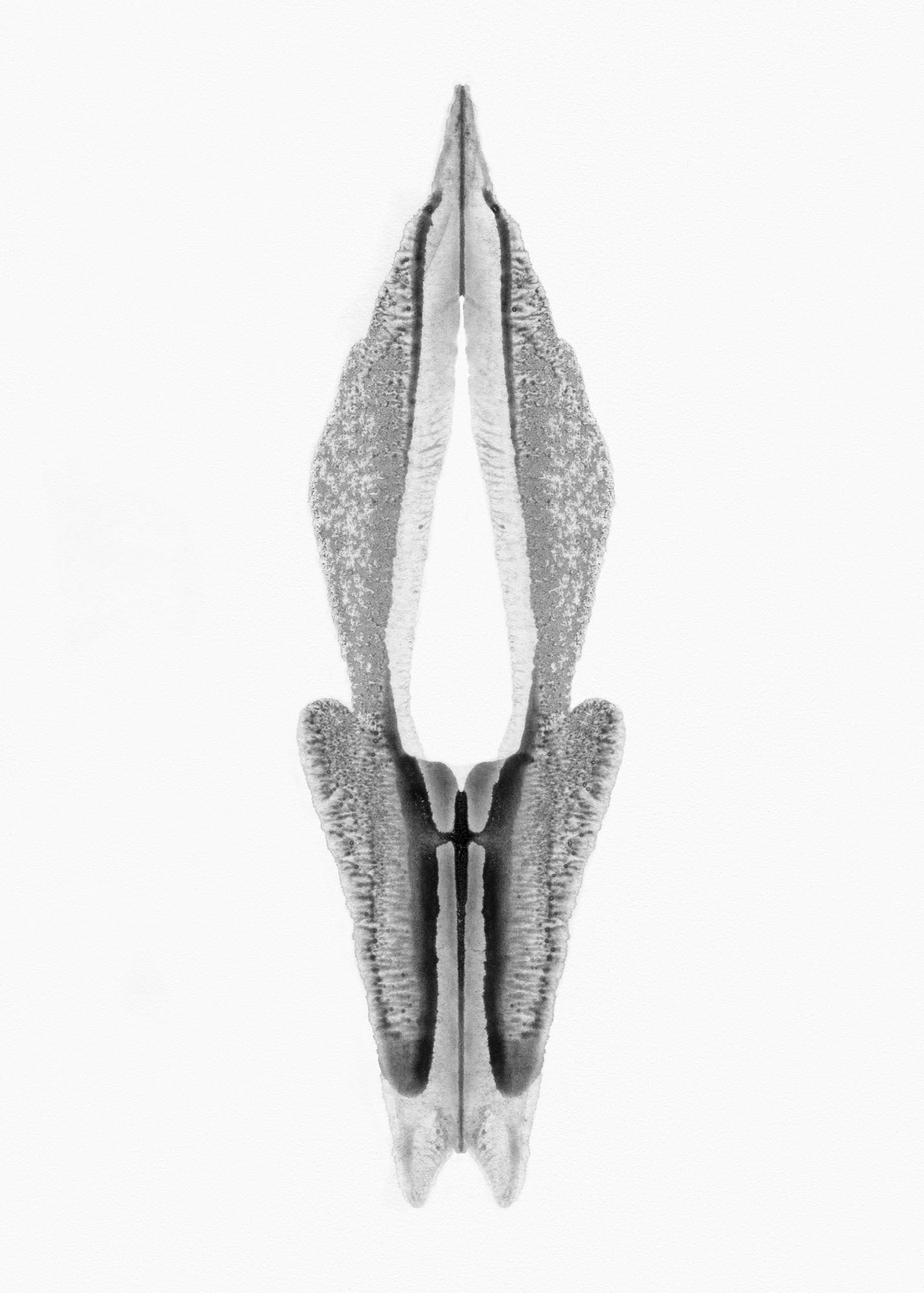
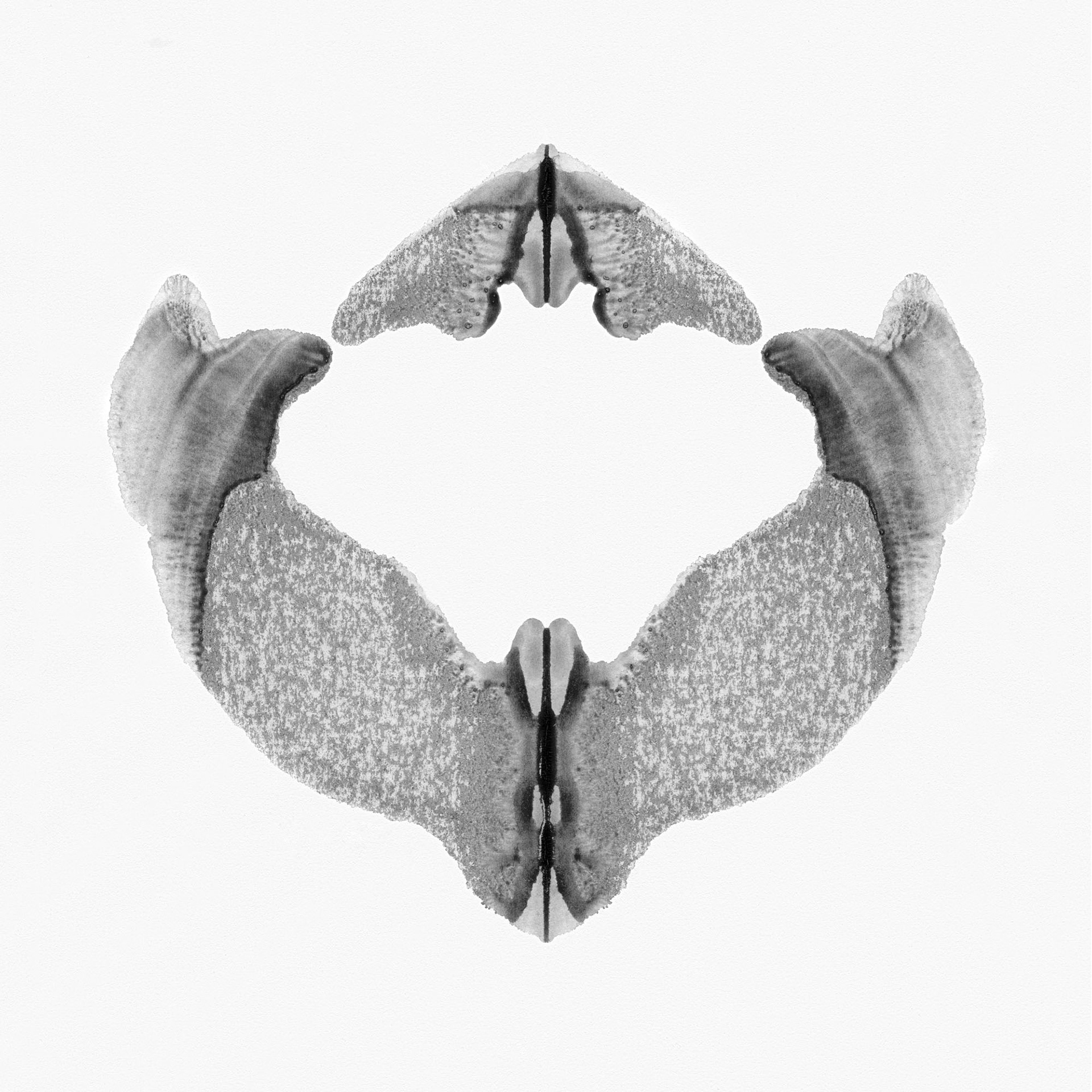
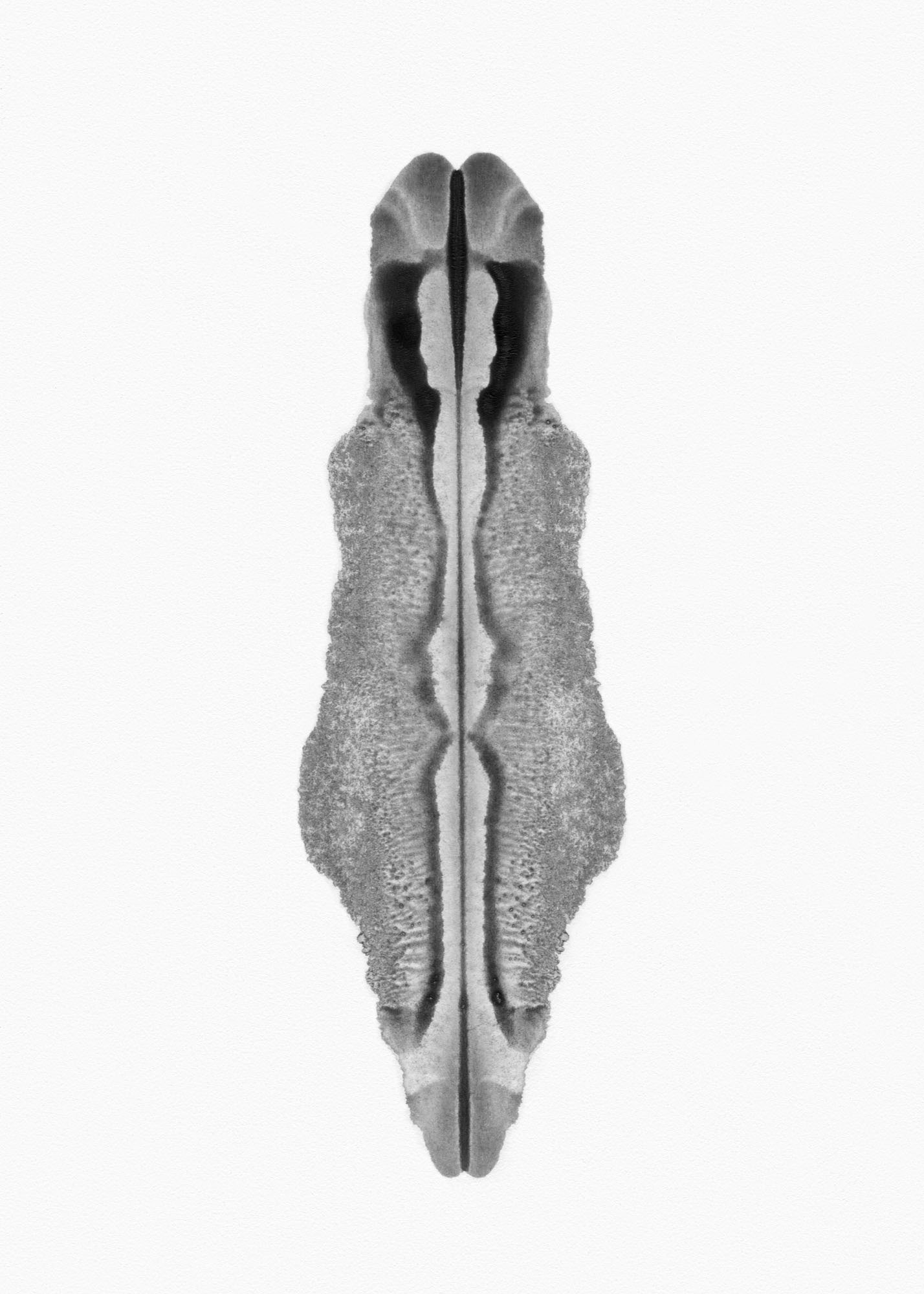
Decalcomania, My blood, large prints on foamed, originals made out of paper and my blood.
Sub ROSA..
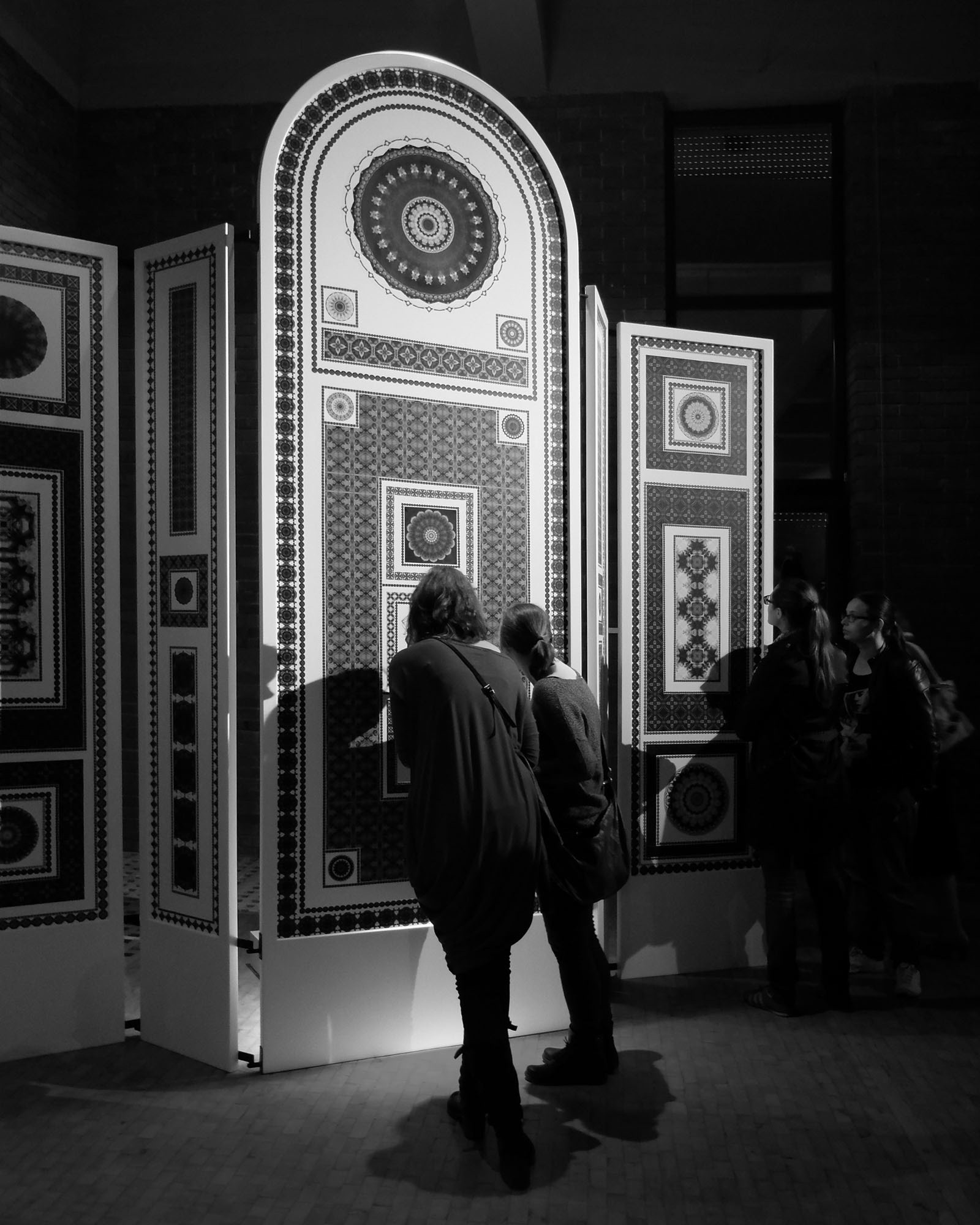
"Sub rosa" literally means "under the rose," but figuratively, it signifies a secret. In ancient times, the rose was a symbol of discretion. When a meeting host hung a rose above the table, it signaled to the guests that the conversation's content must remain confidential. The central element of the work is a 3.5-meter-high screen, whose shape and size evoke an altar. The wings of the screen are richly adorned with patterns inspired by the decorations of sacred objects. These patterns are composed of stark images depicting current events shaped by human actions. Before being converted into patterns, the images were processed so that the only color retained was the color of blood. A catalogue of these images is placed on the pulpit concealed by the screen.
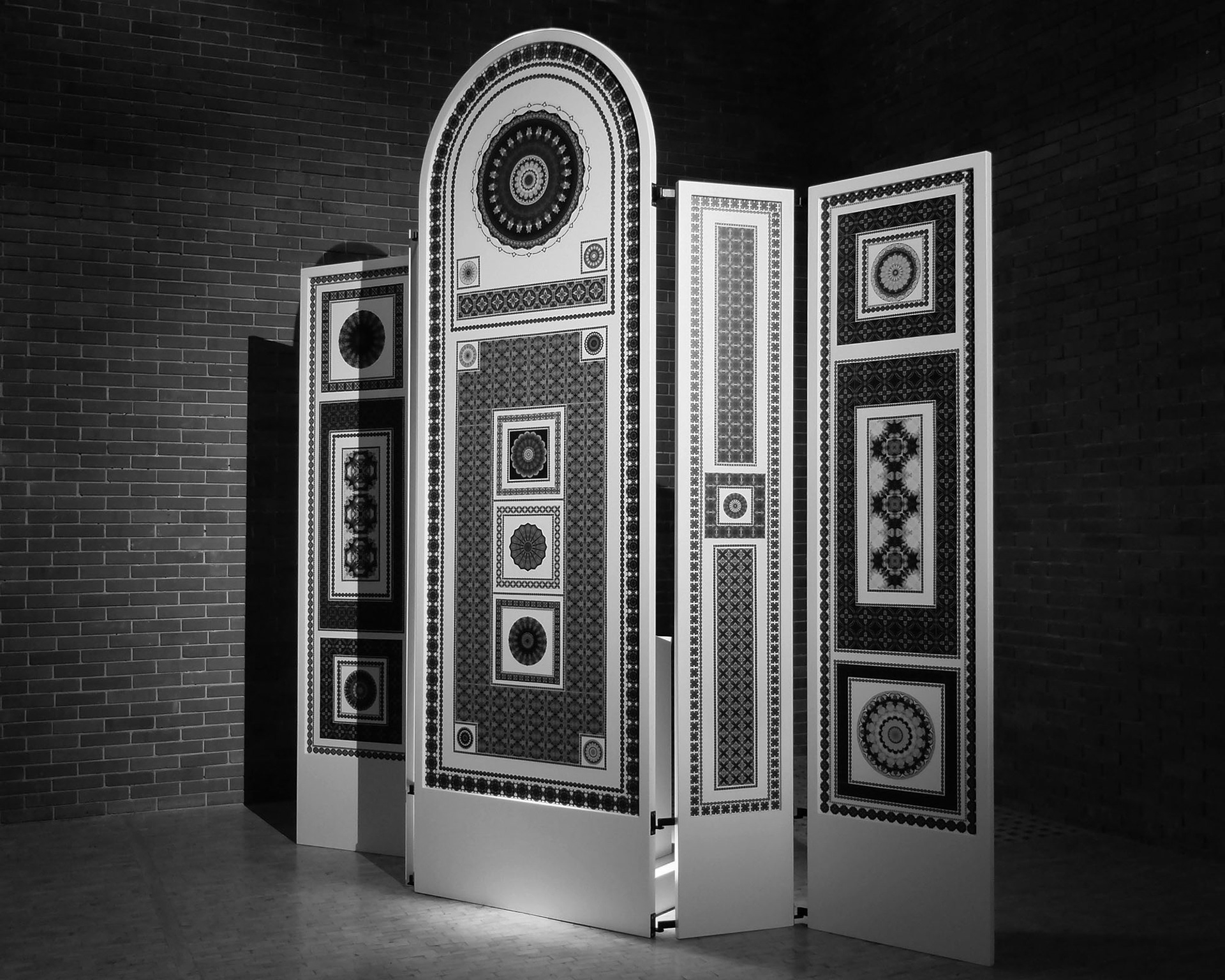
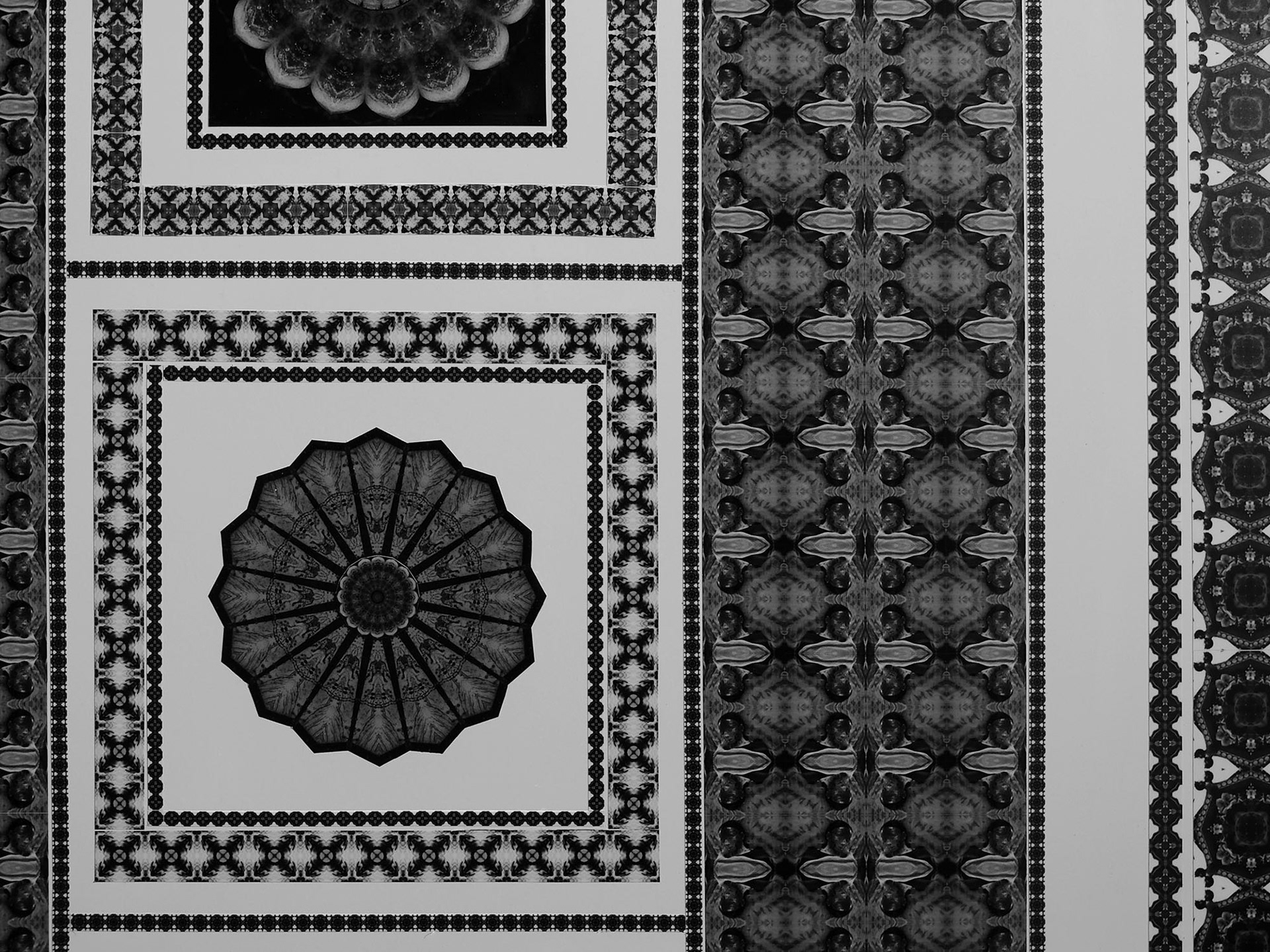
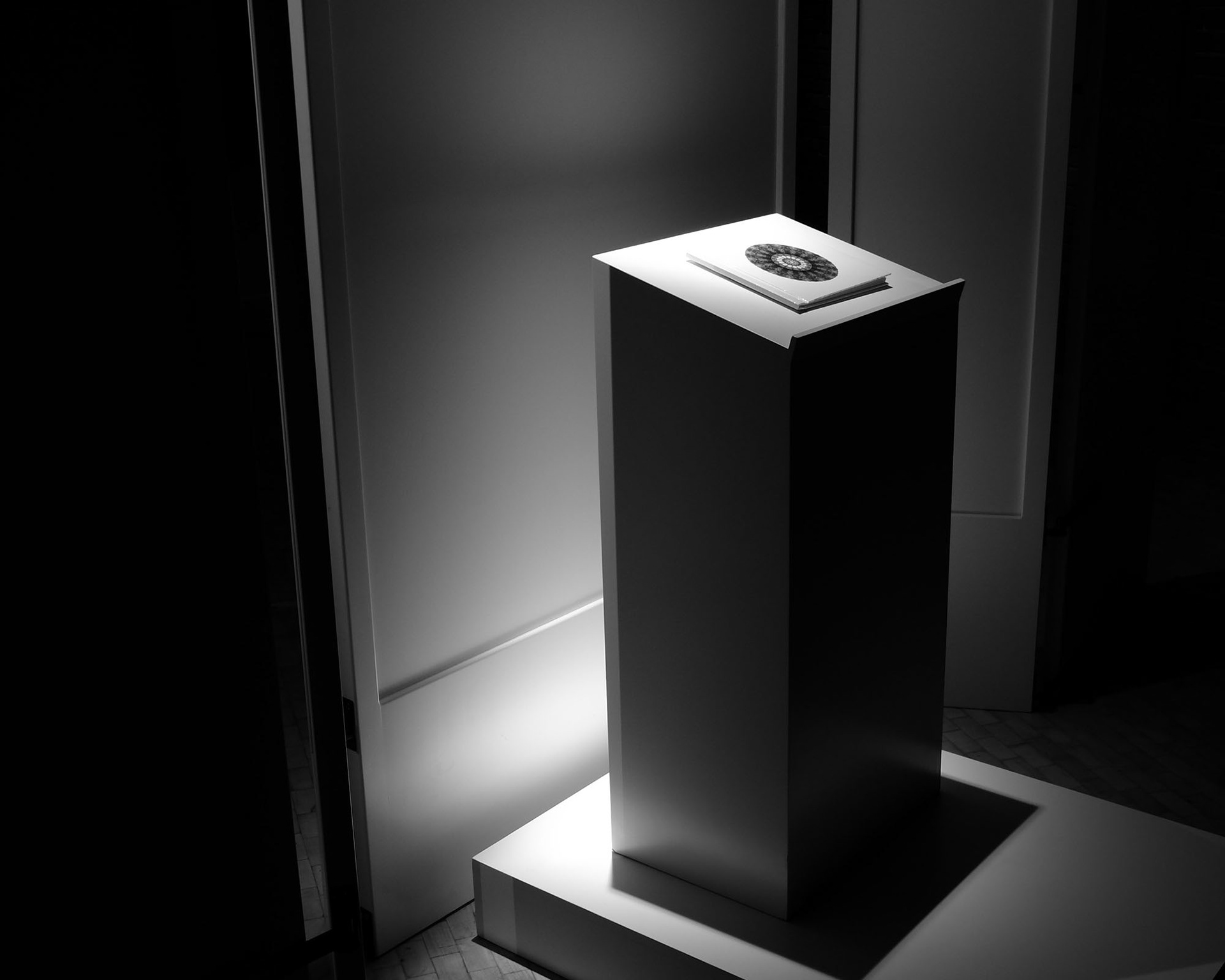
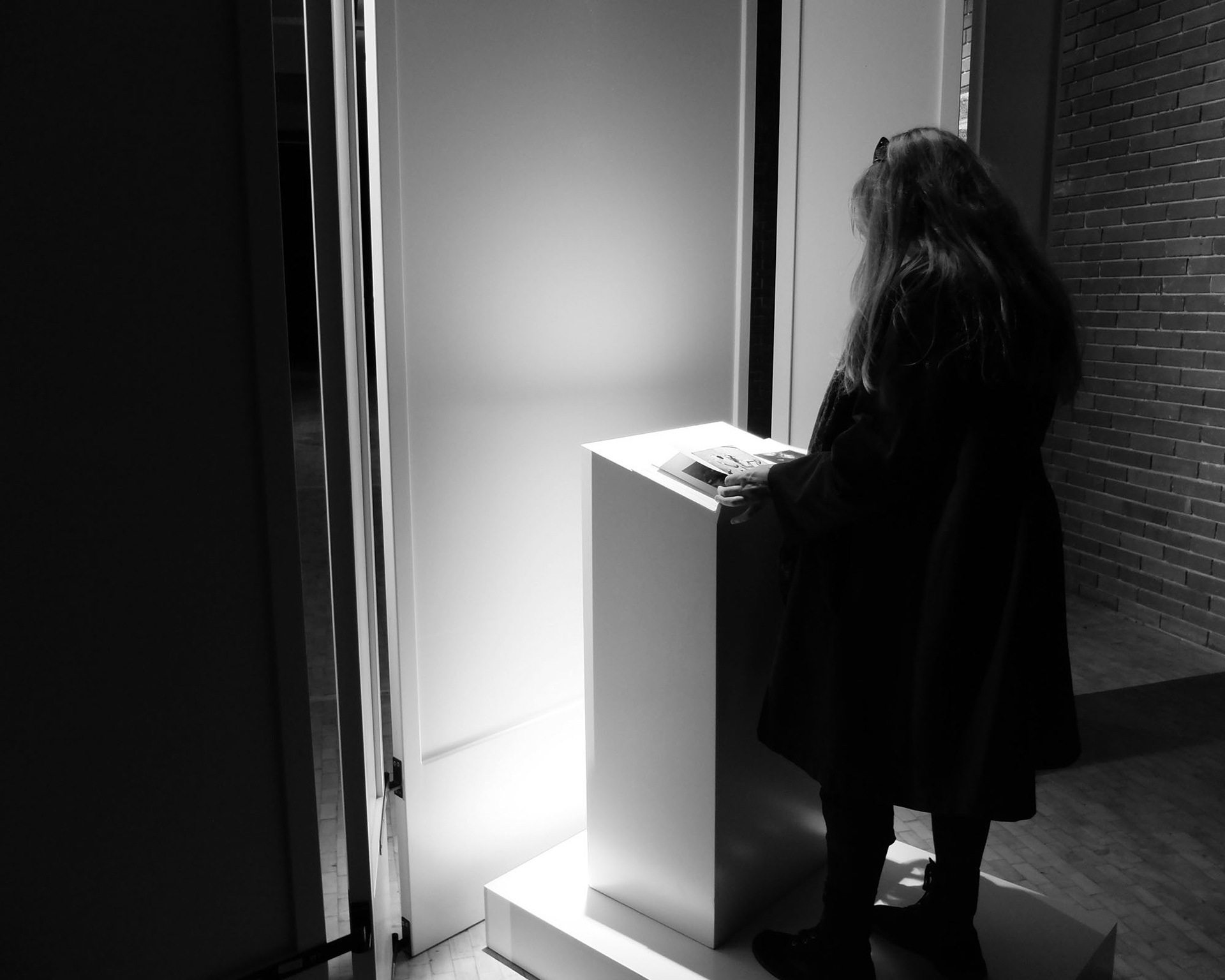
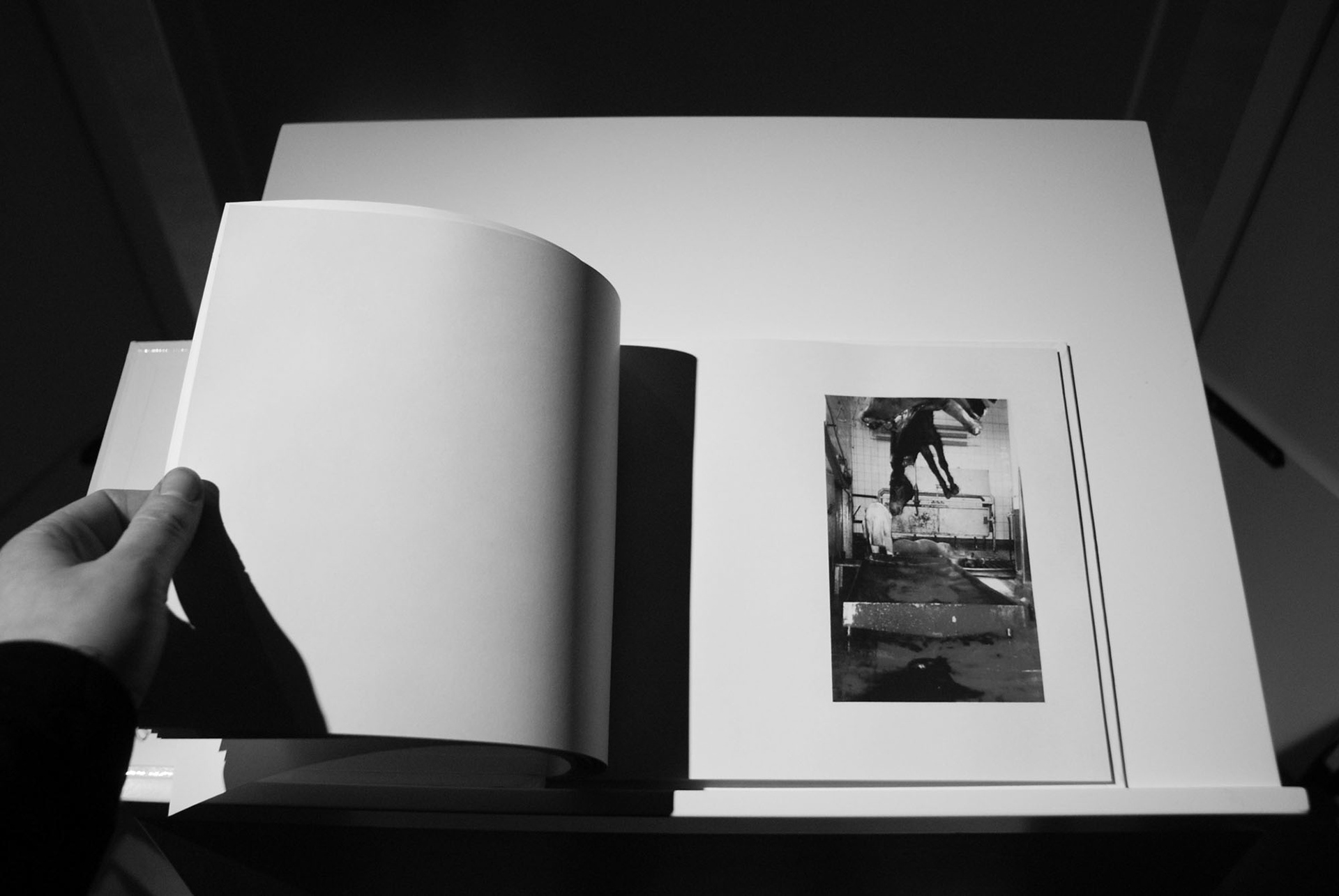
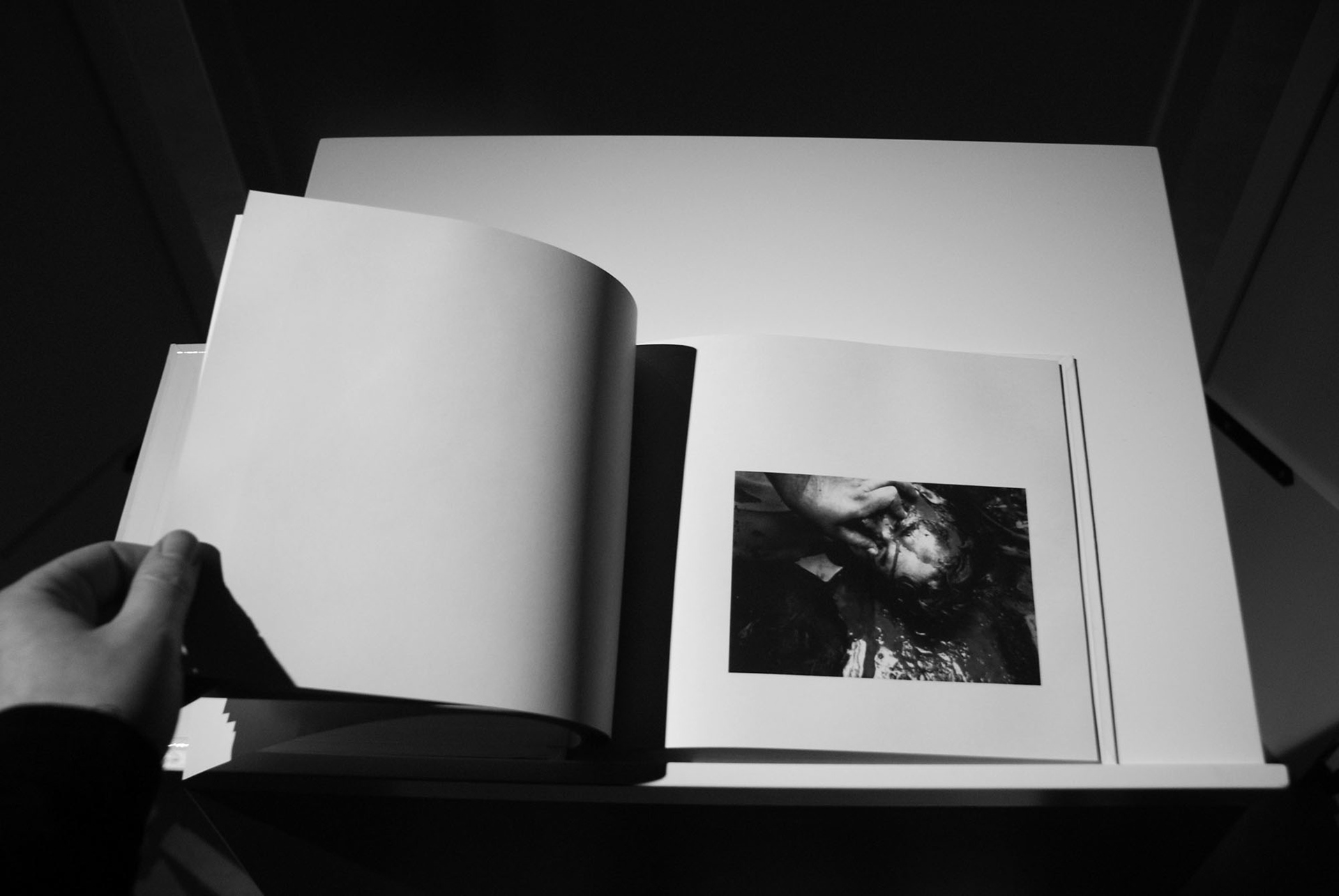
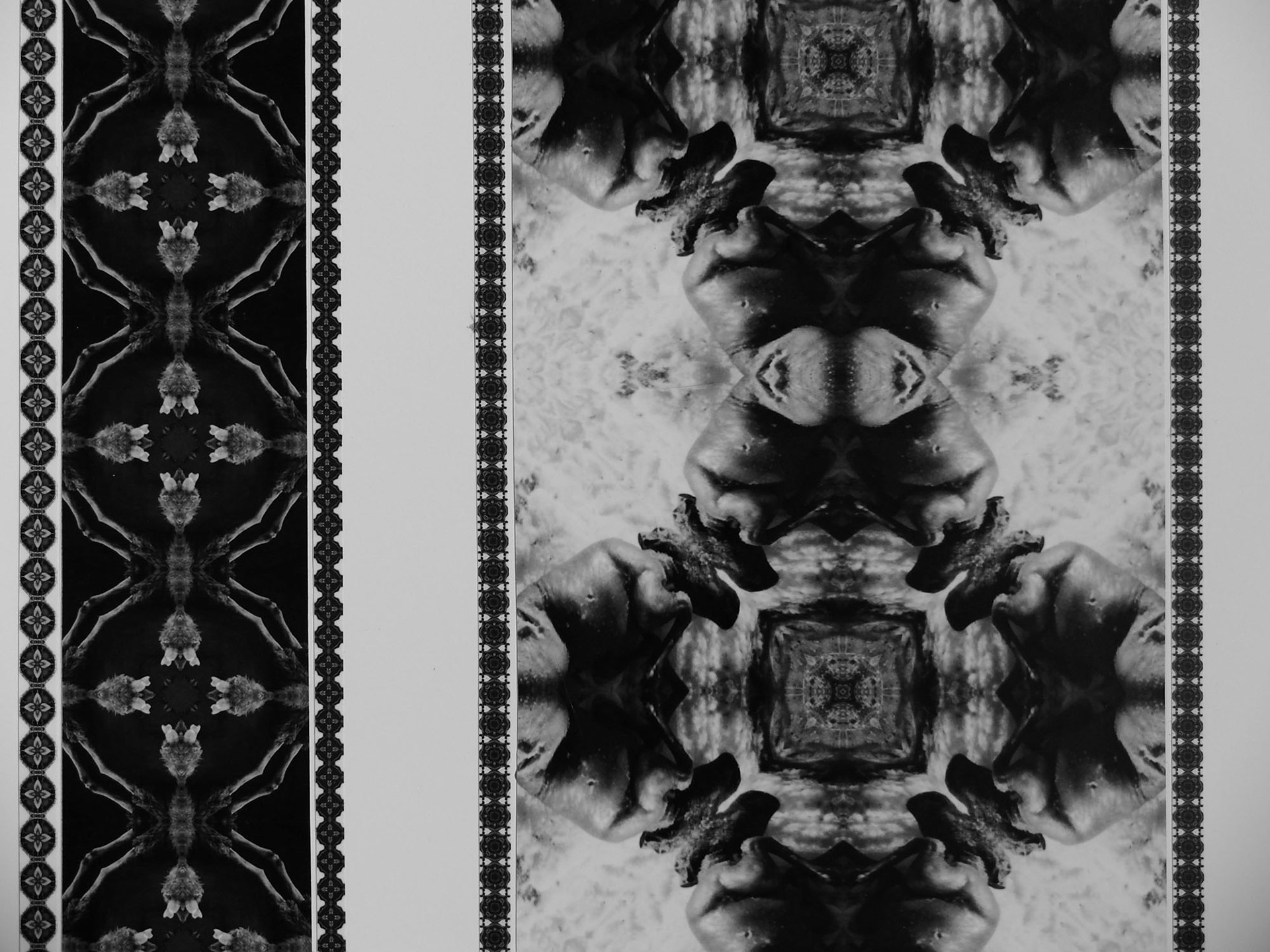
...
Decalcomania ..2012
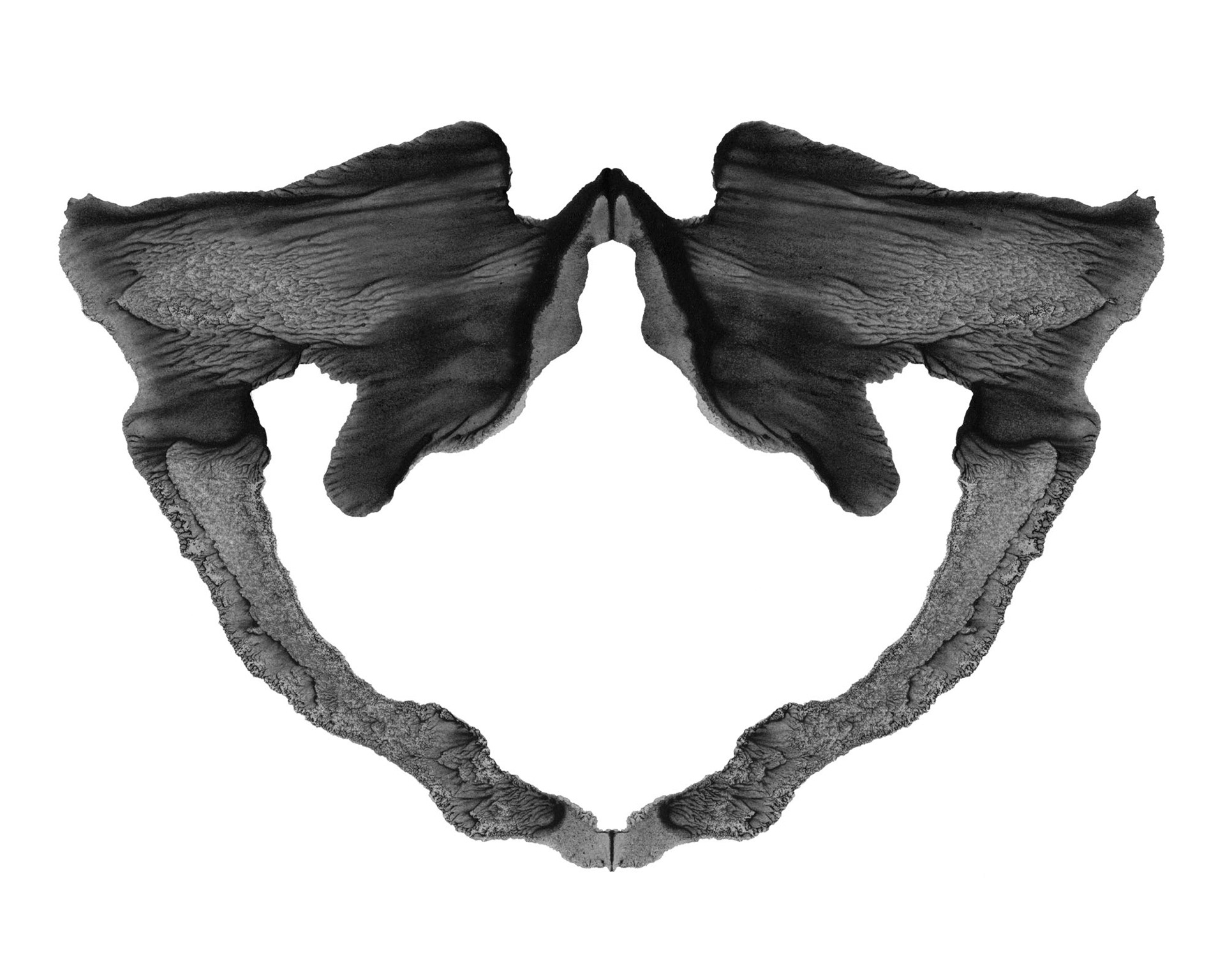
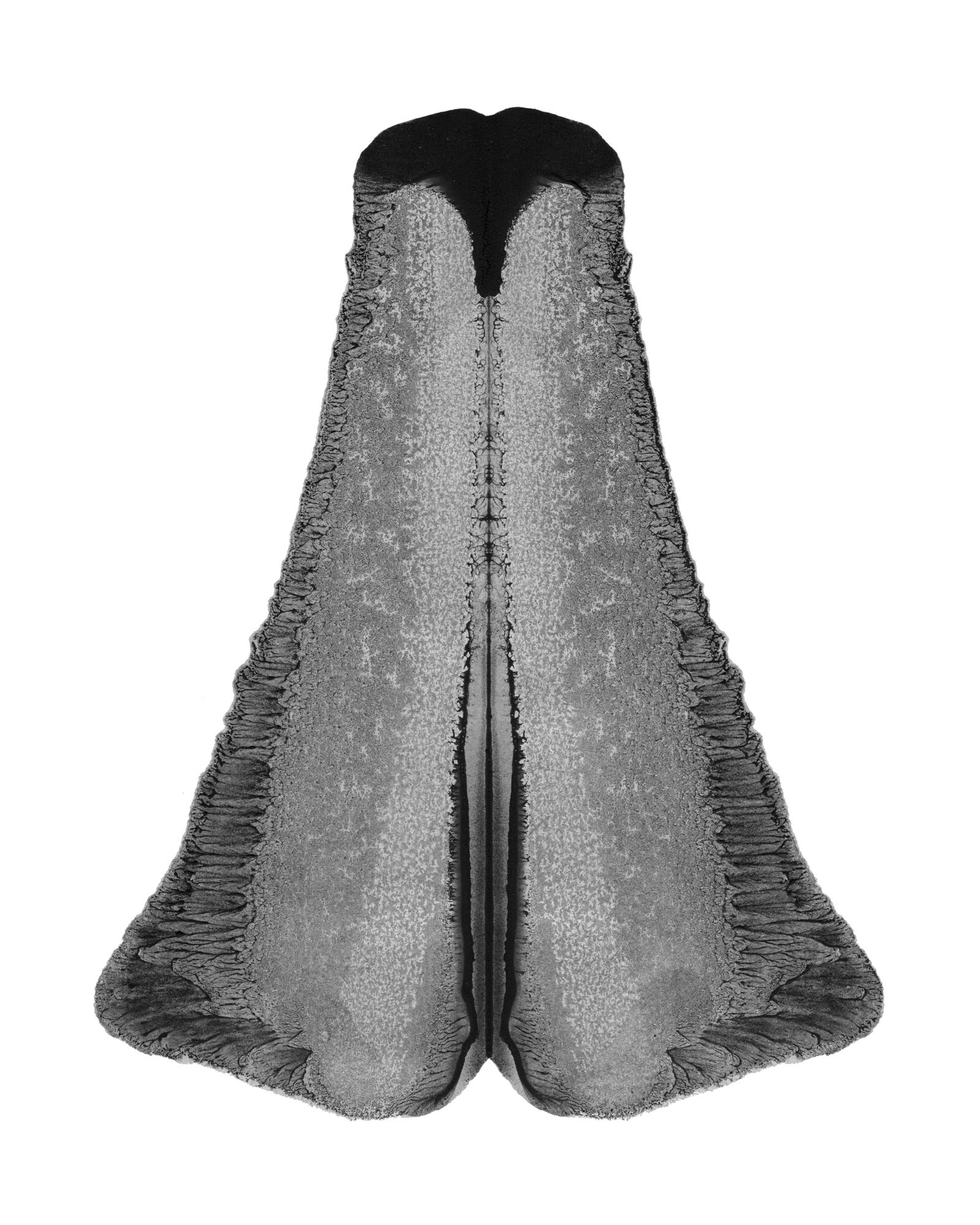
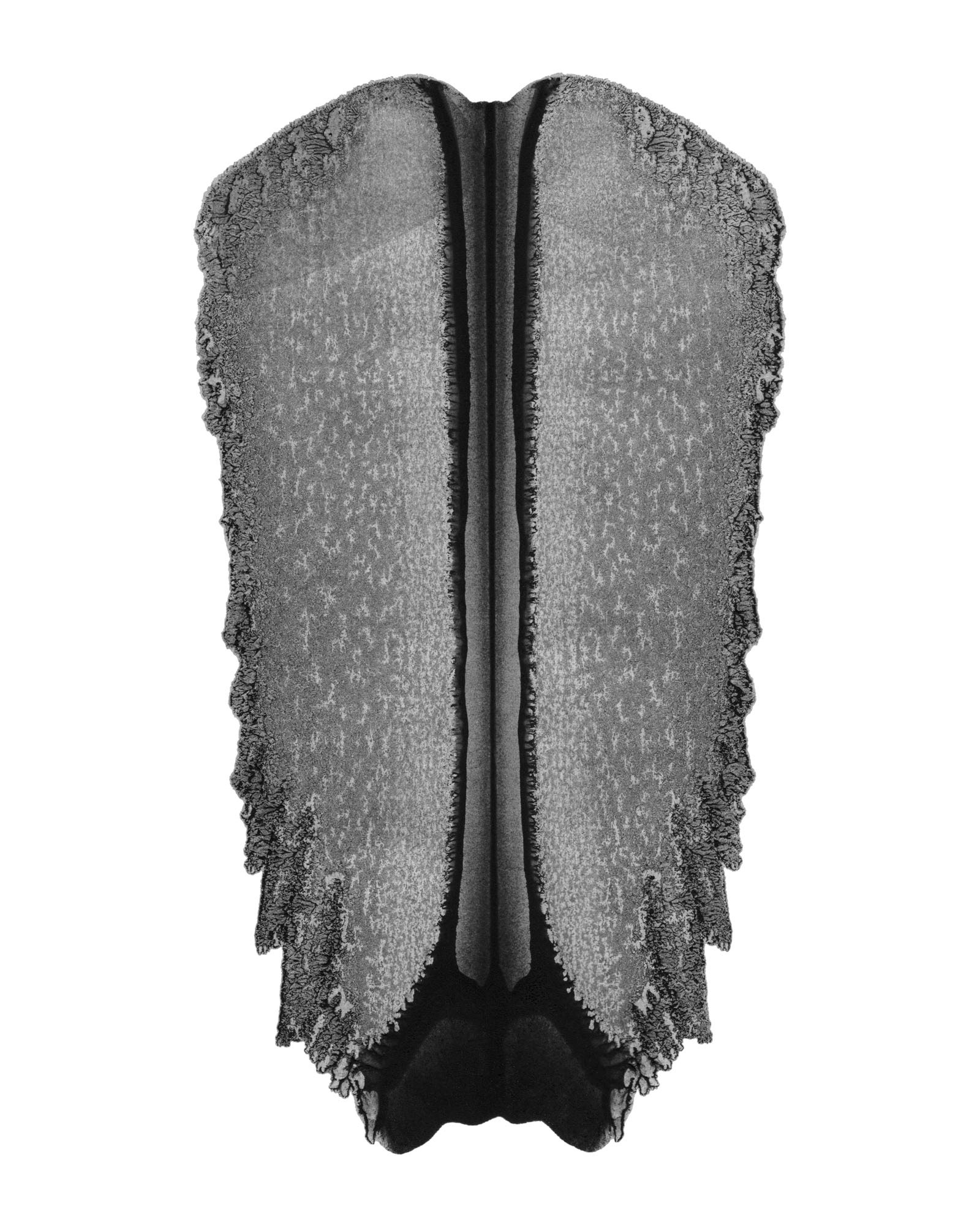

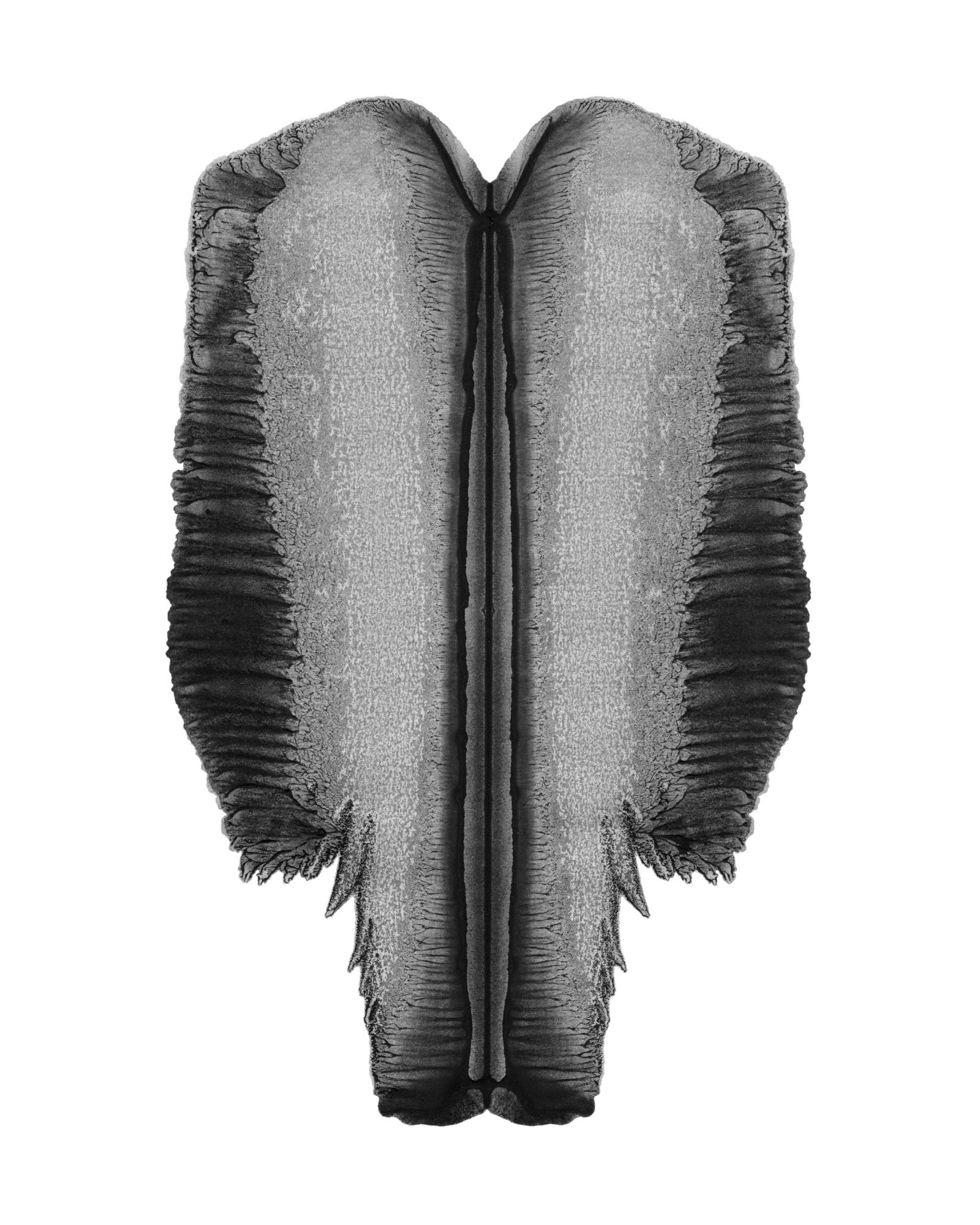
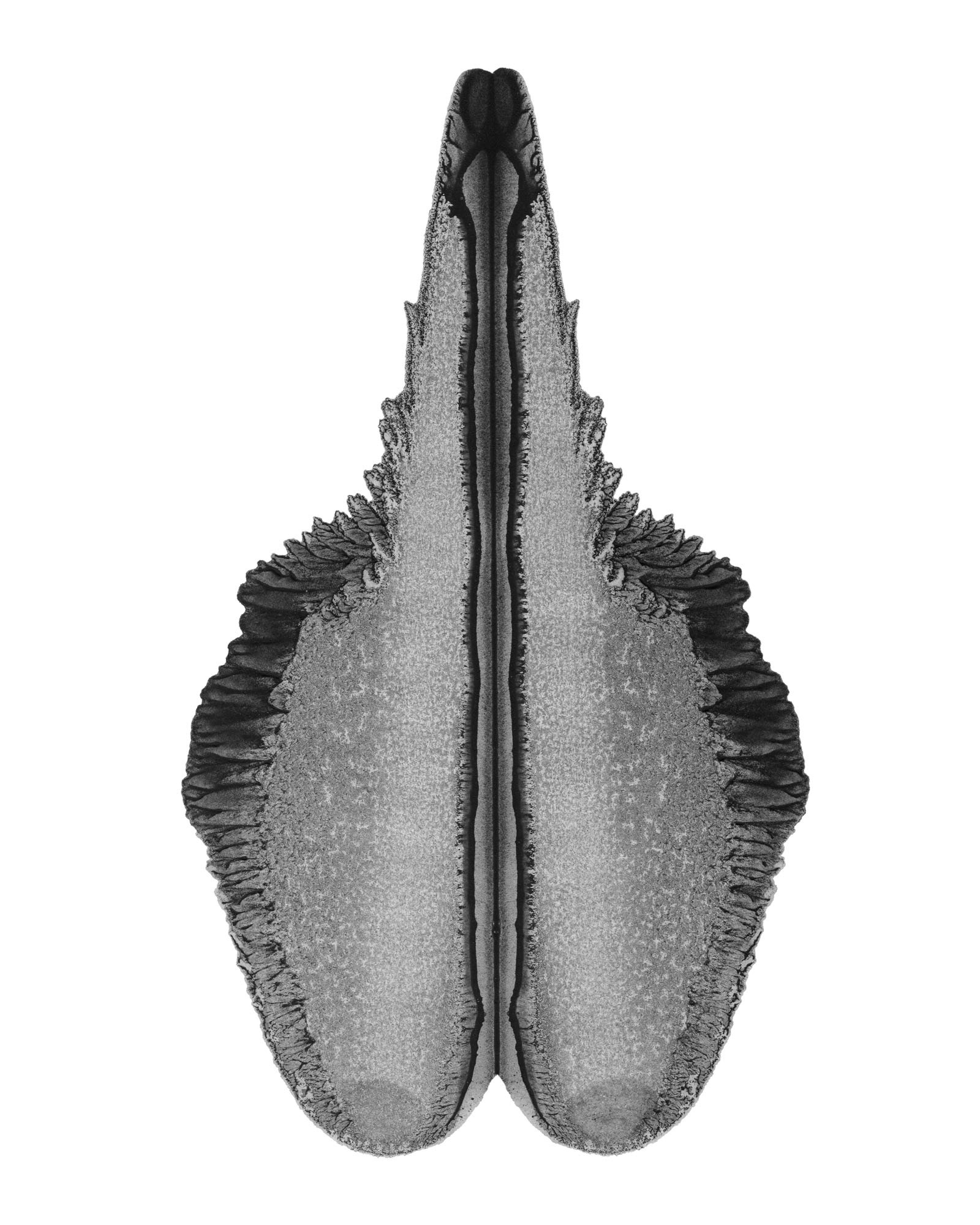
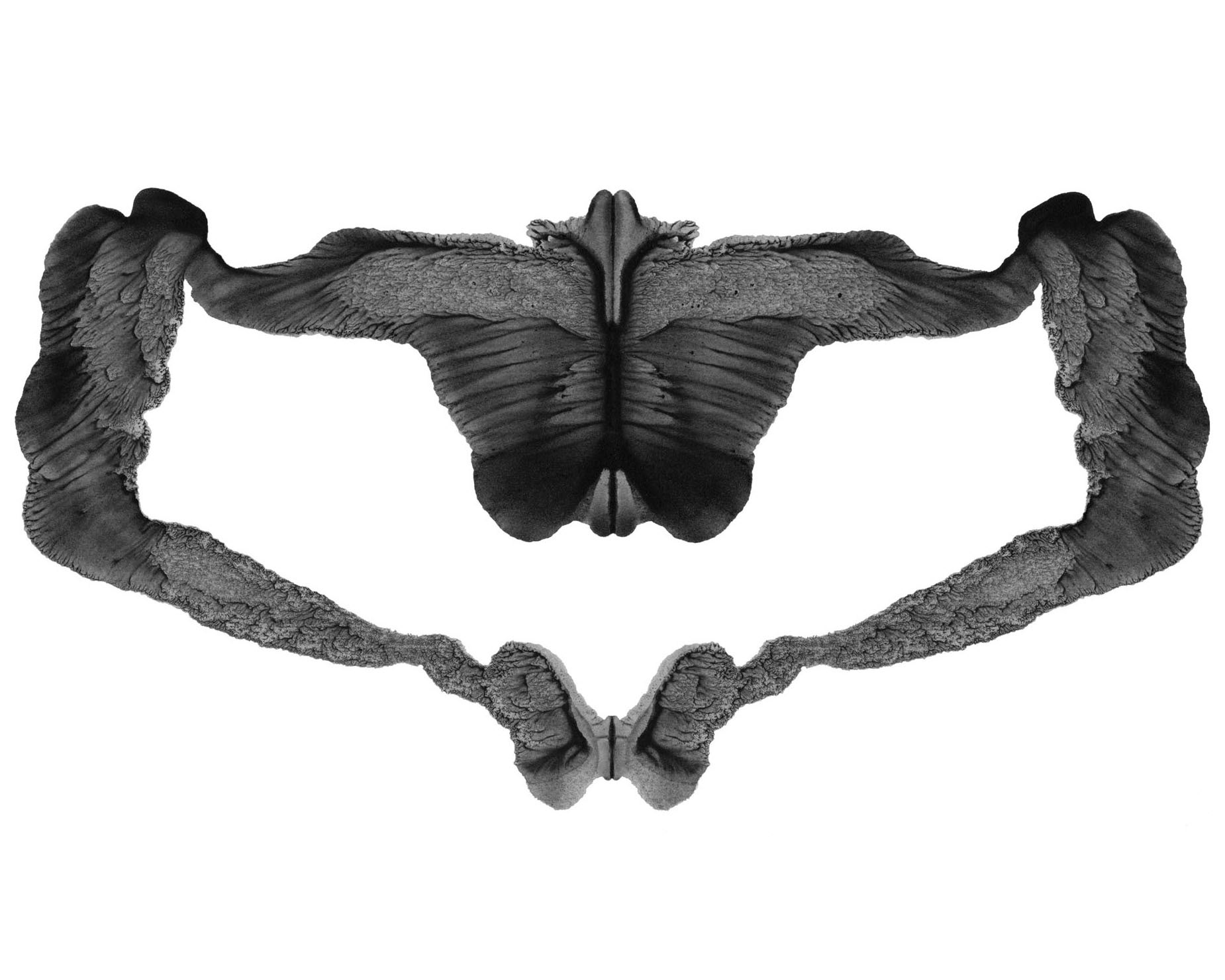
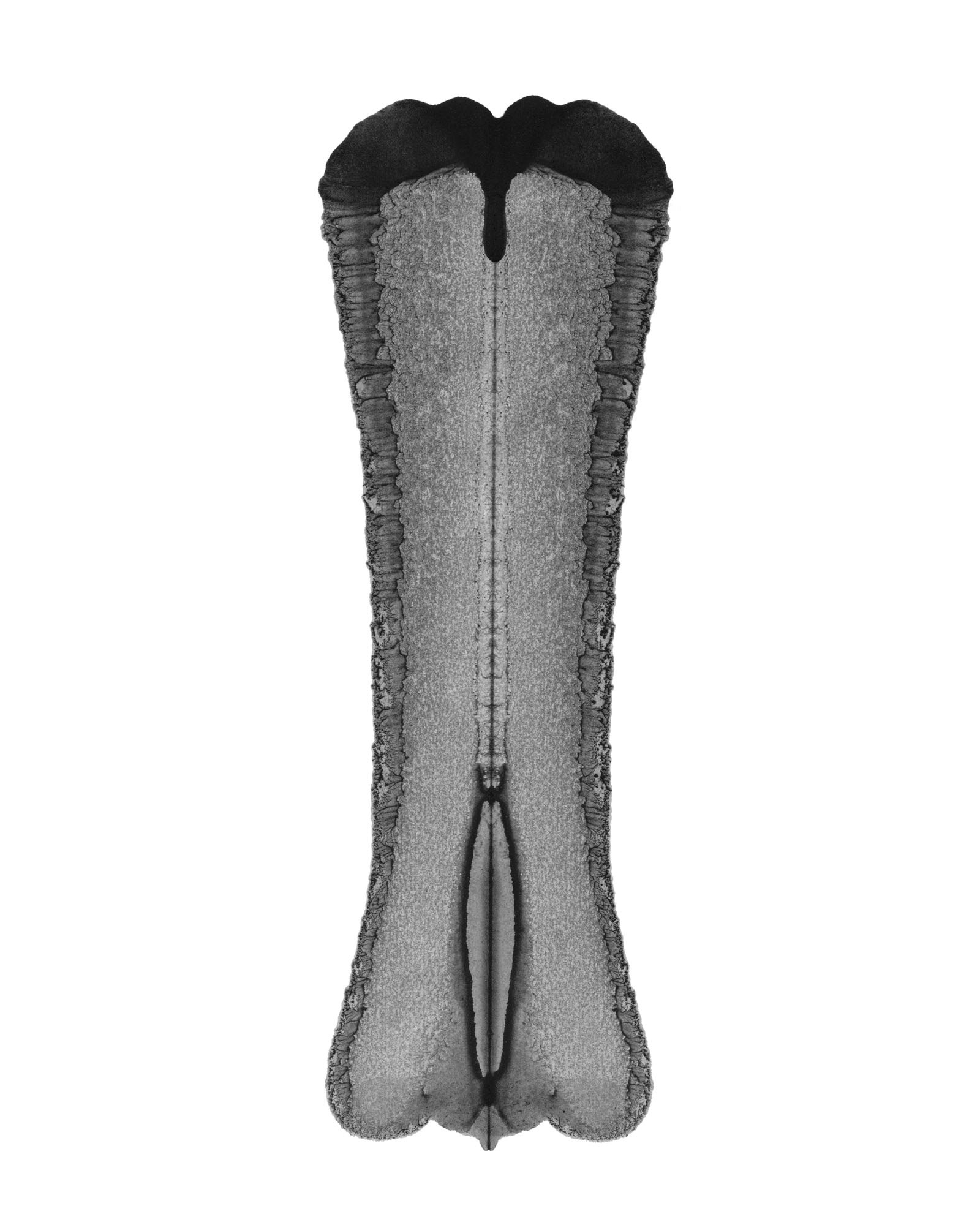
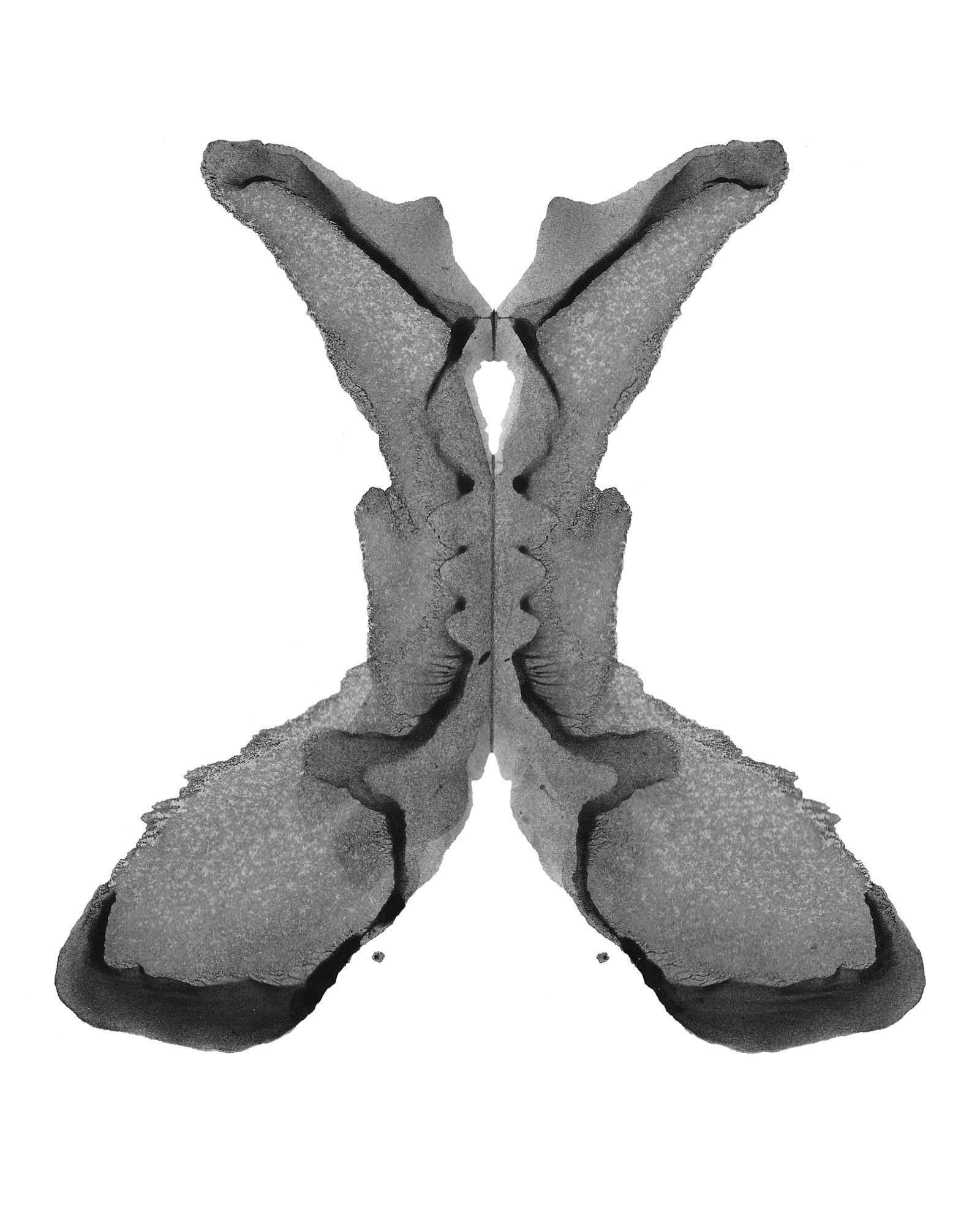
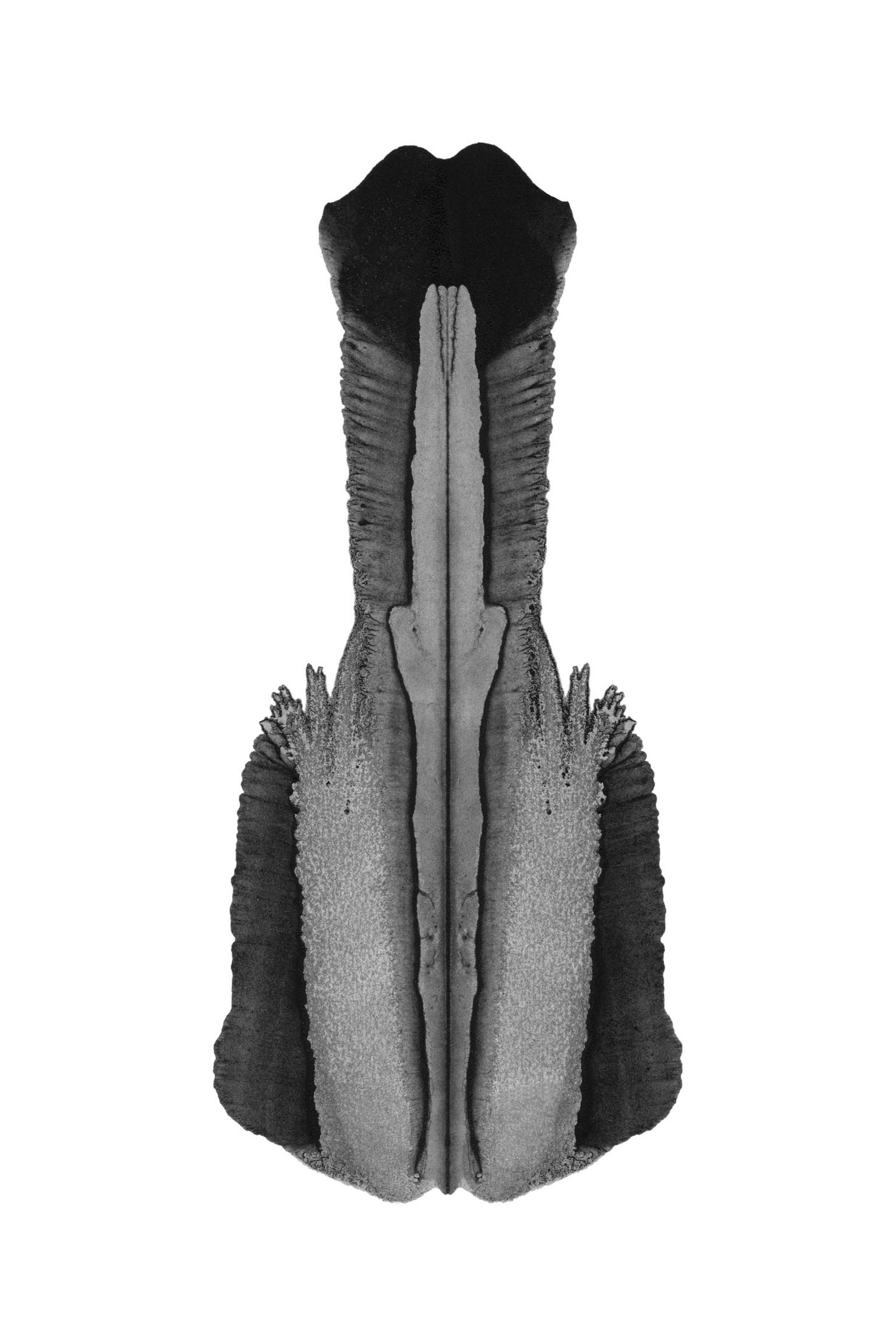
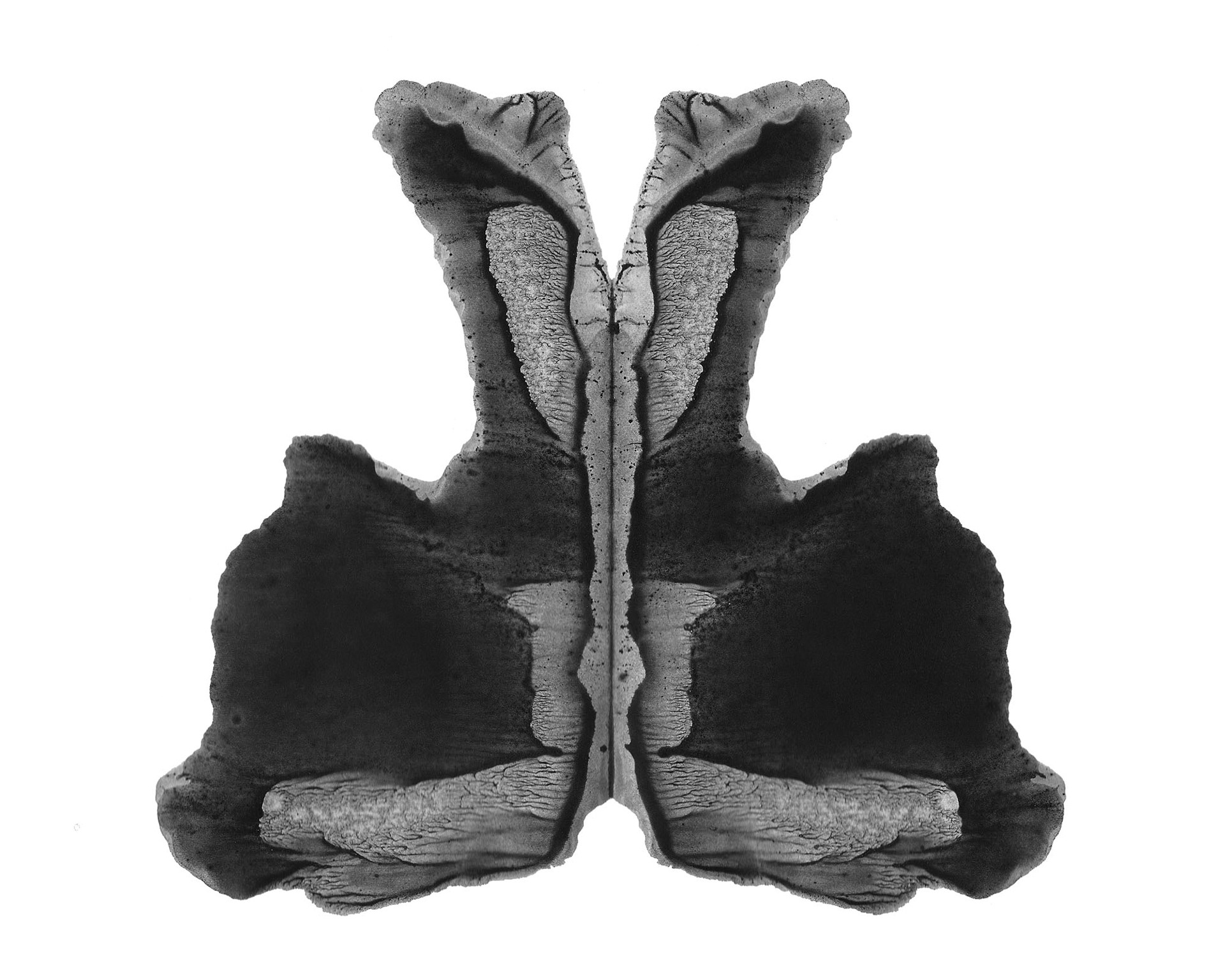
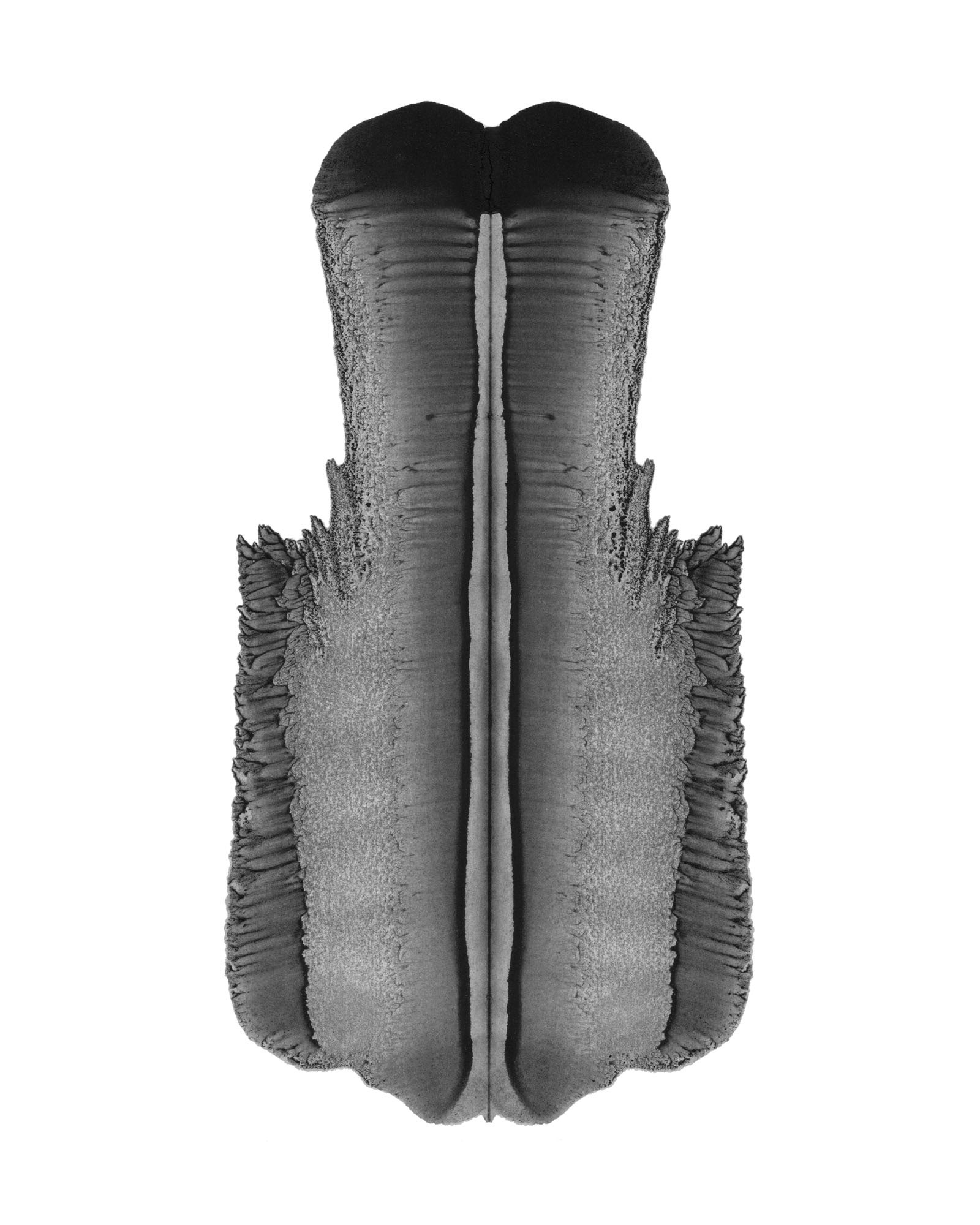
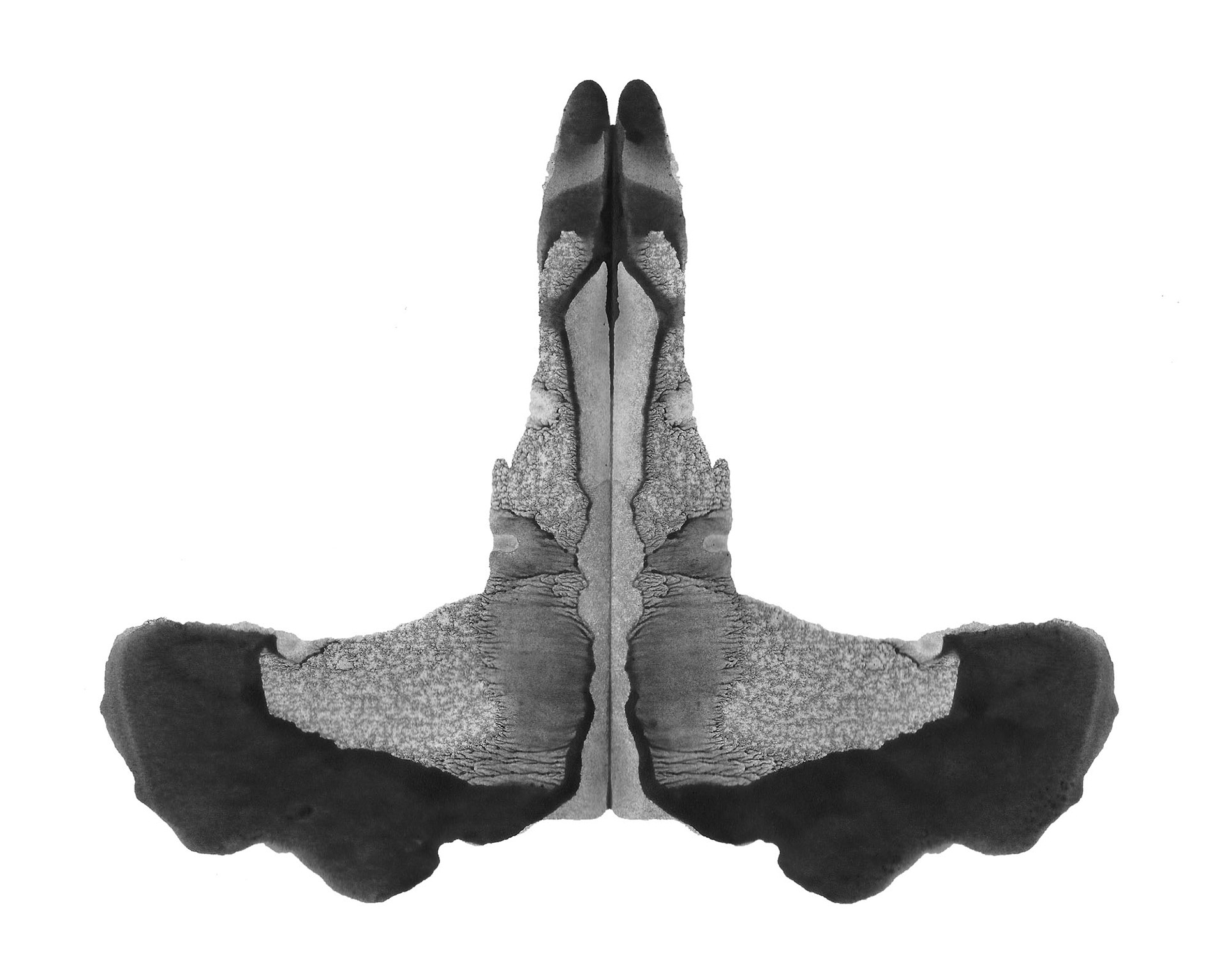
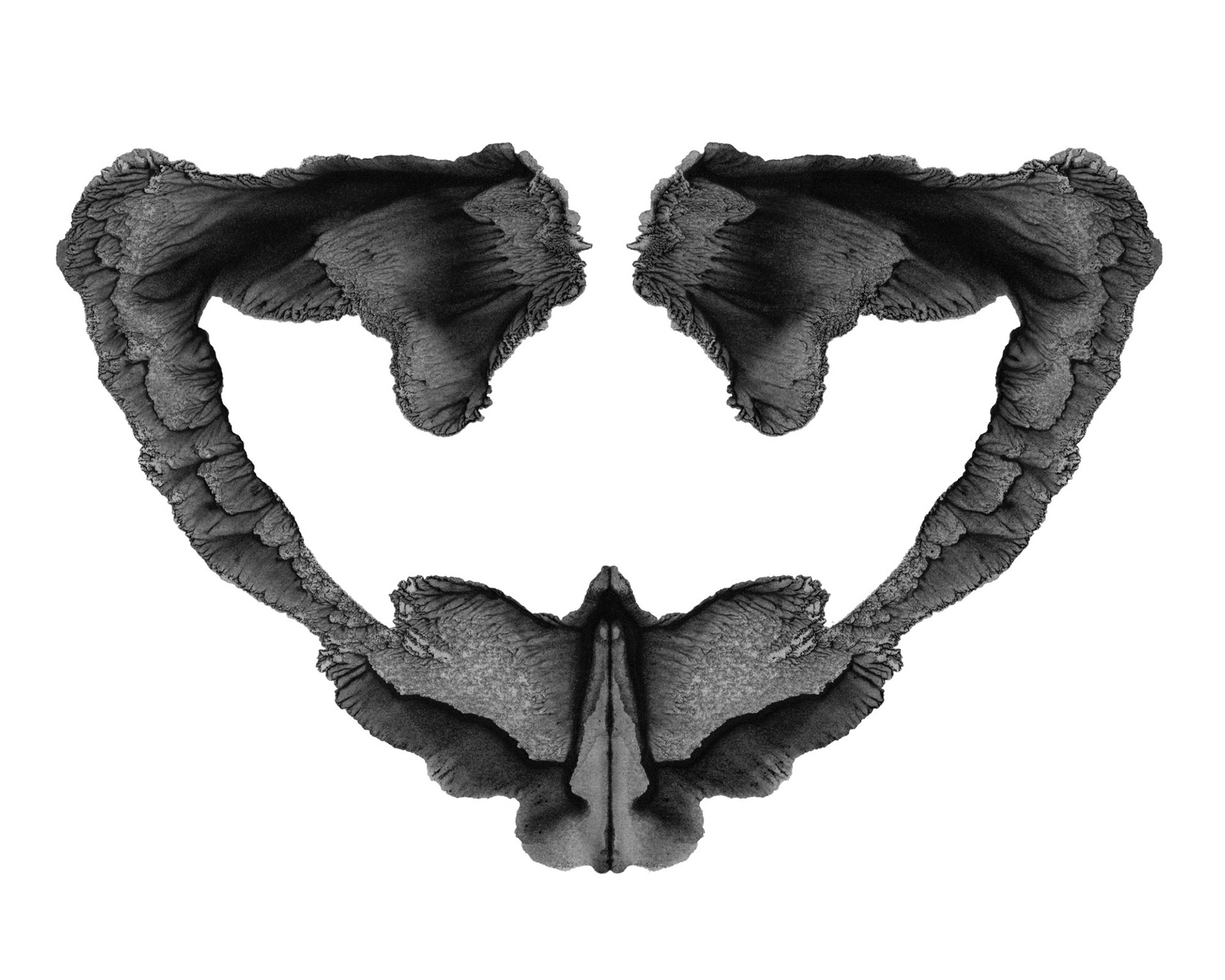
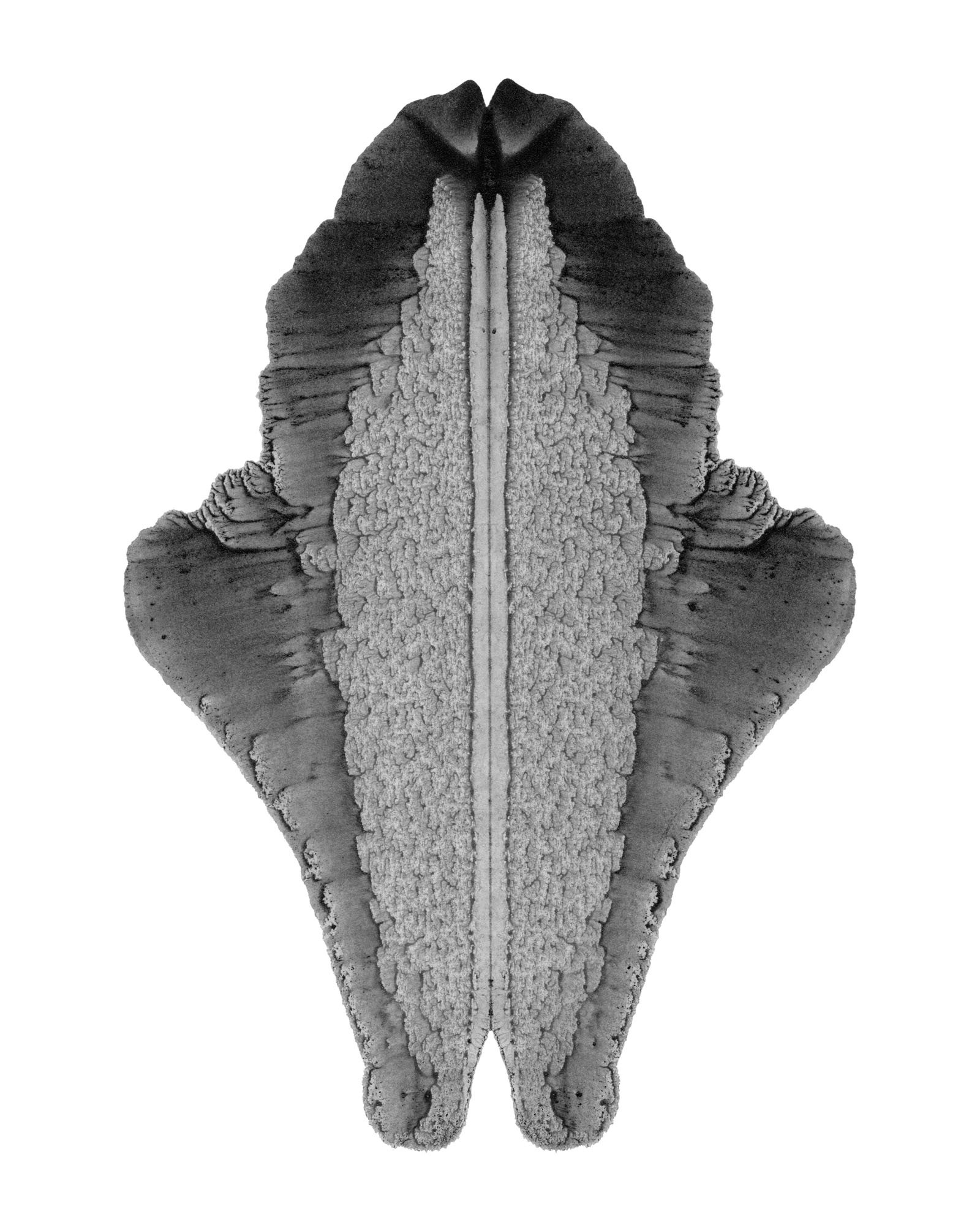
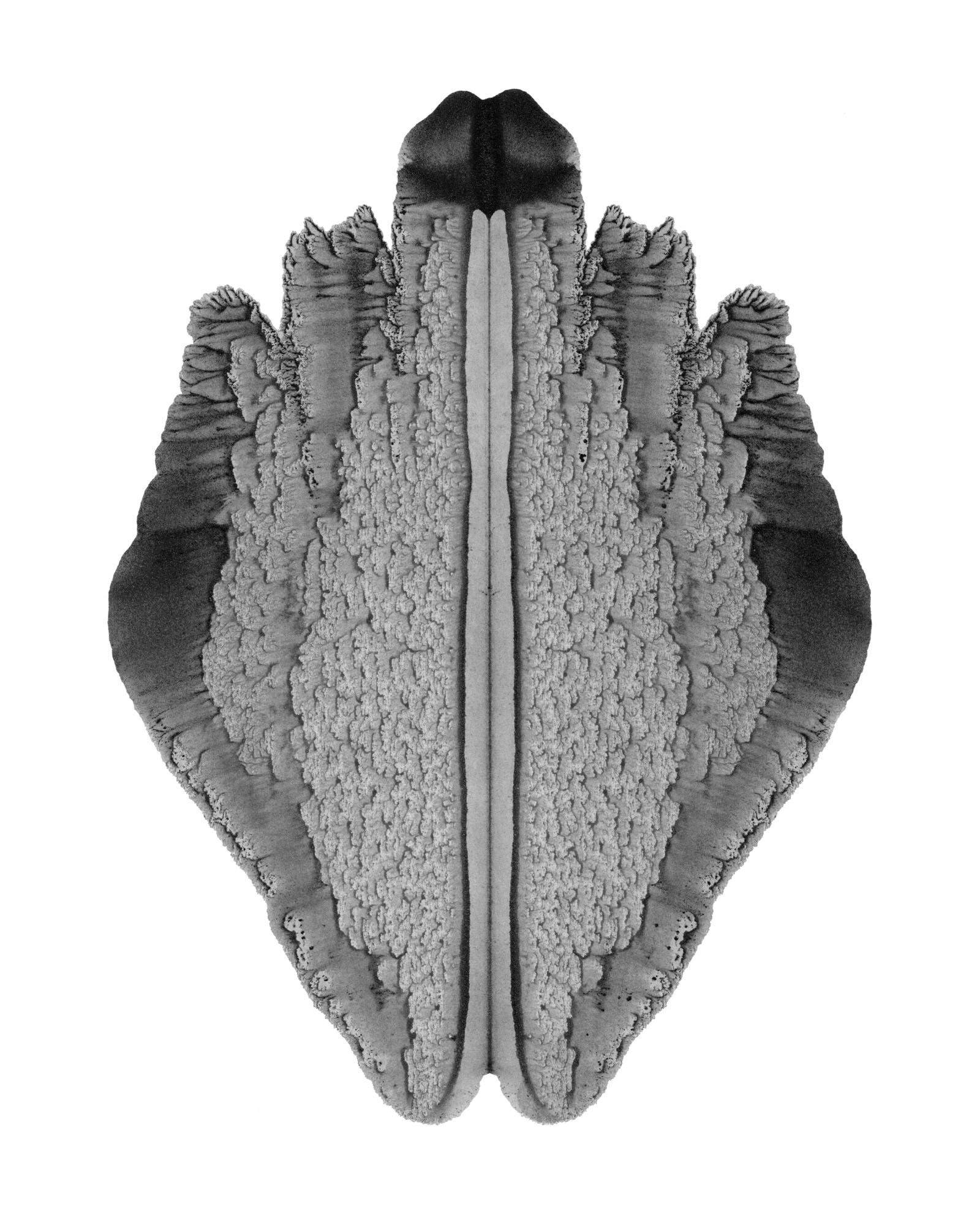
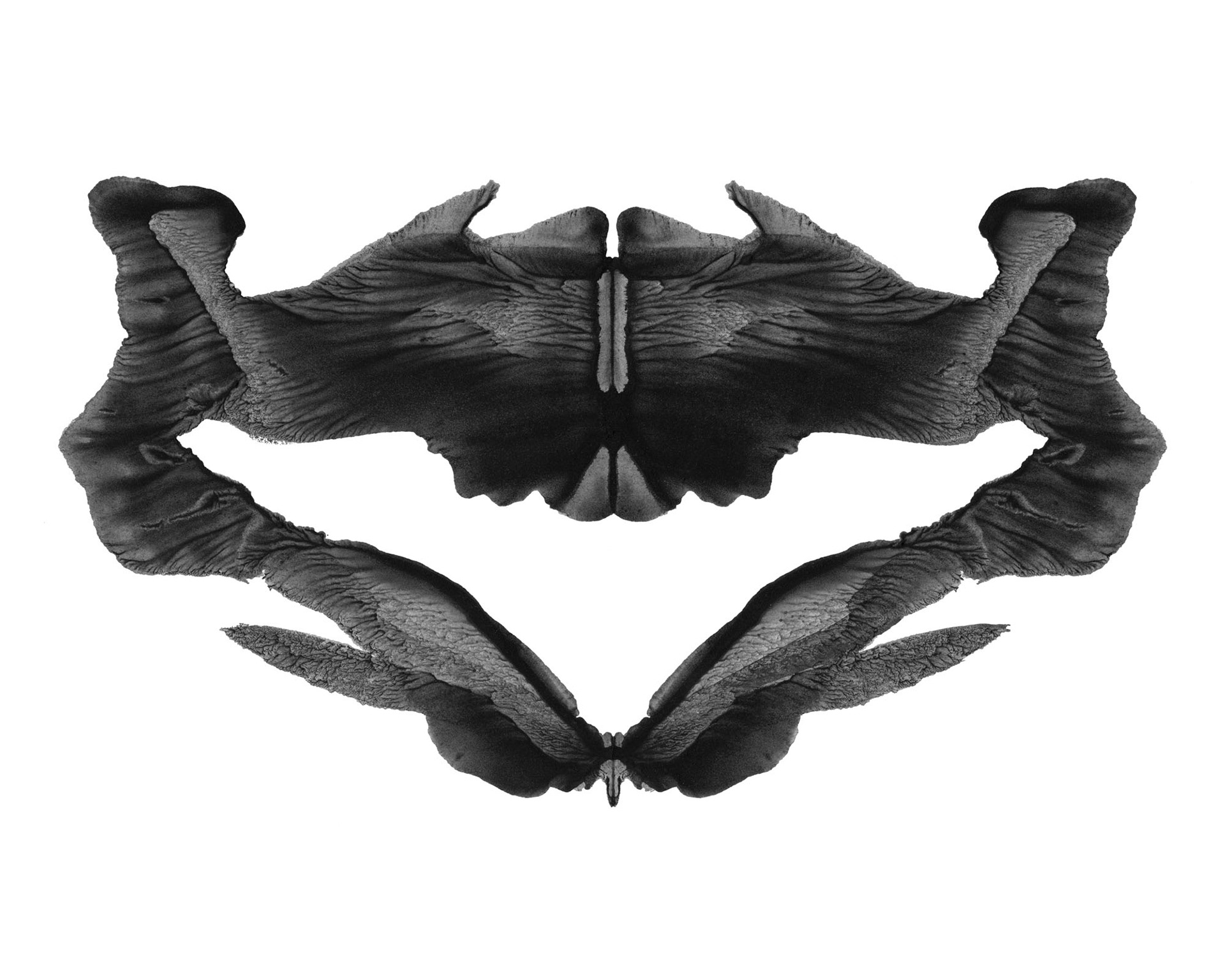
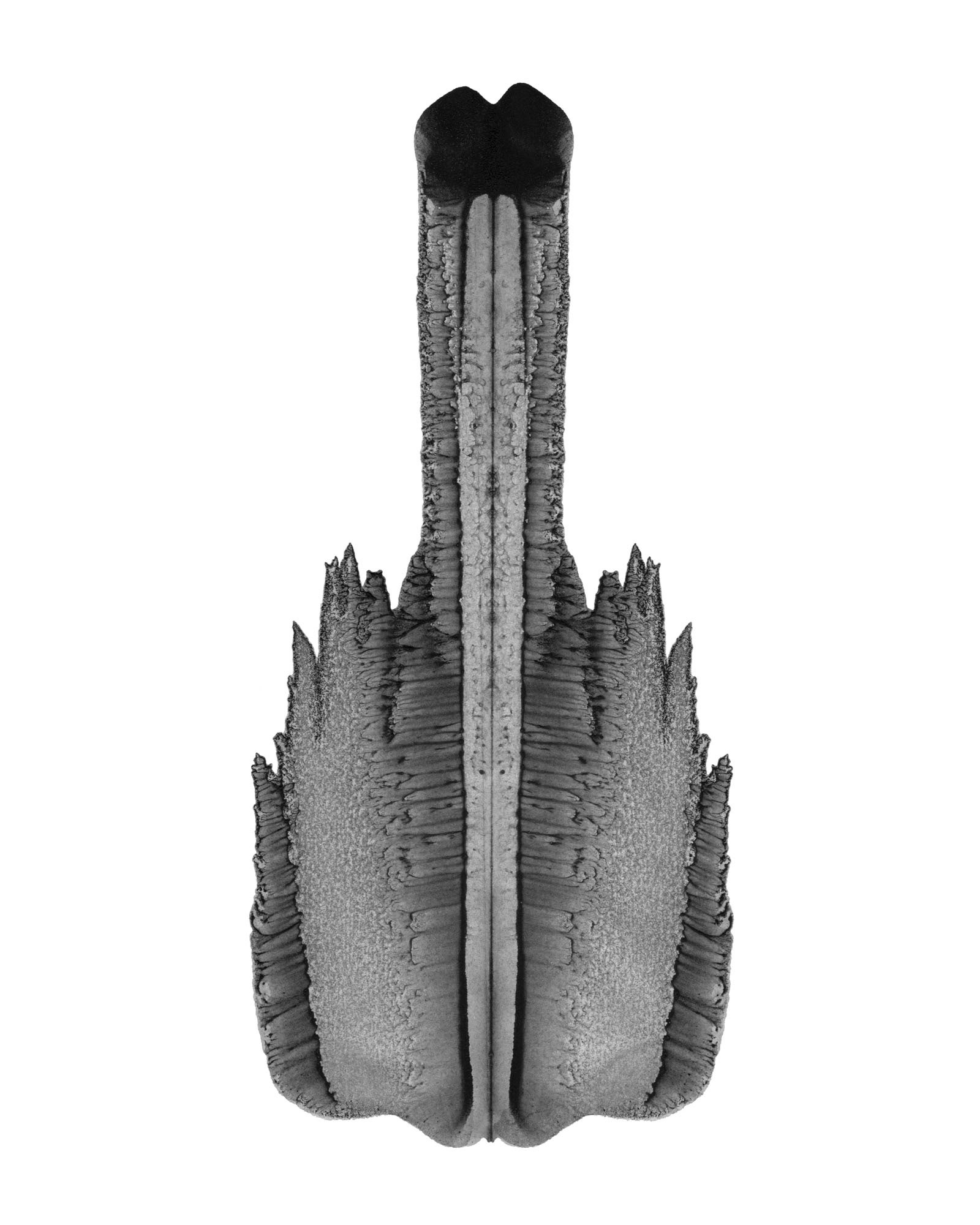
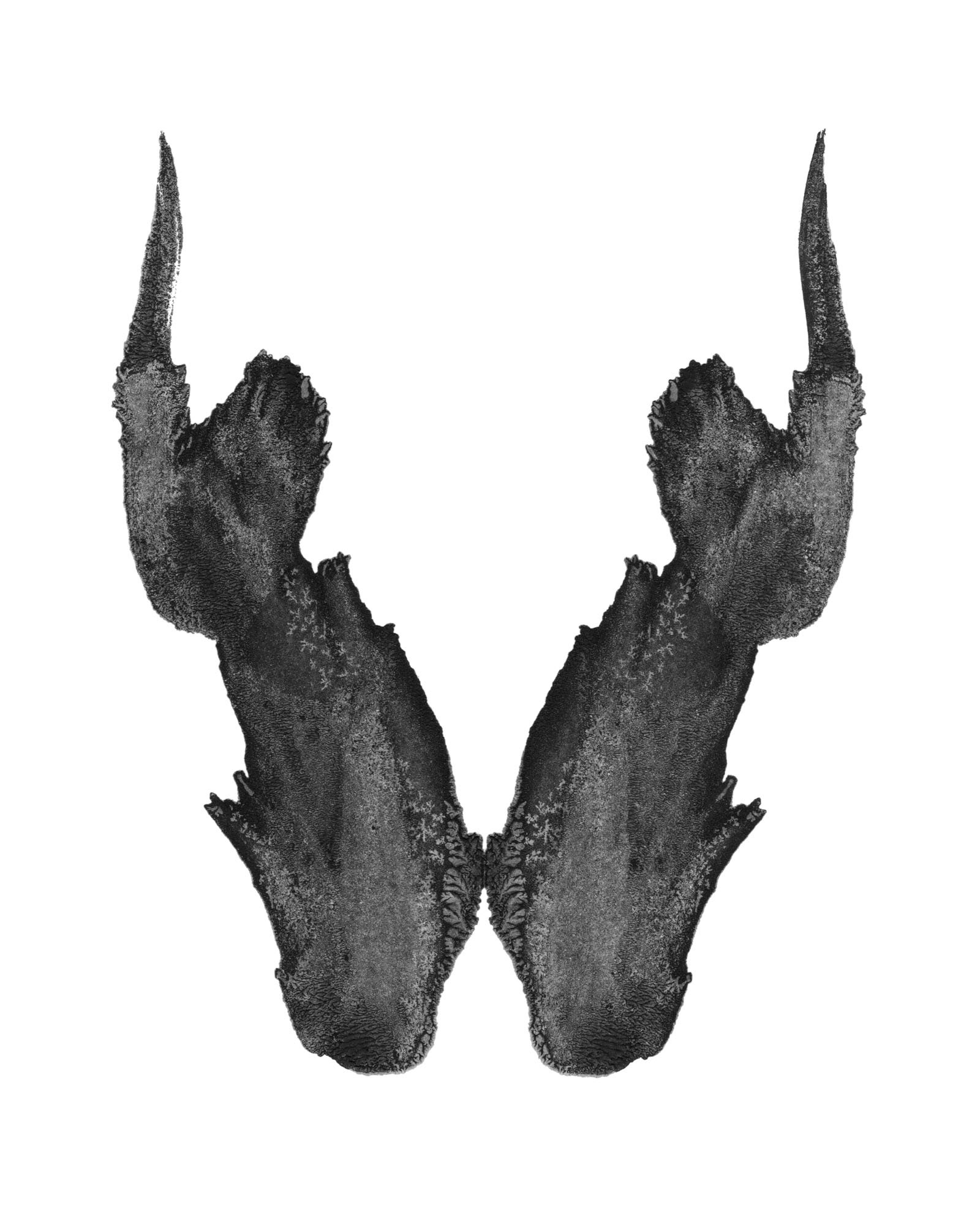
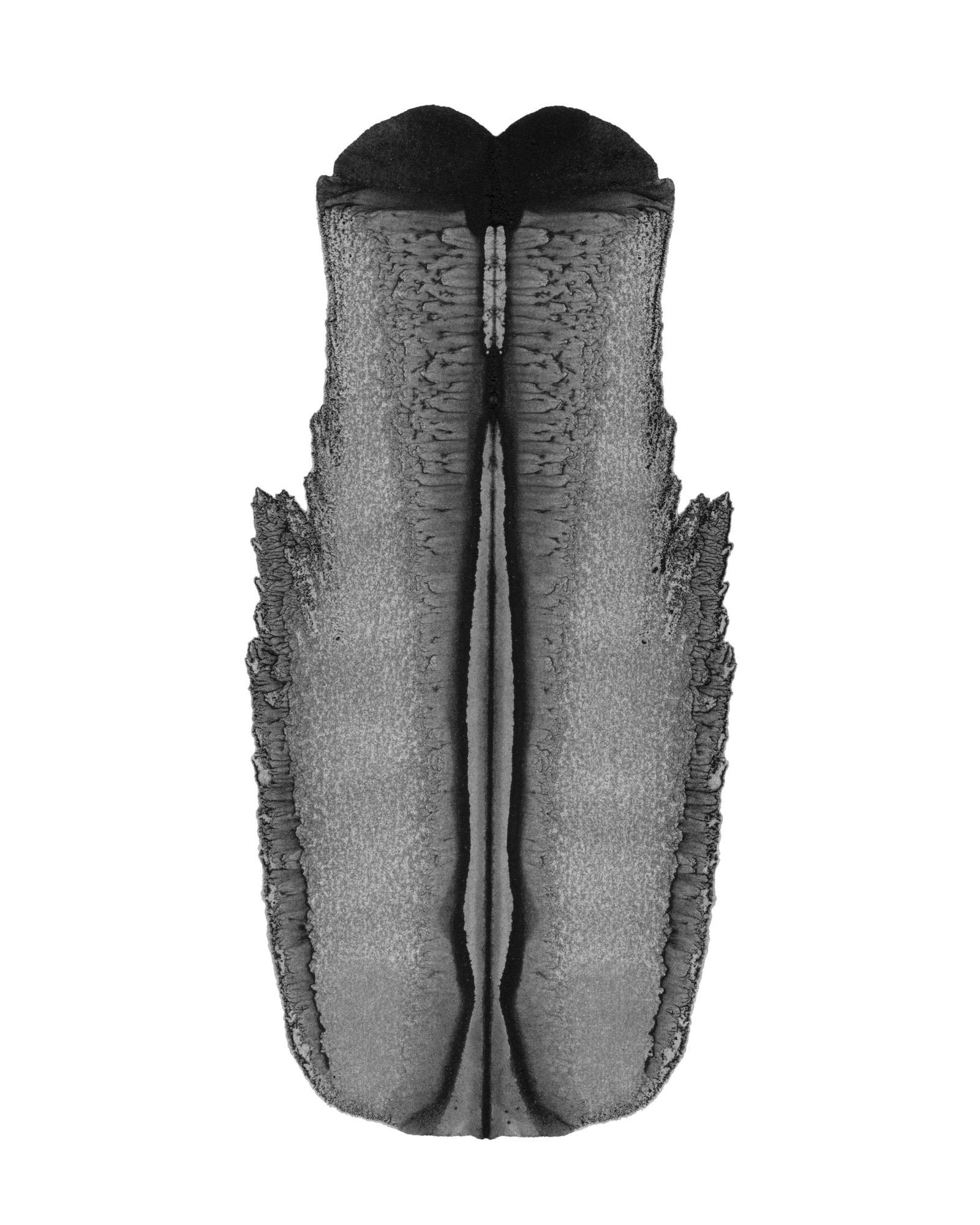
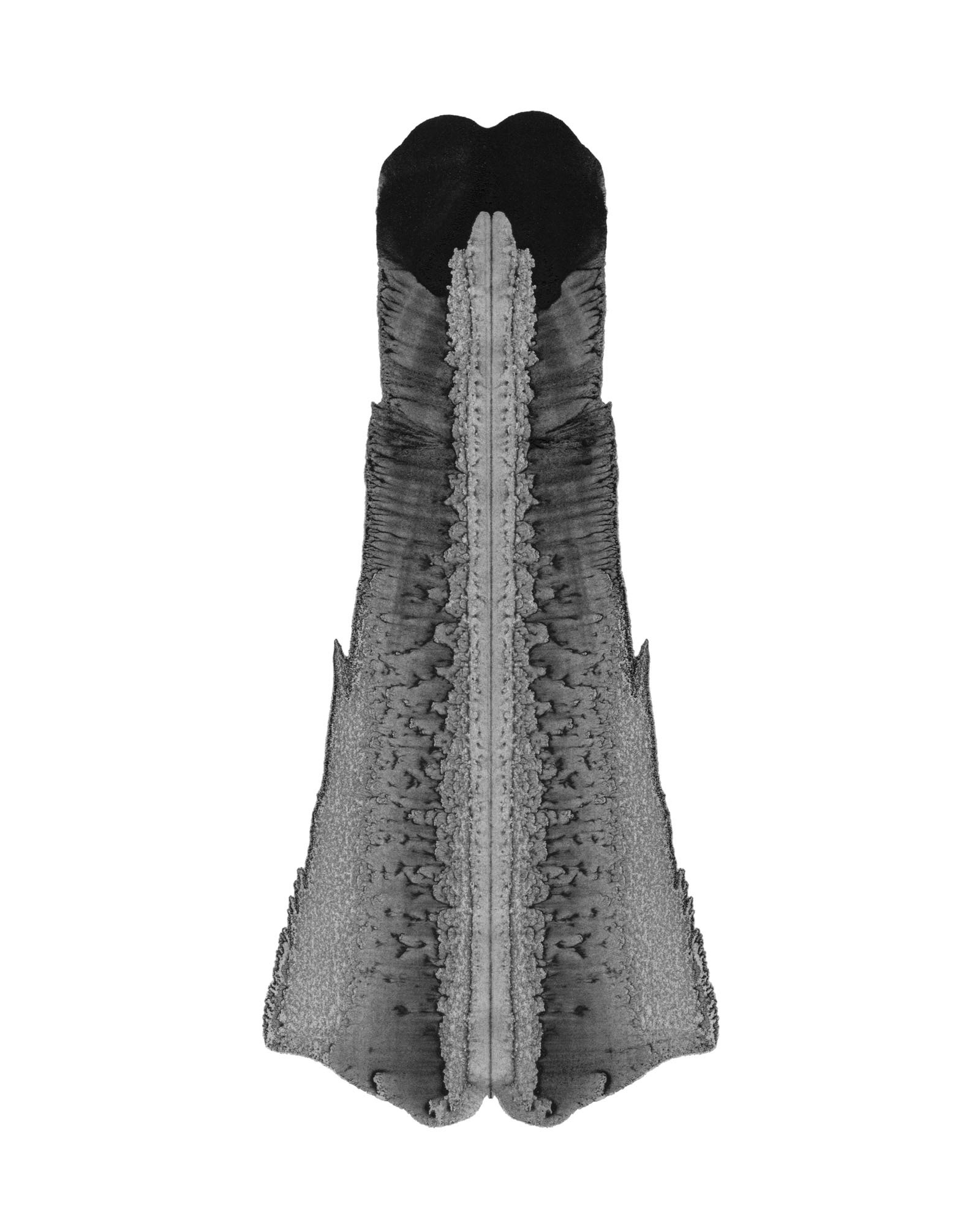
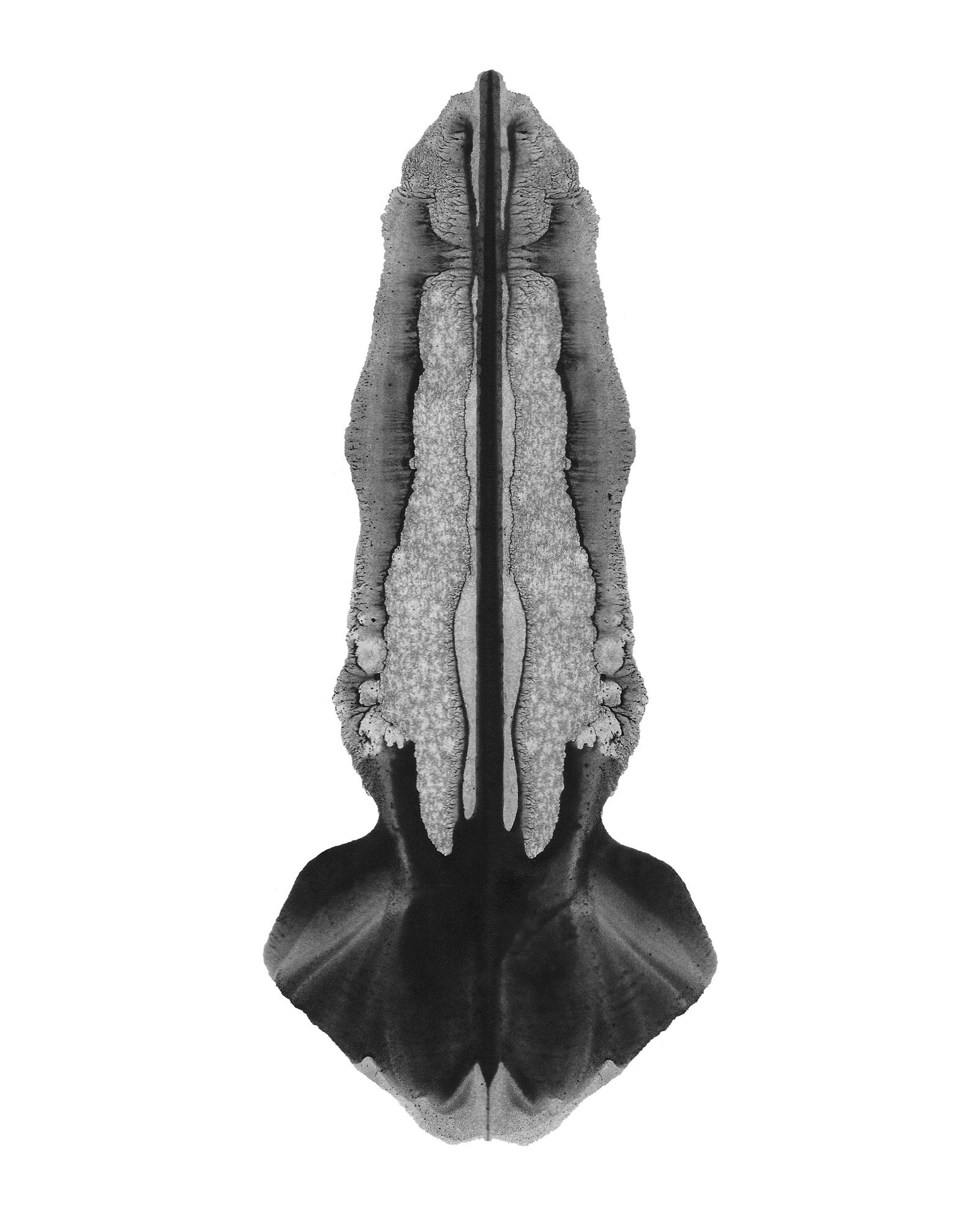
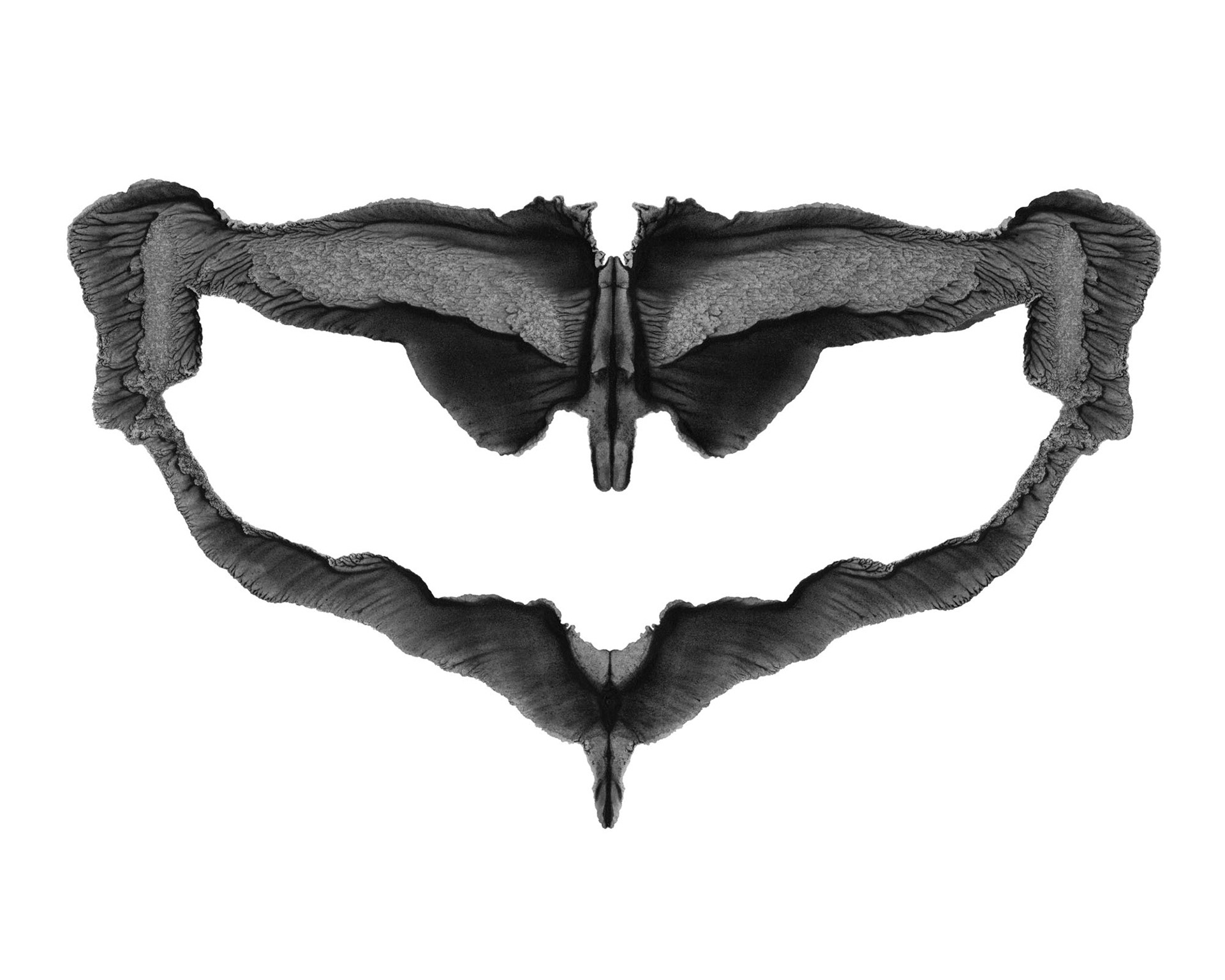
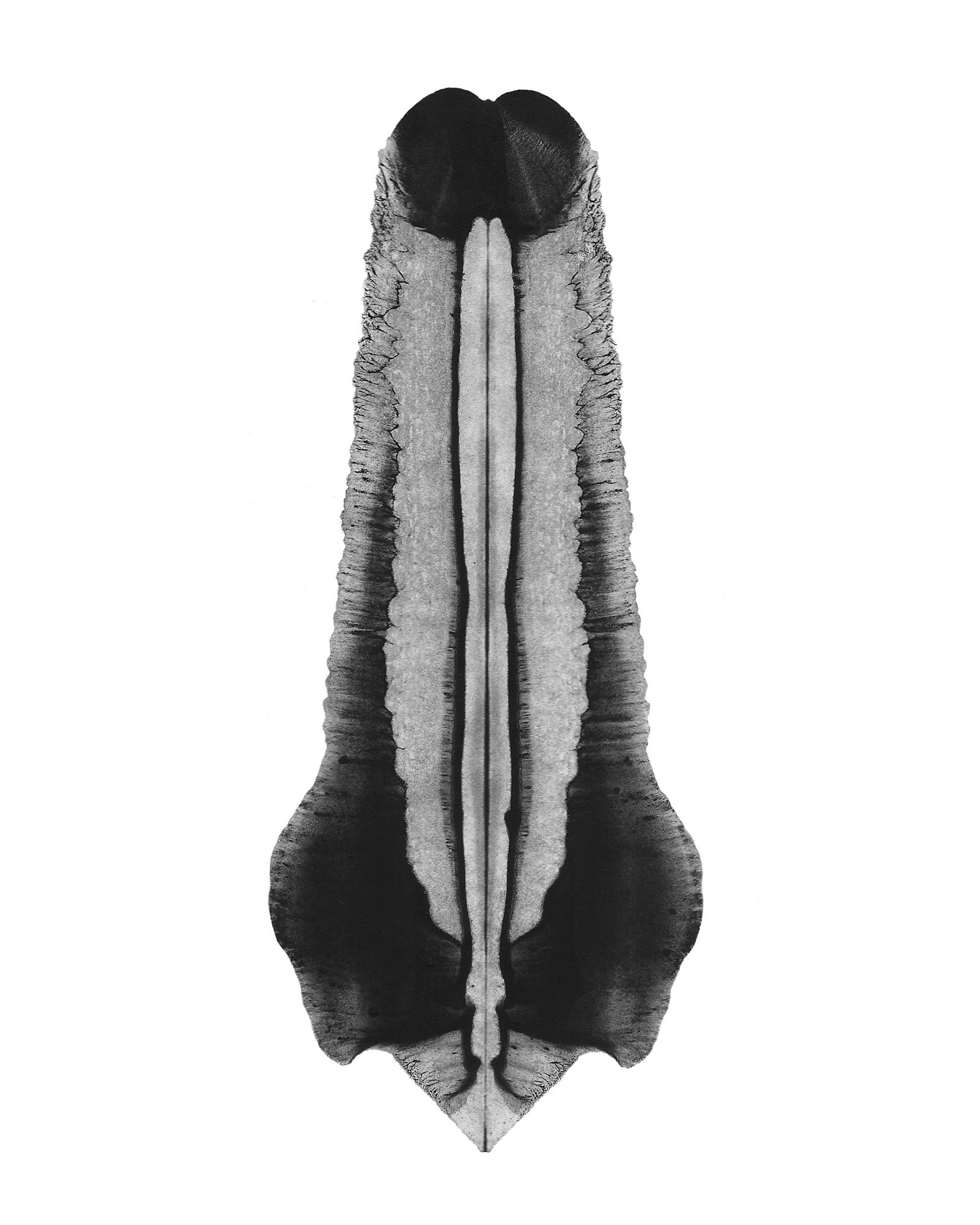
'Decalcomania', 2012, materials: paint and paper, size: Max A4
...
Blood Soup..
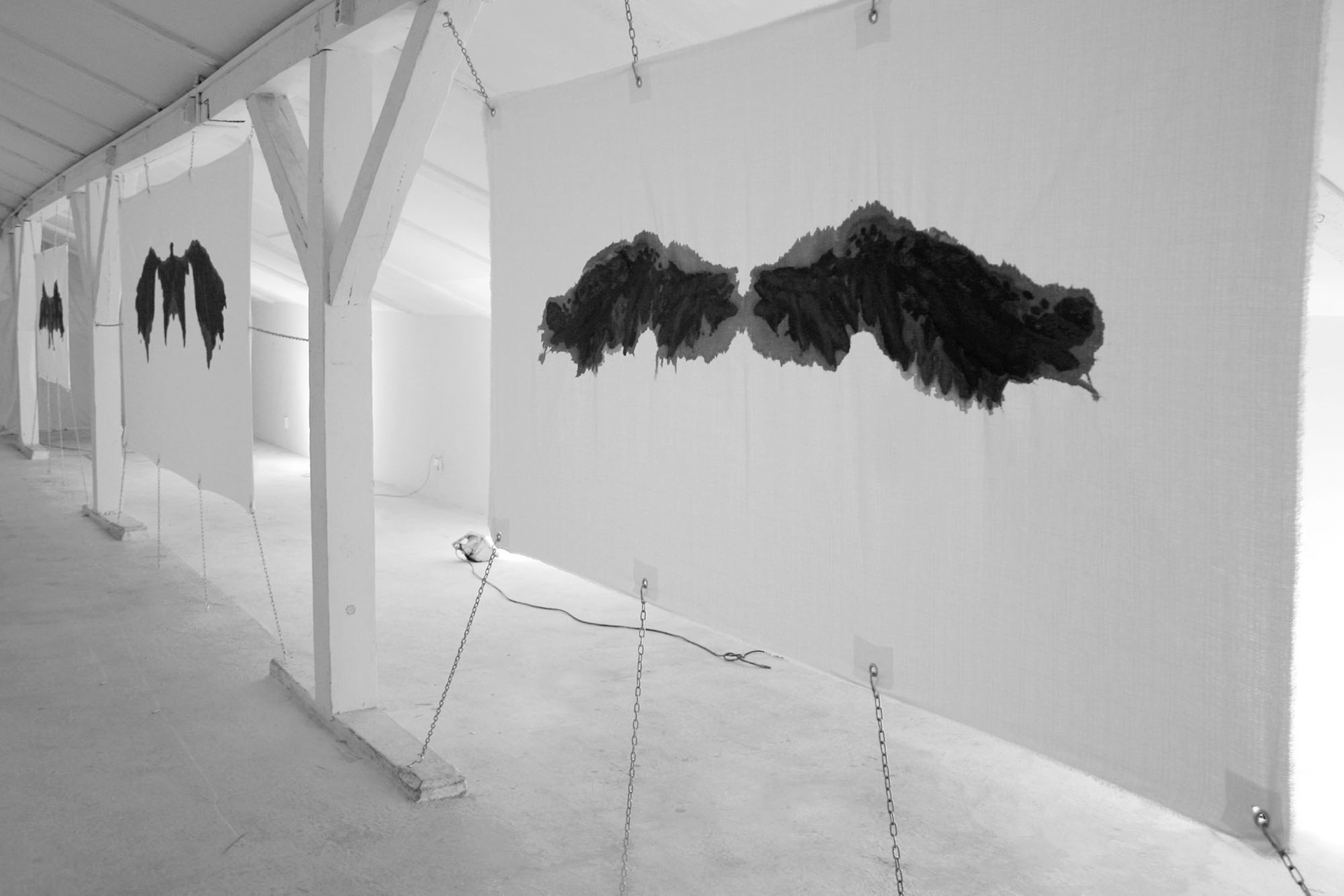
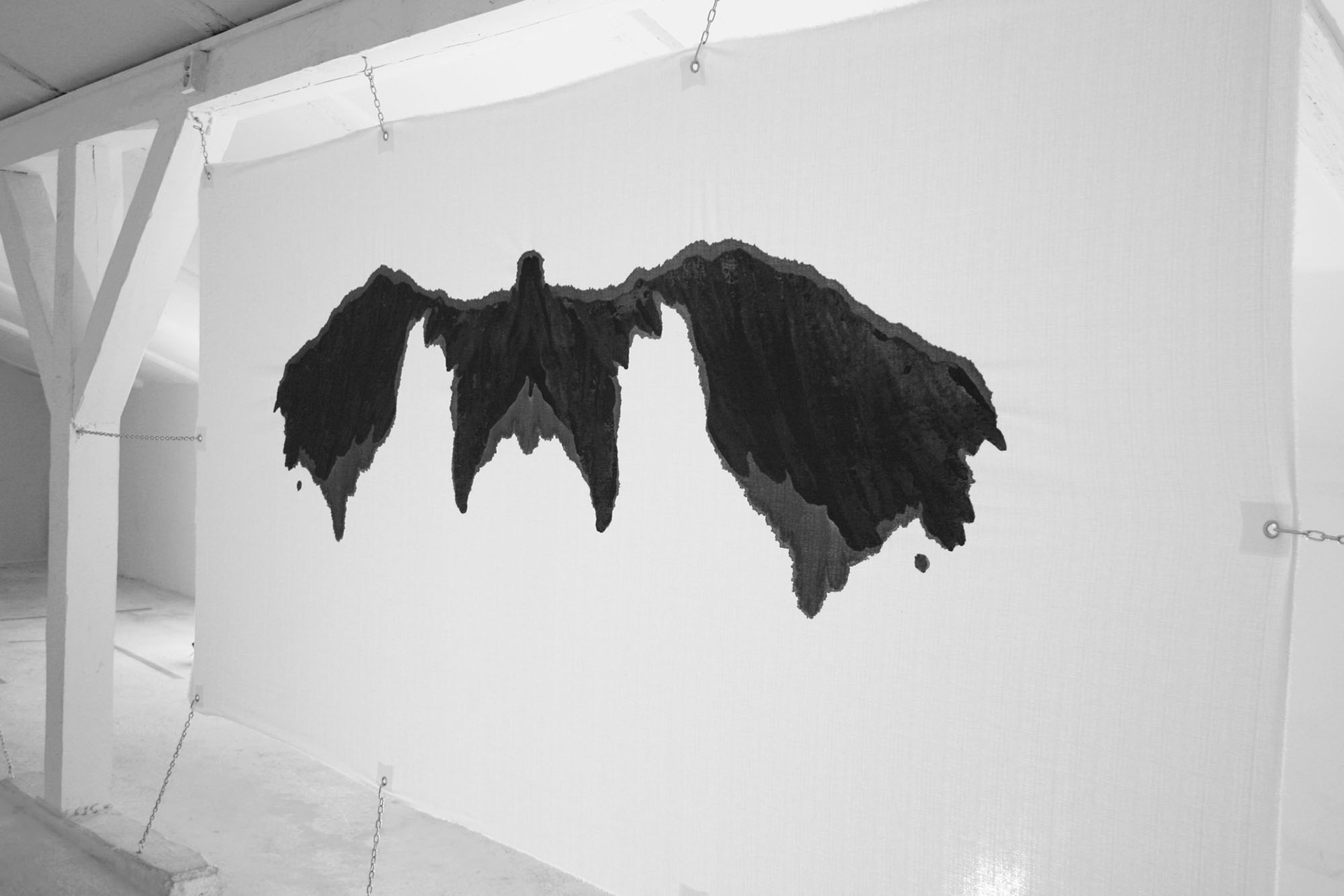
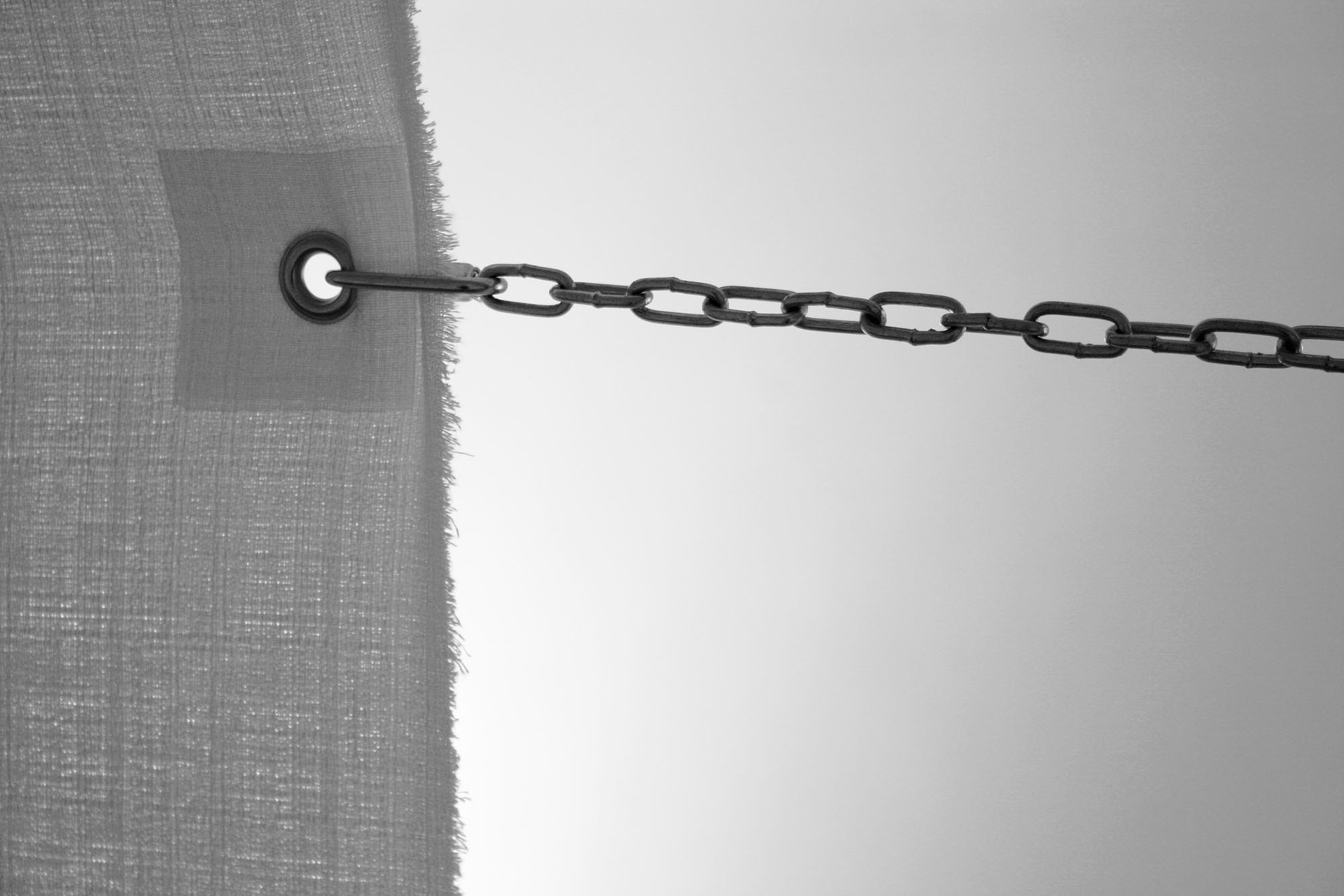
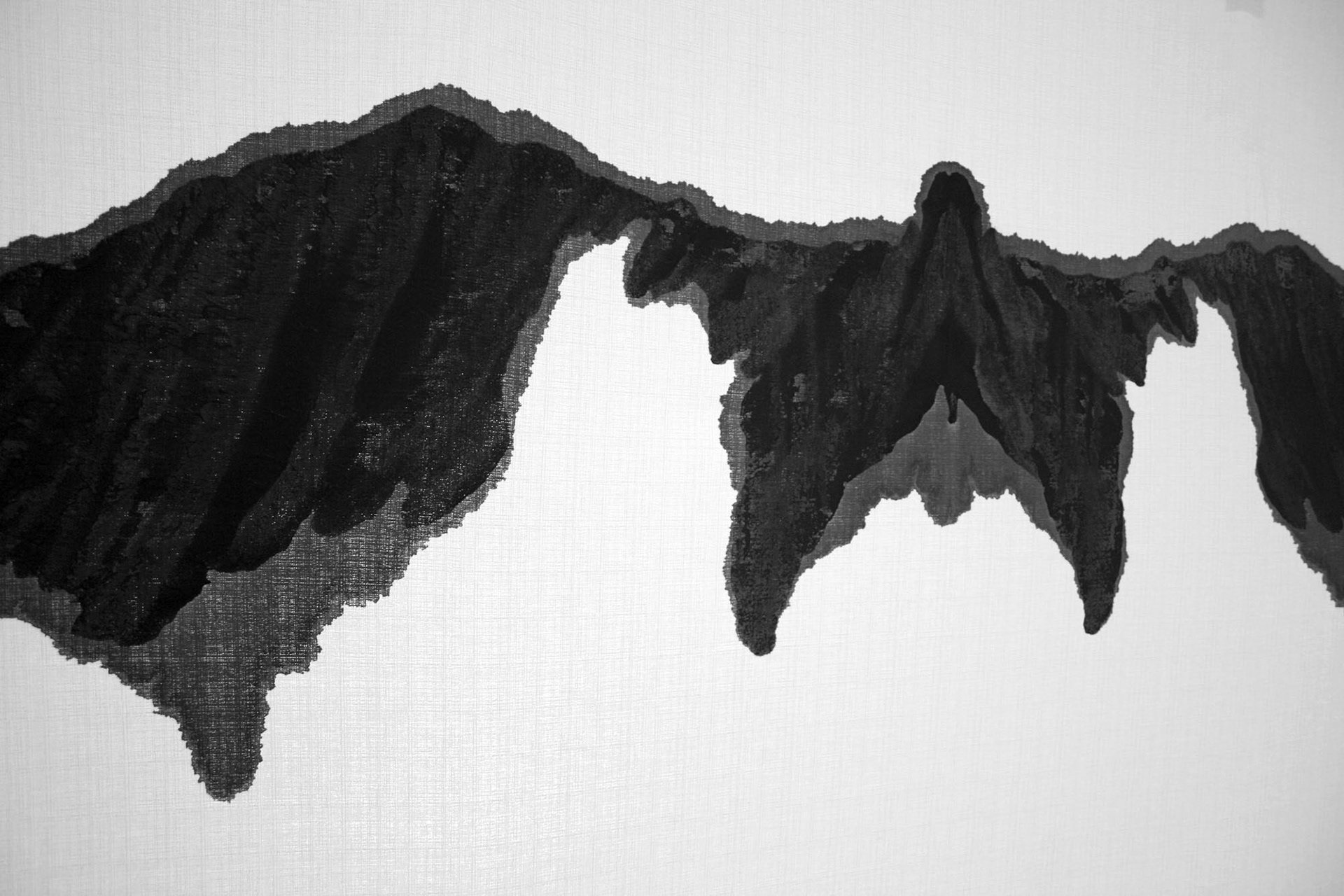
"Blood Soup" is a triptych of white fabrics stretched on chains, with the middle one being the largest (1.8 x 2.8m). On the fabrics, there are red, symmetrically imprinted, wing-like shapes, which are the result of a "controlled accident." They are also a continuation of my favorite, once-popular play of obtaining symmetrical shapes by folding a sheet of paper in half with paint on it. The technique is used for the worldwide known Rorschach Test. In this case, as the title indicates, the paint is duck blood. In Poland, we use it to make one of the traditional soups. Here, the work is consumed in the aesthetic sense. The ground is not paper but fabric, referring to the painting canvas. The whiteness and purity of the material contrast strongly with the "dirty" stains. The whole piece is a kind of "triptych of Turin shrouds," created using a technique that serves both as a form of artistic play and as a psychological test.